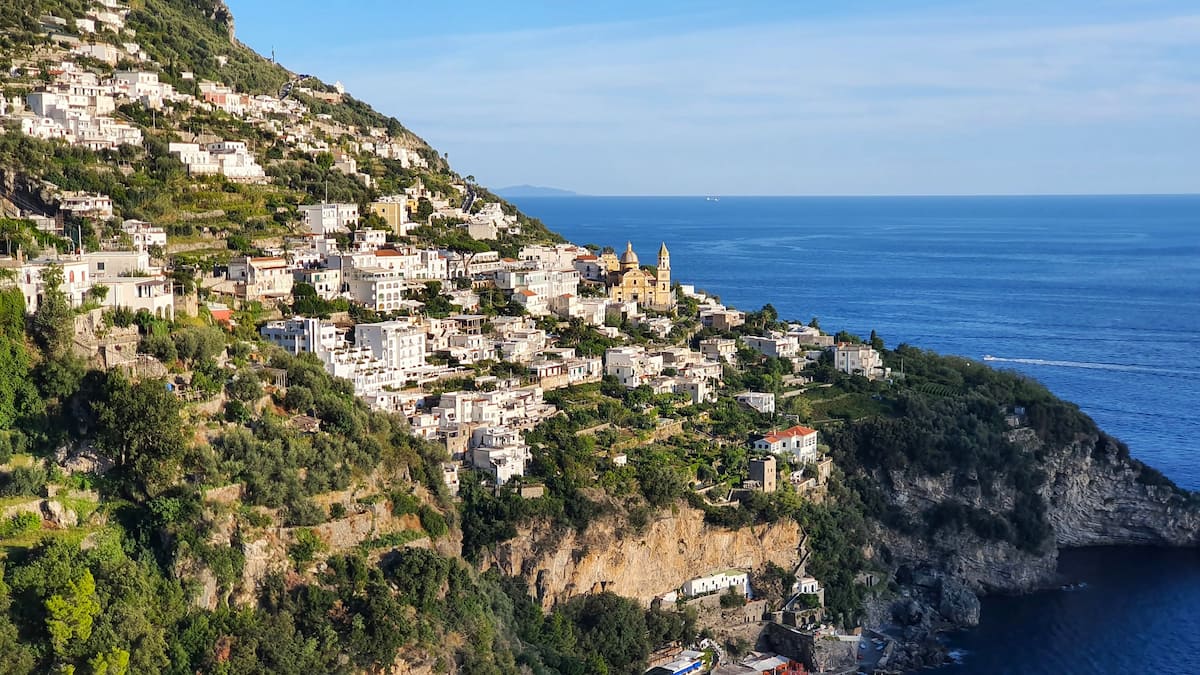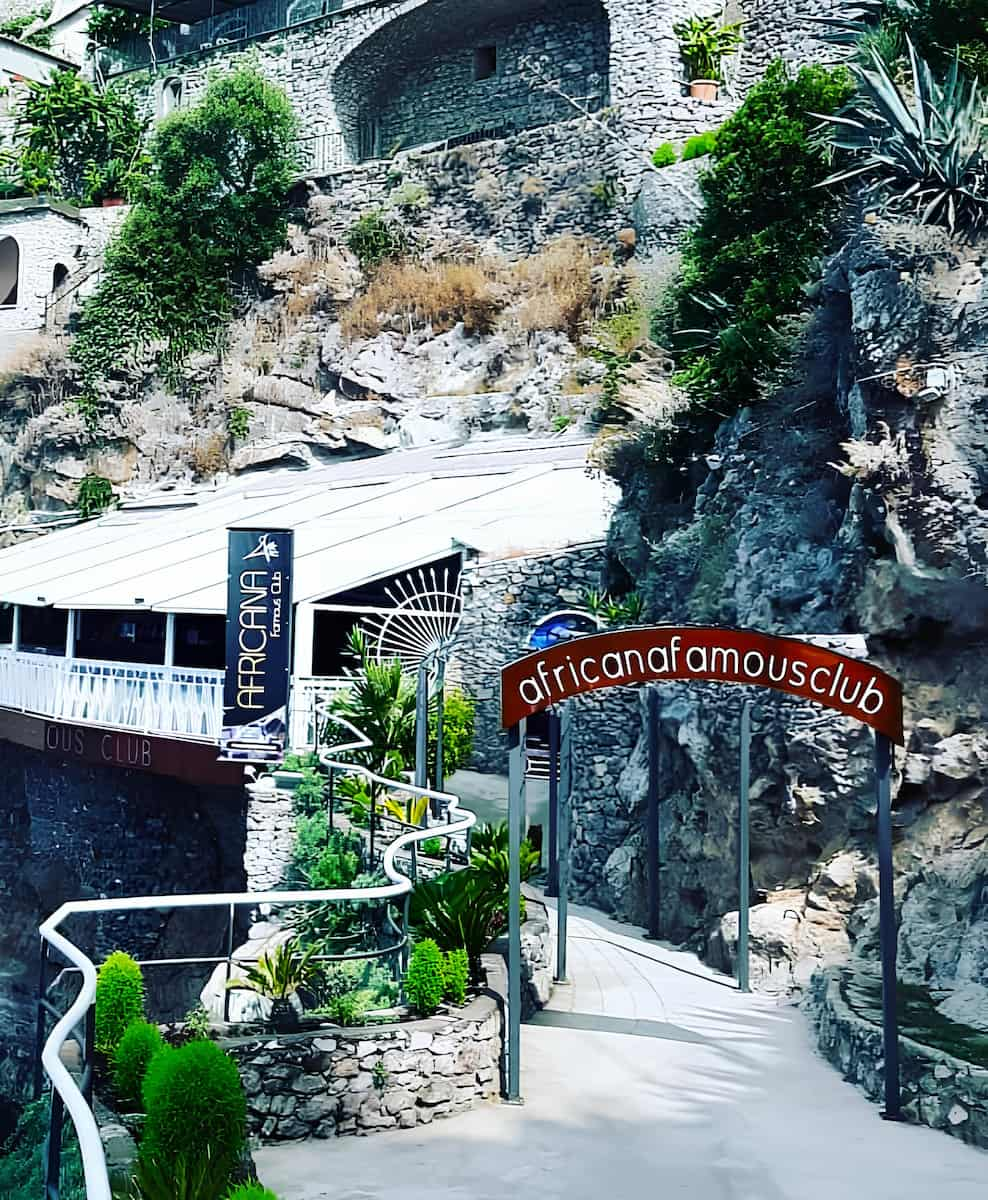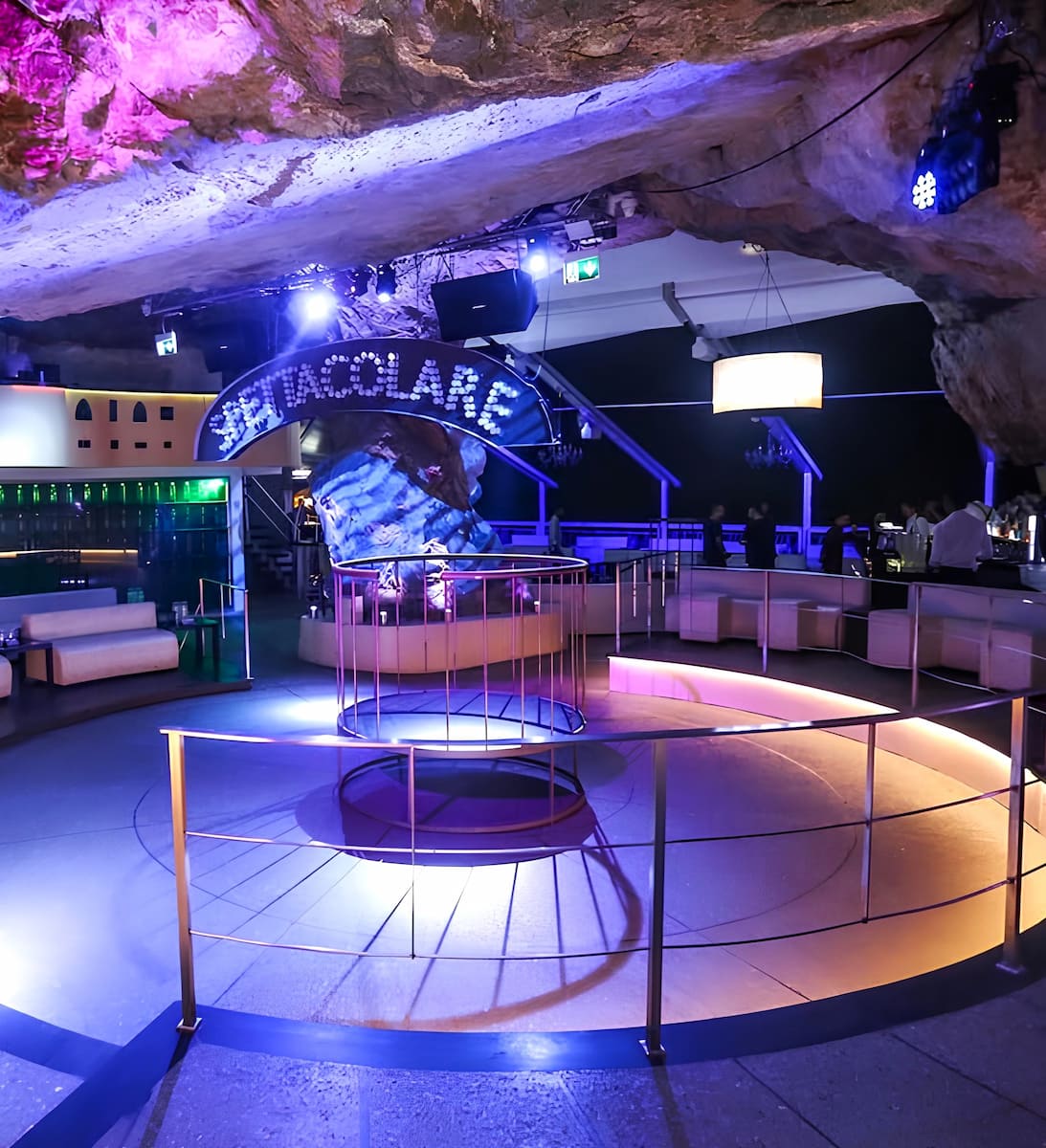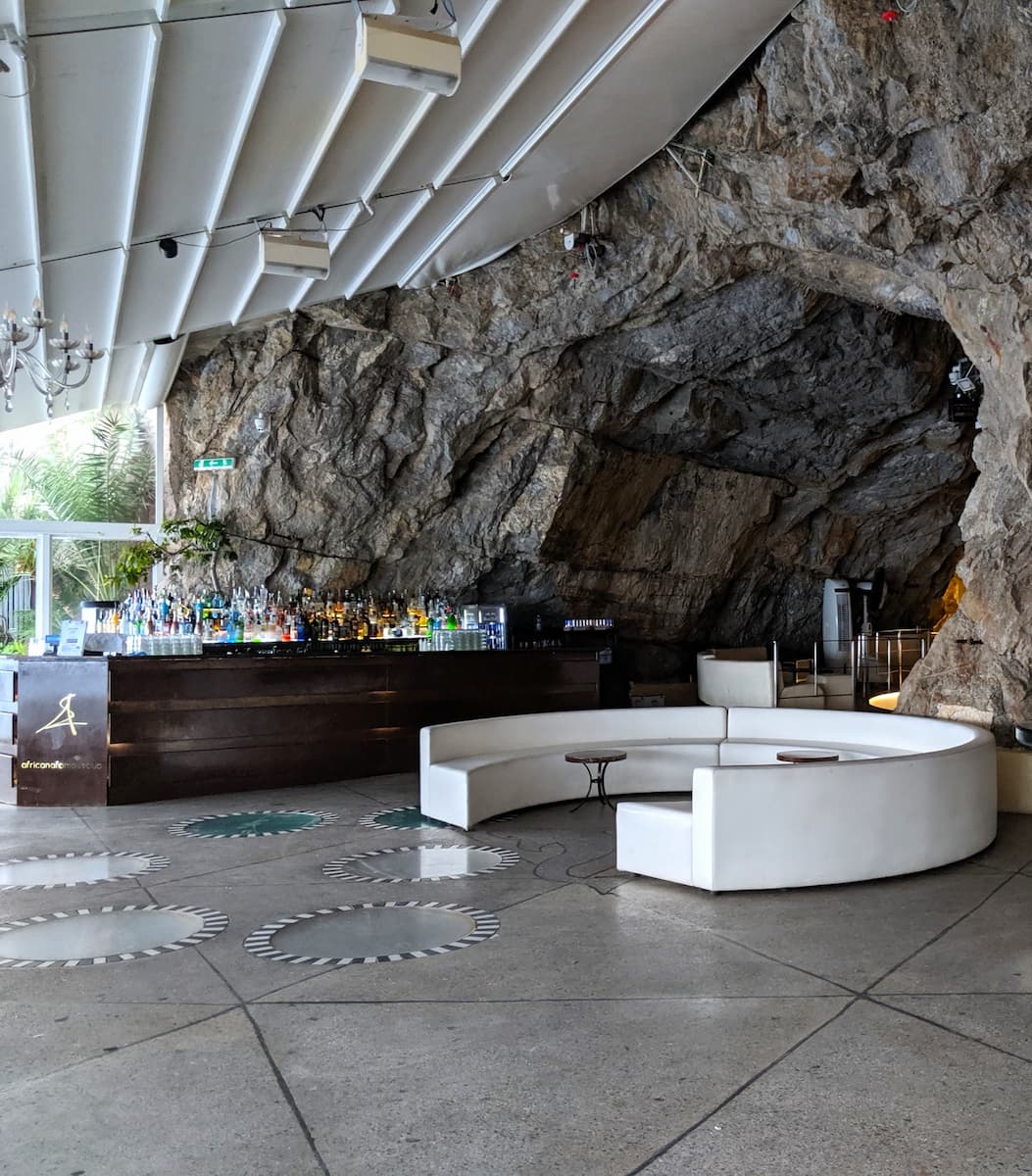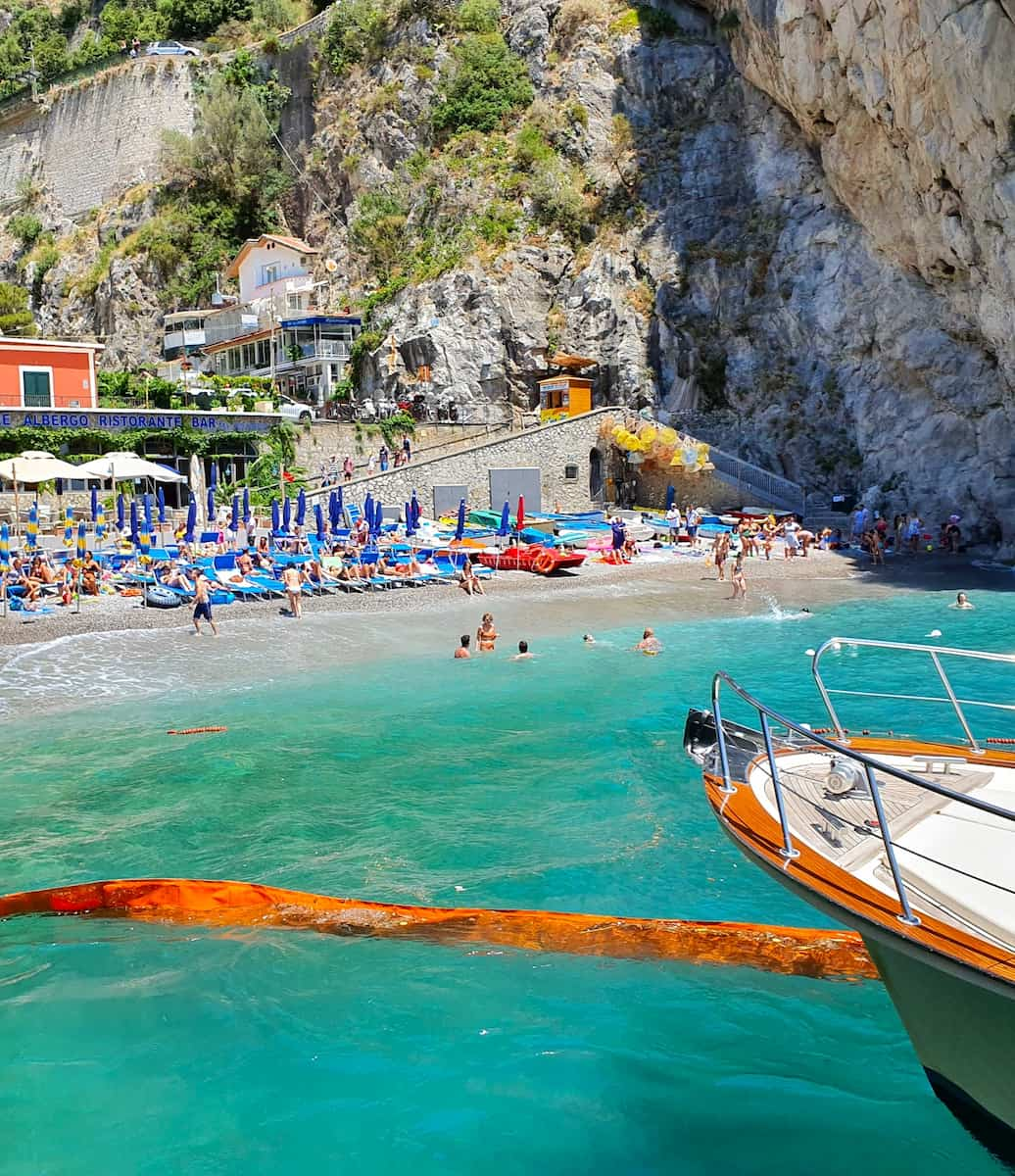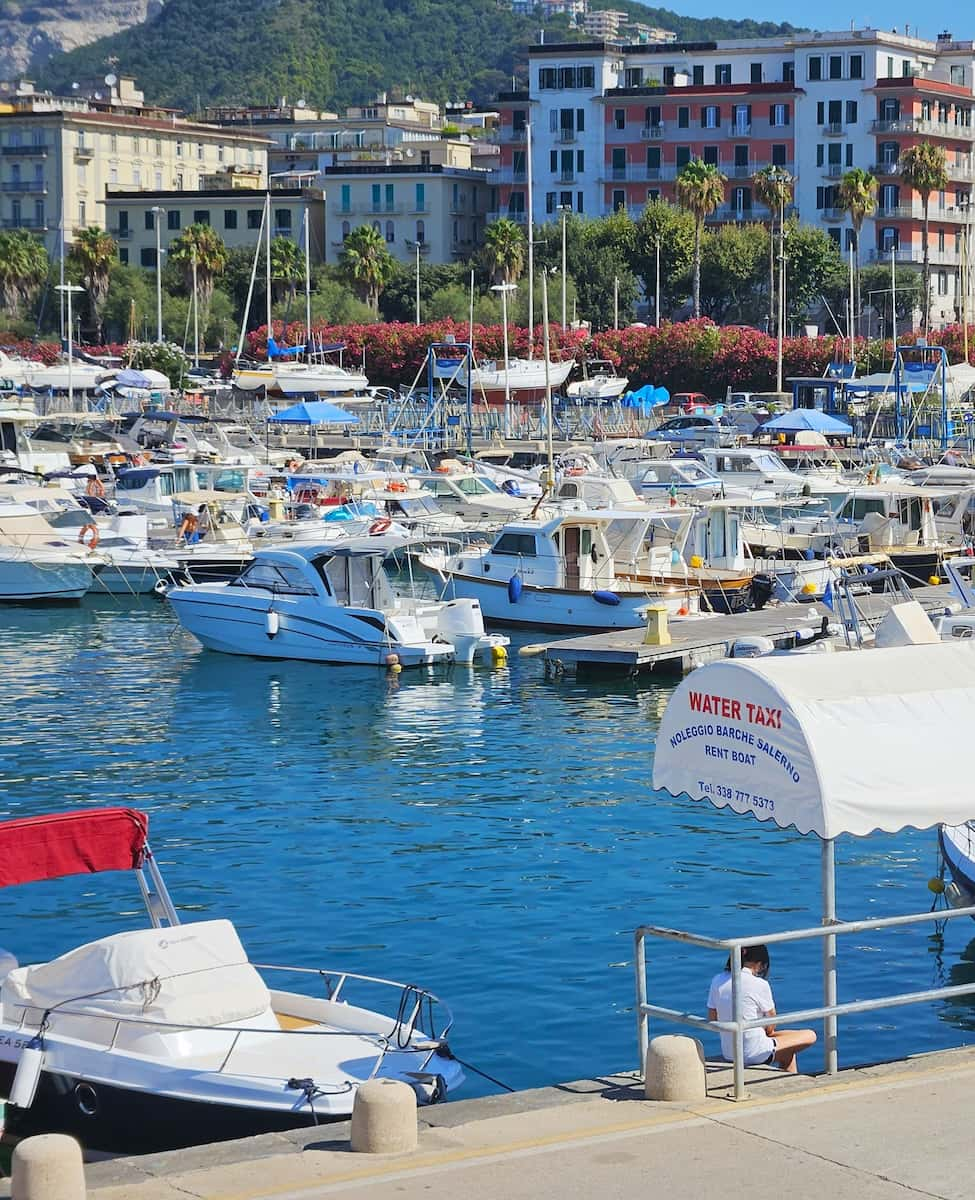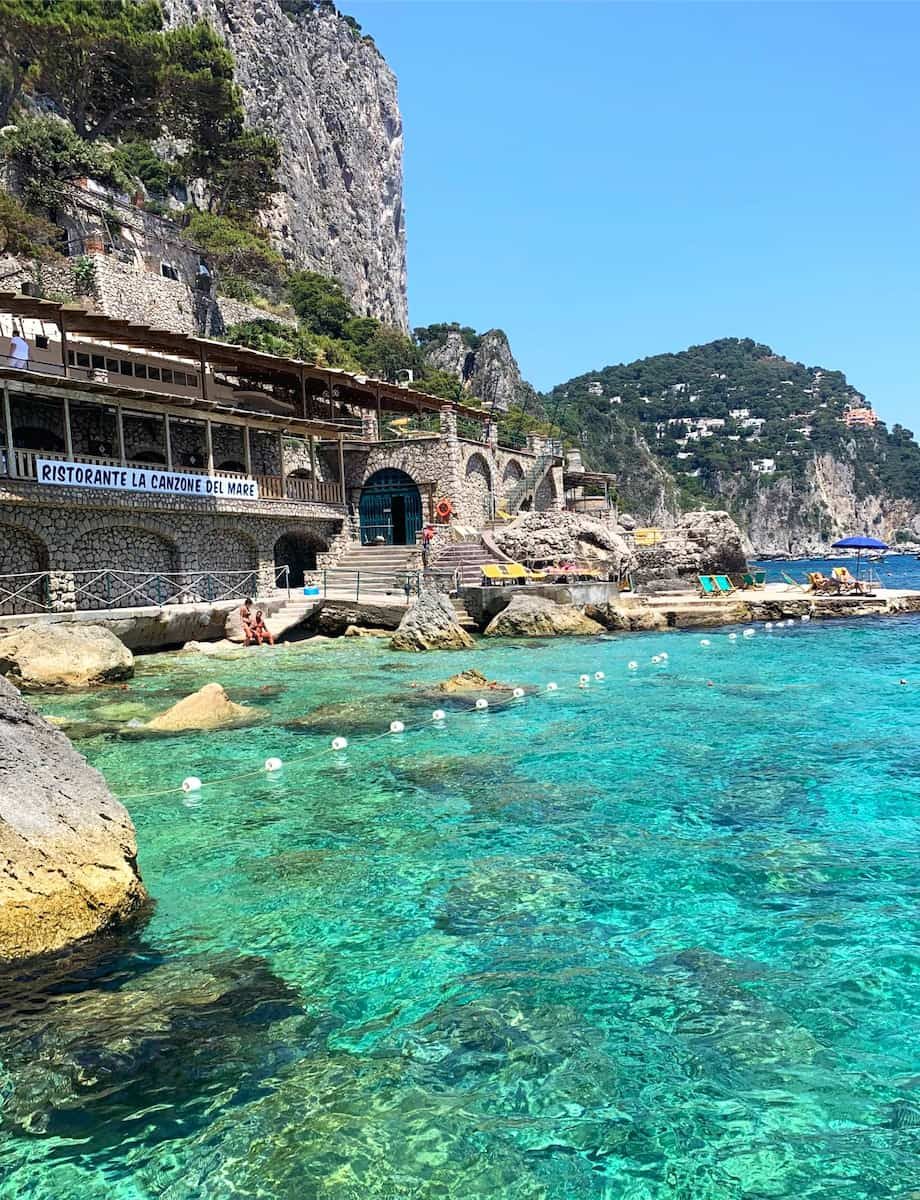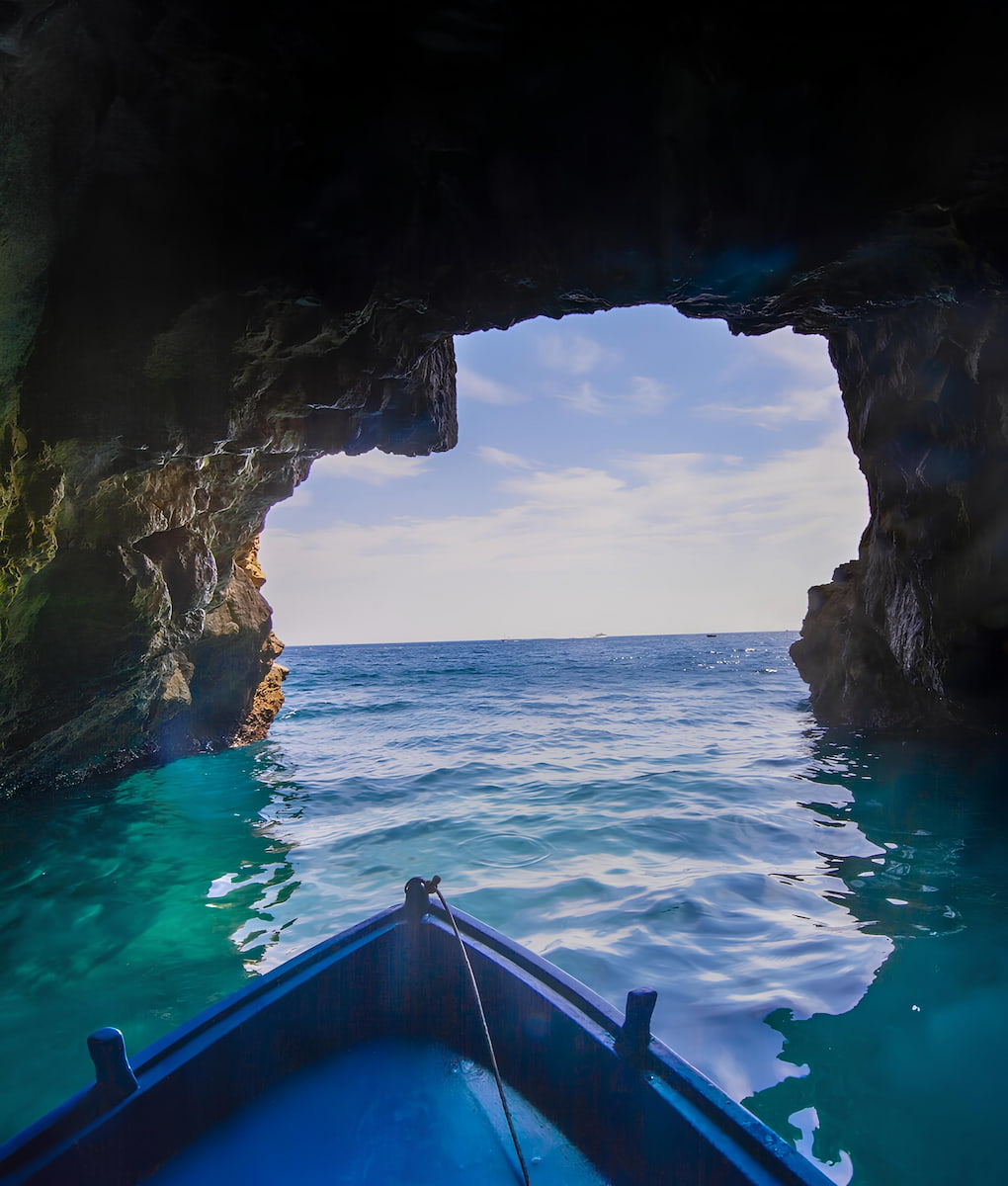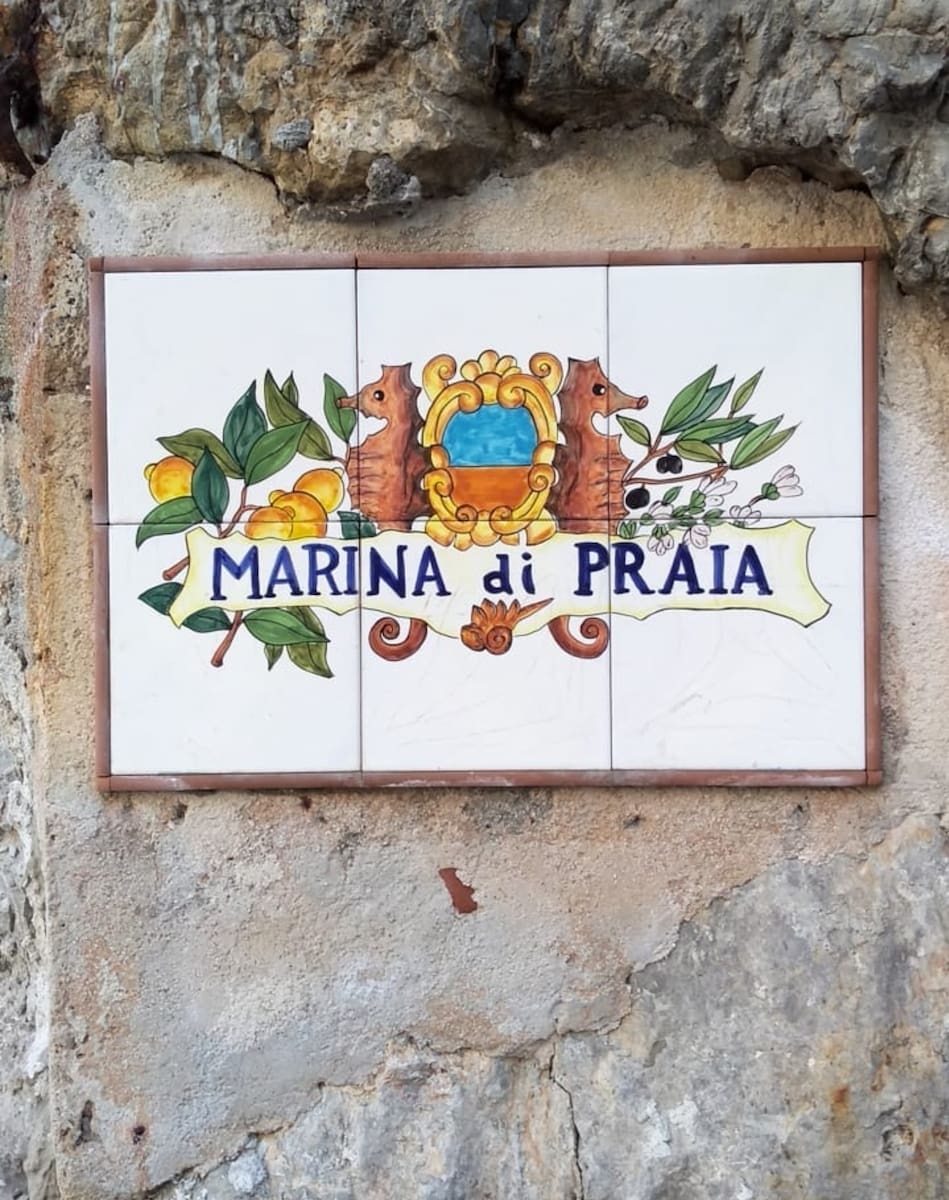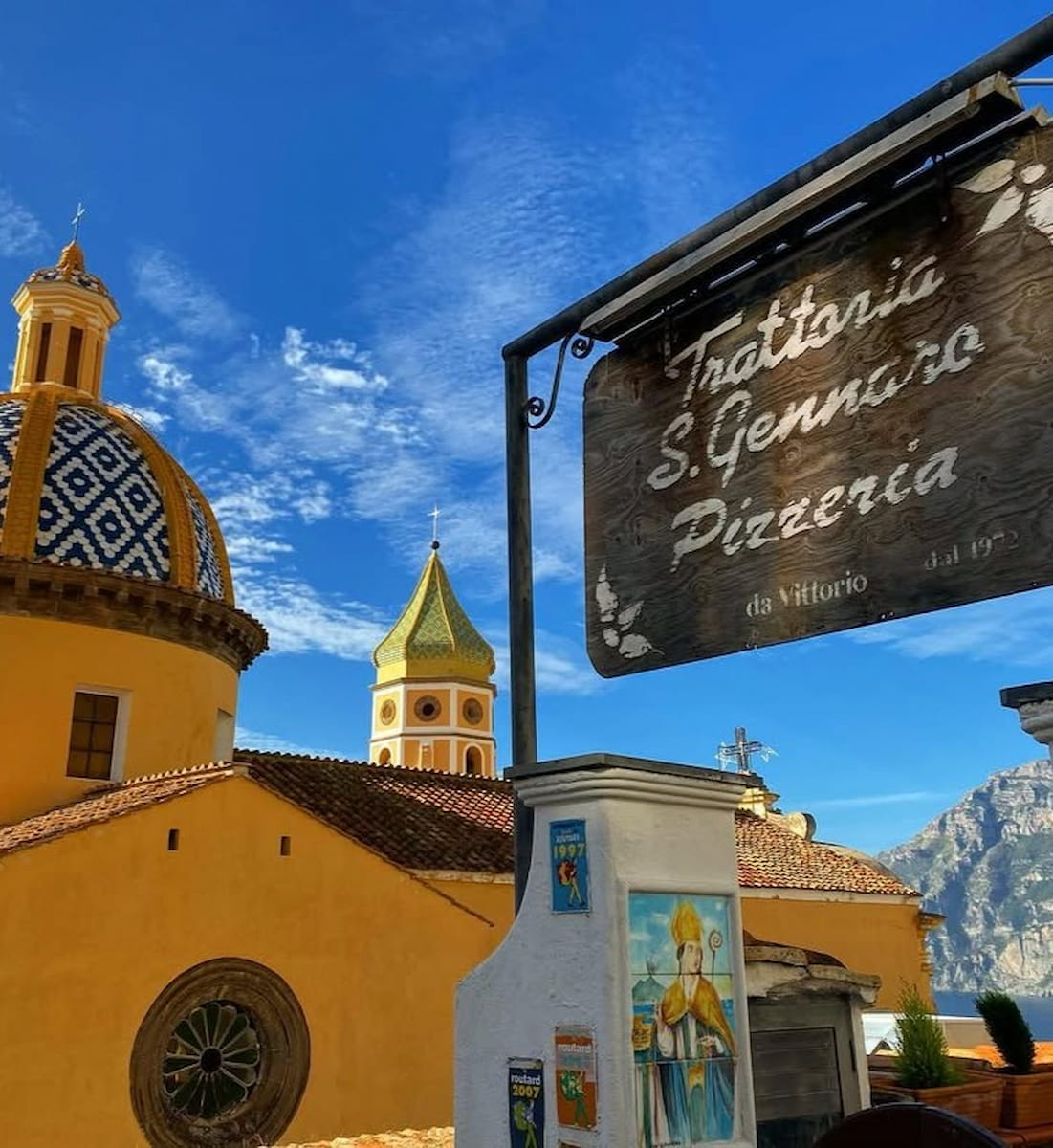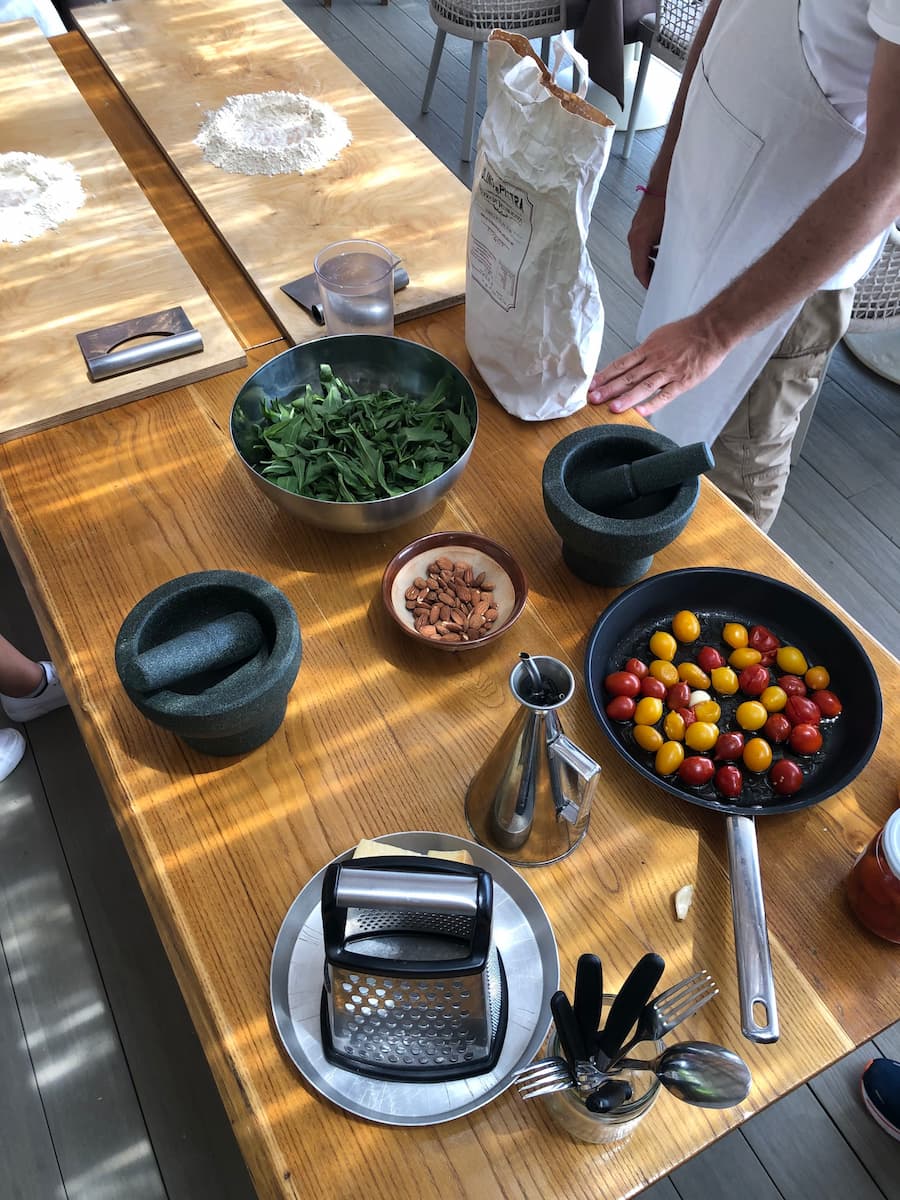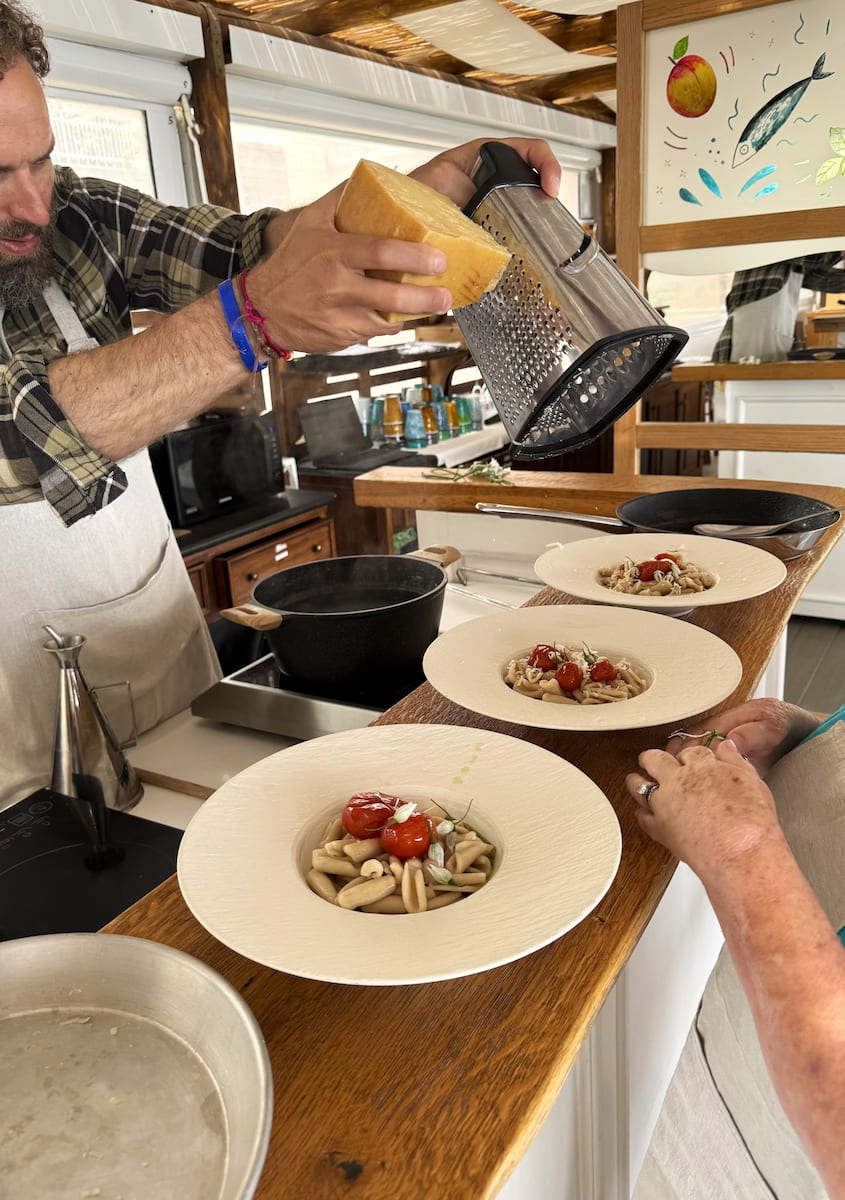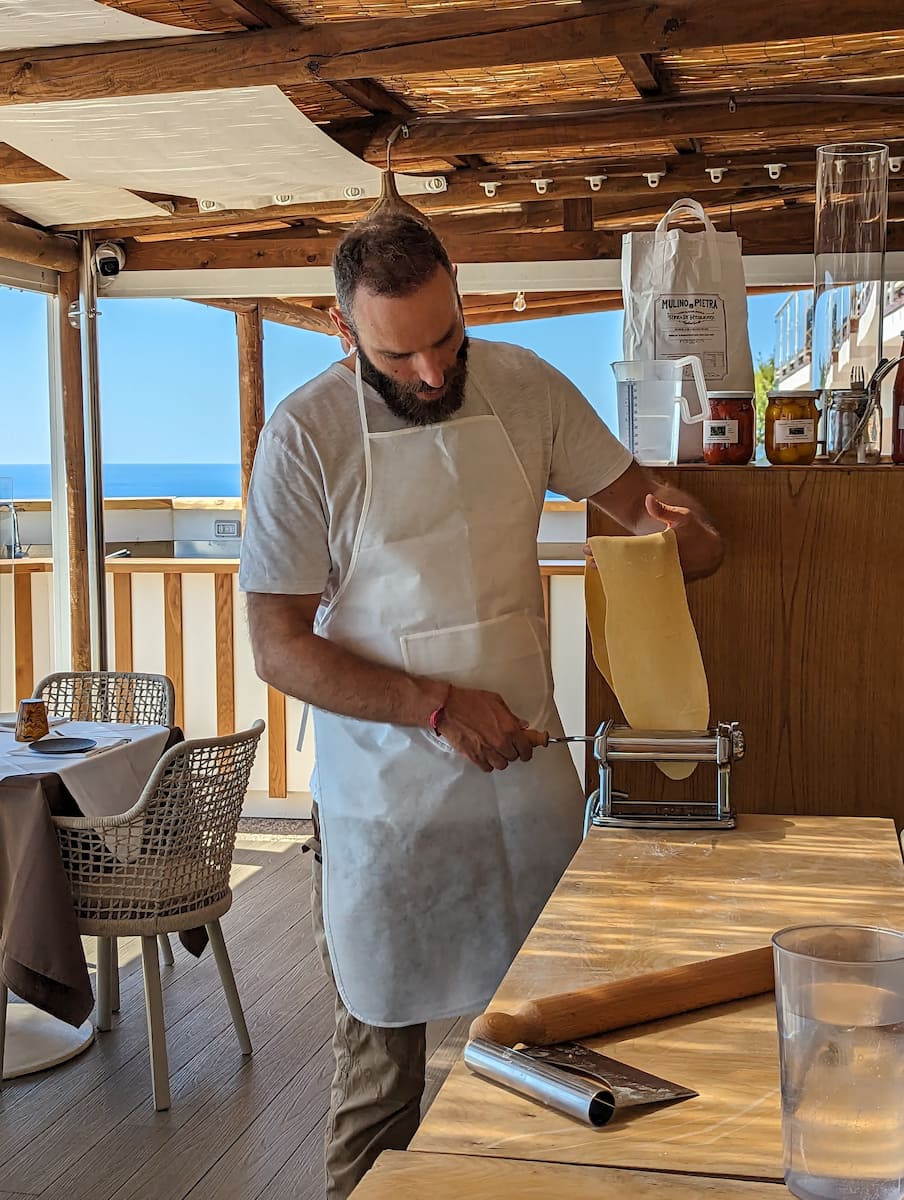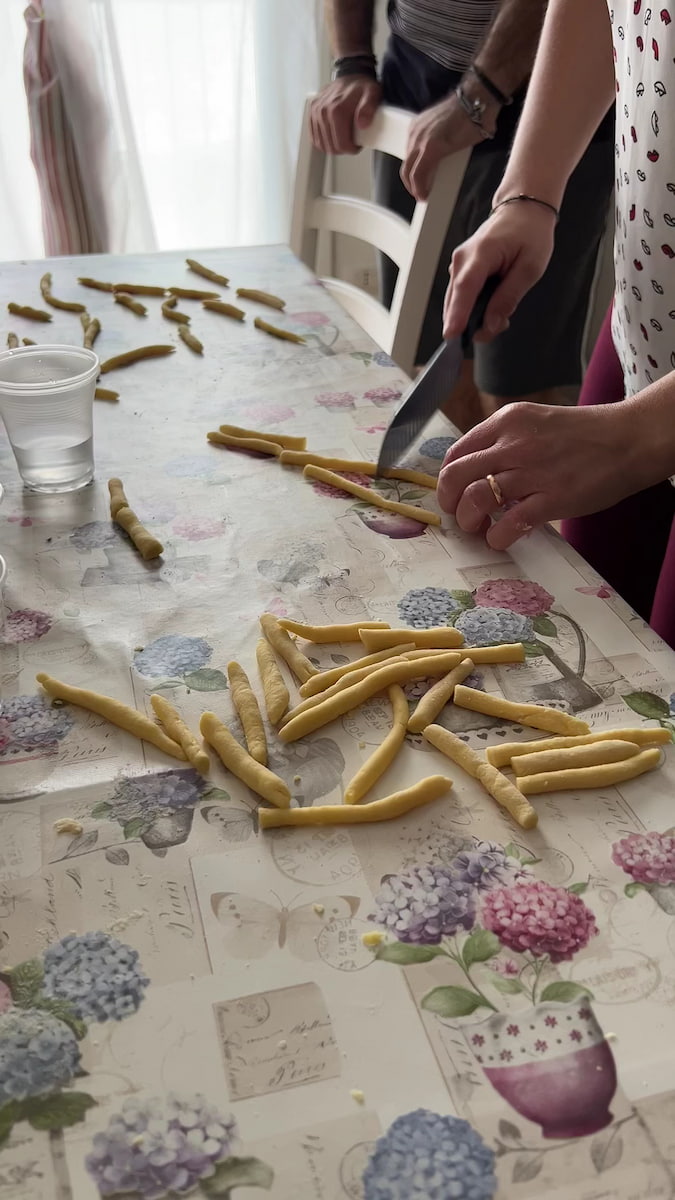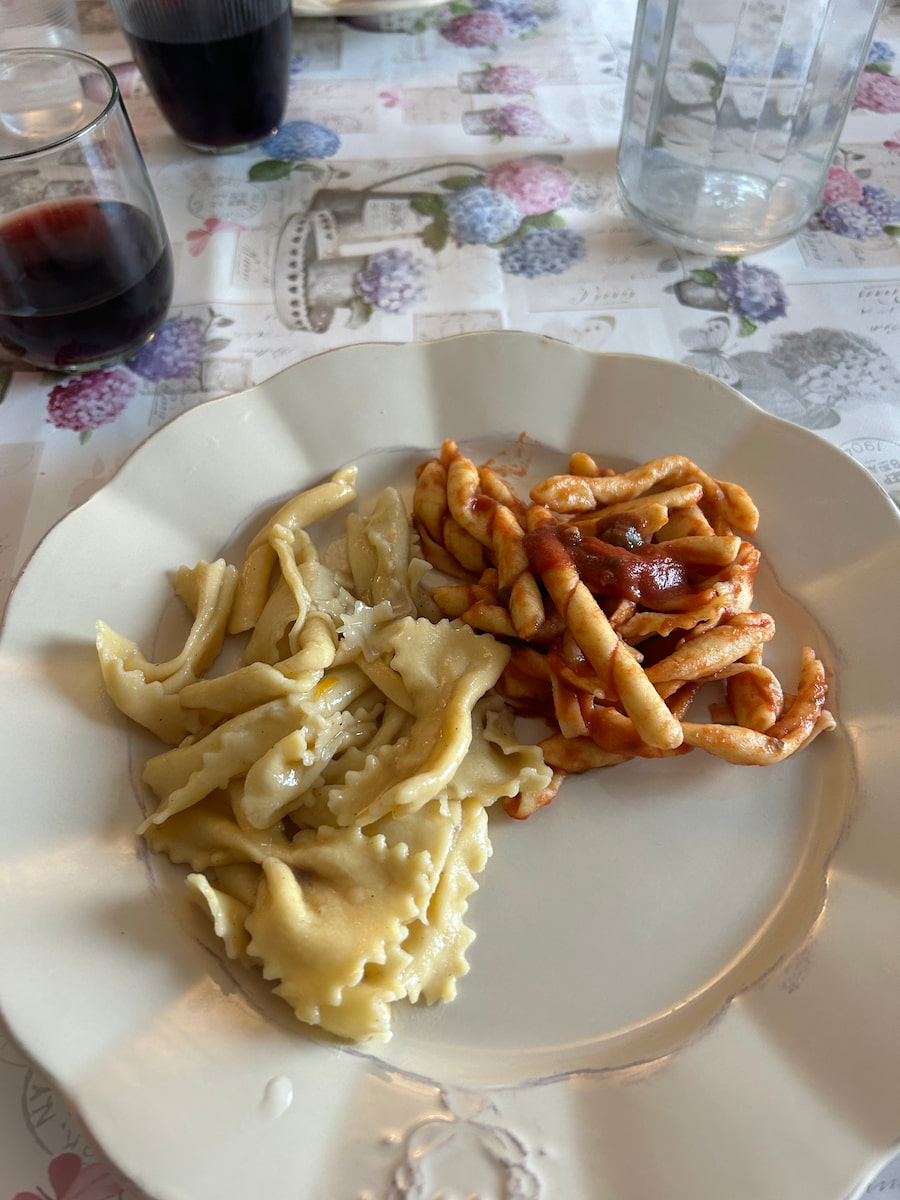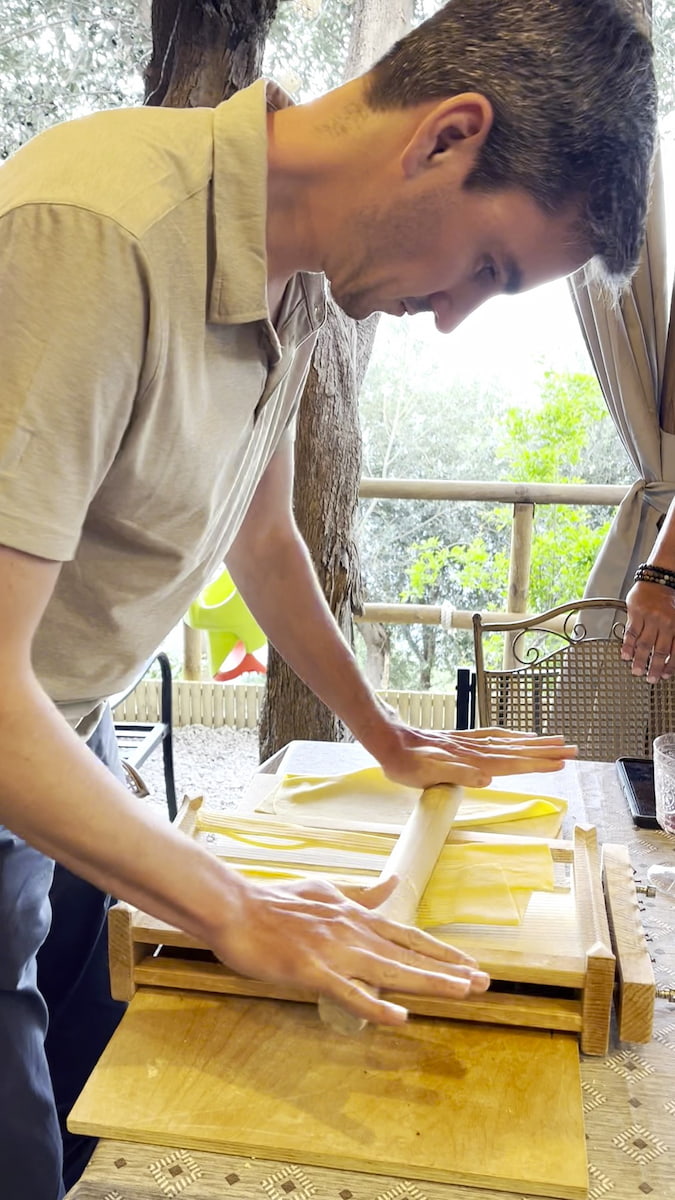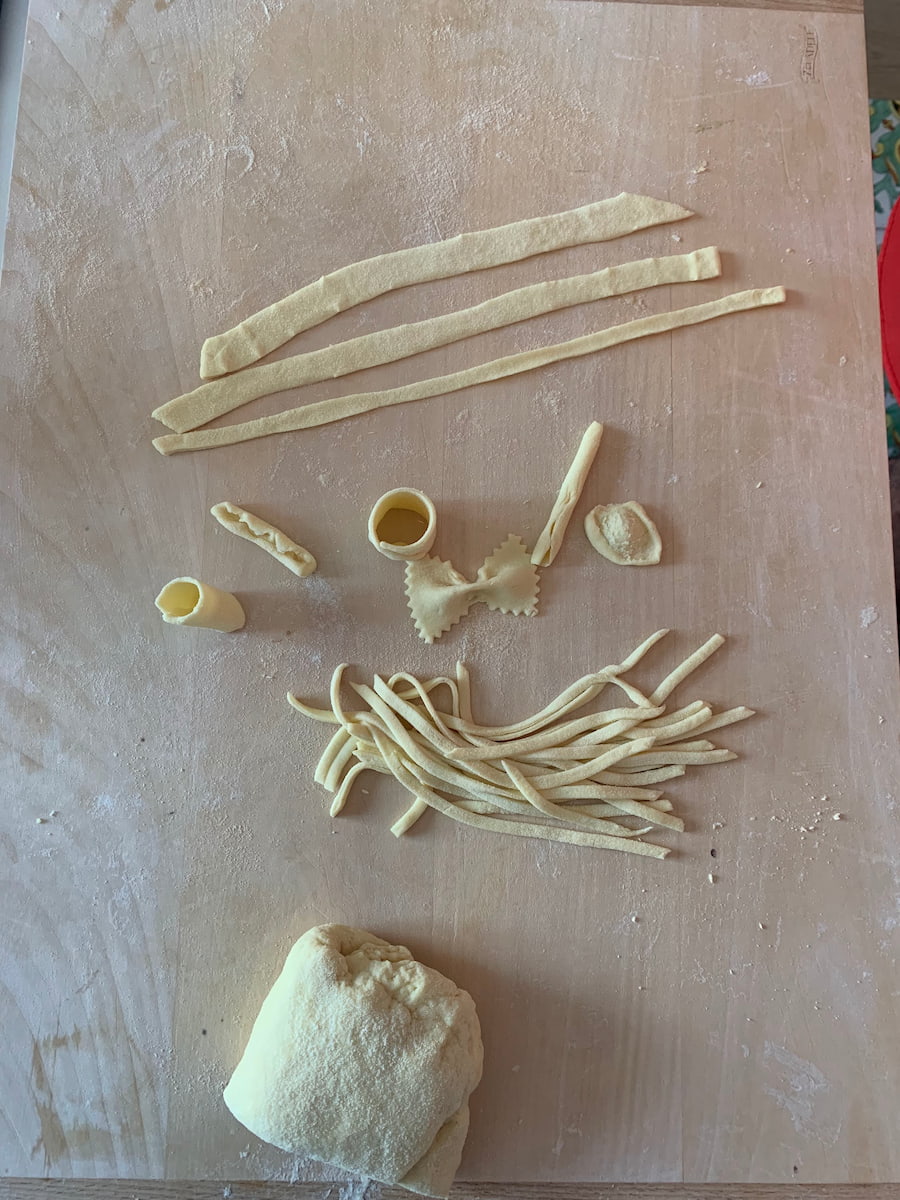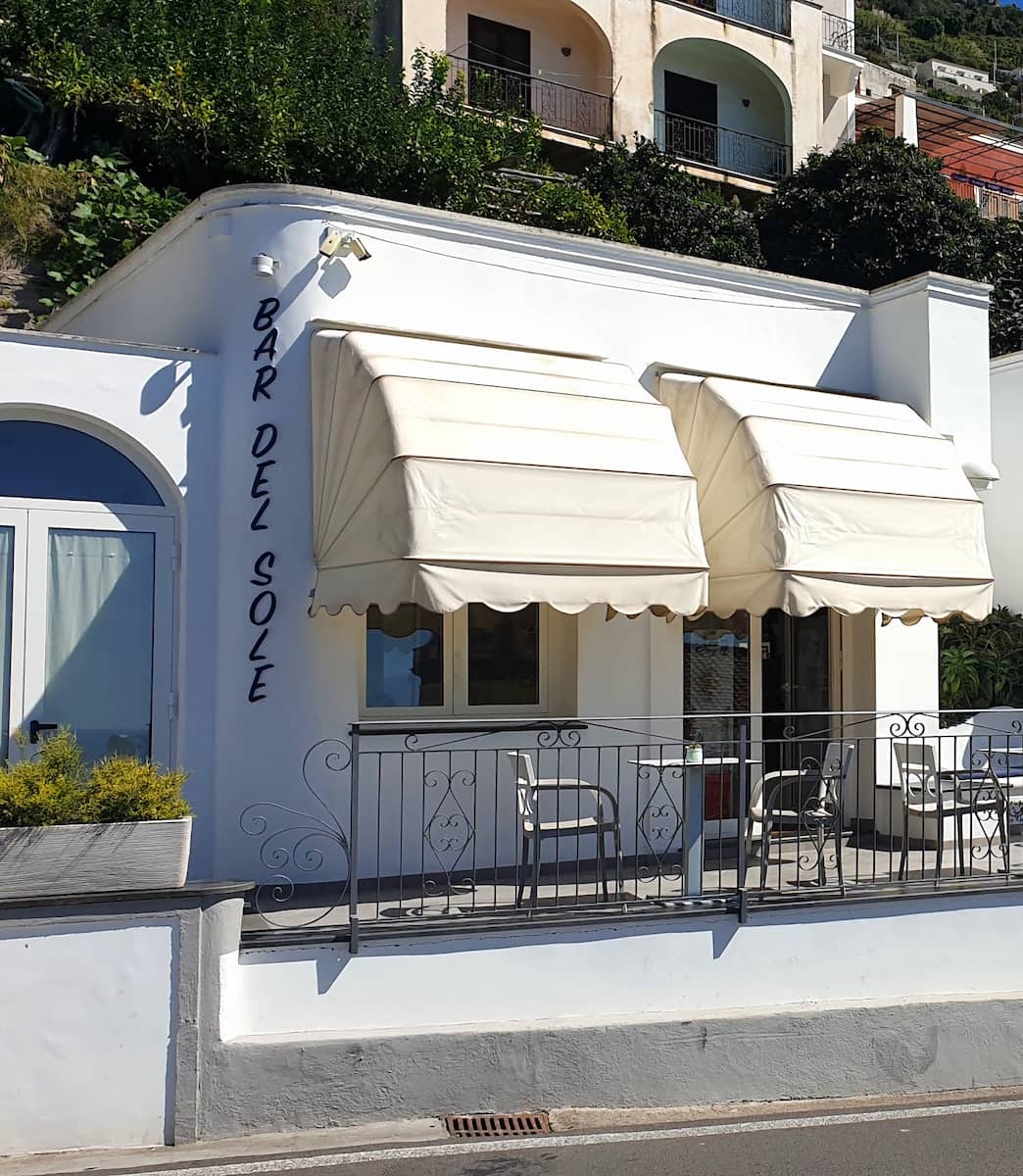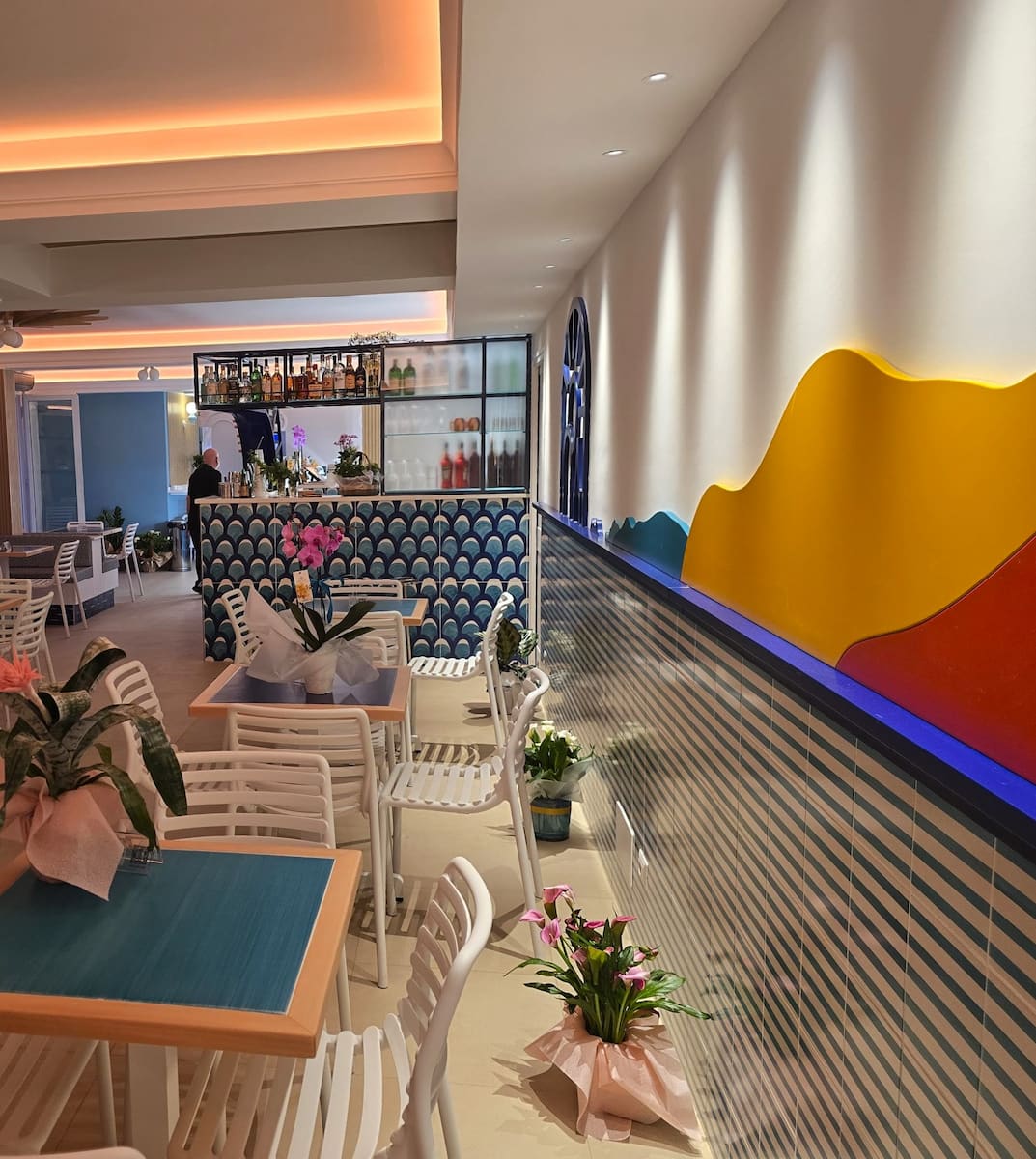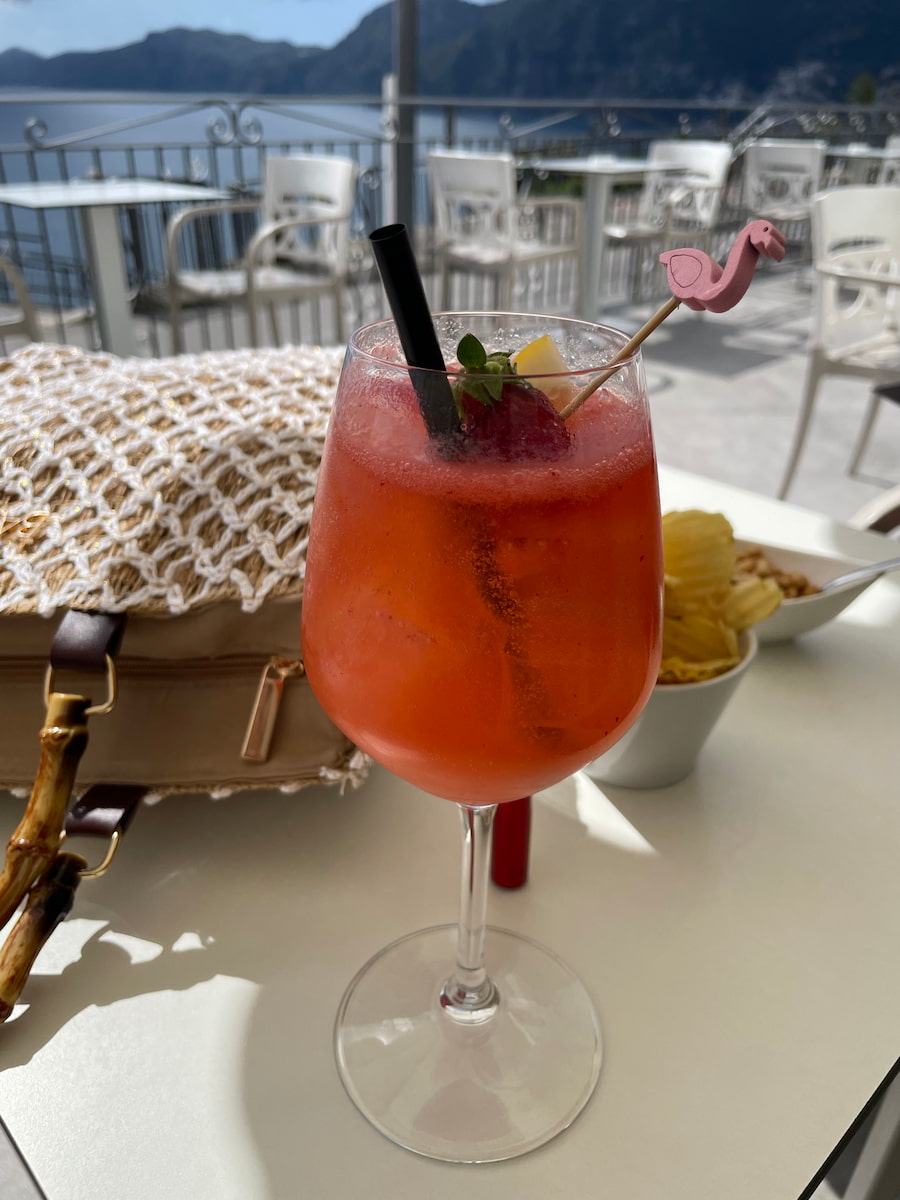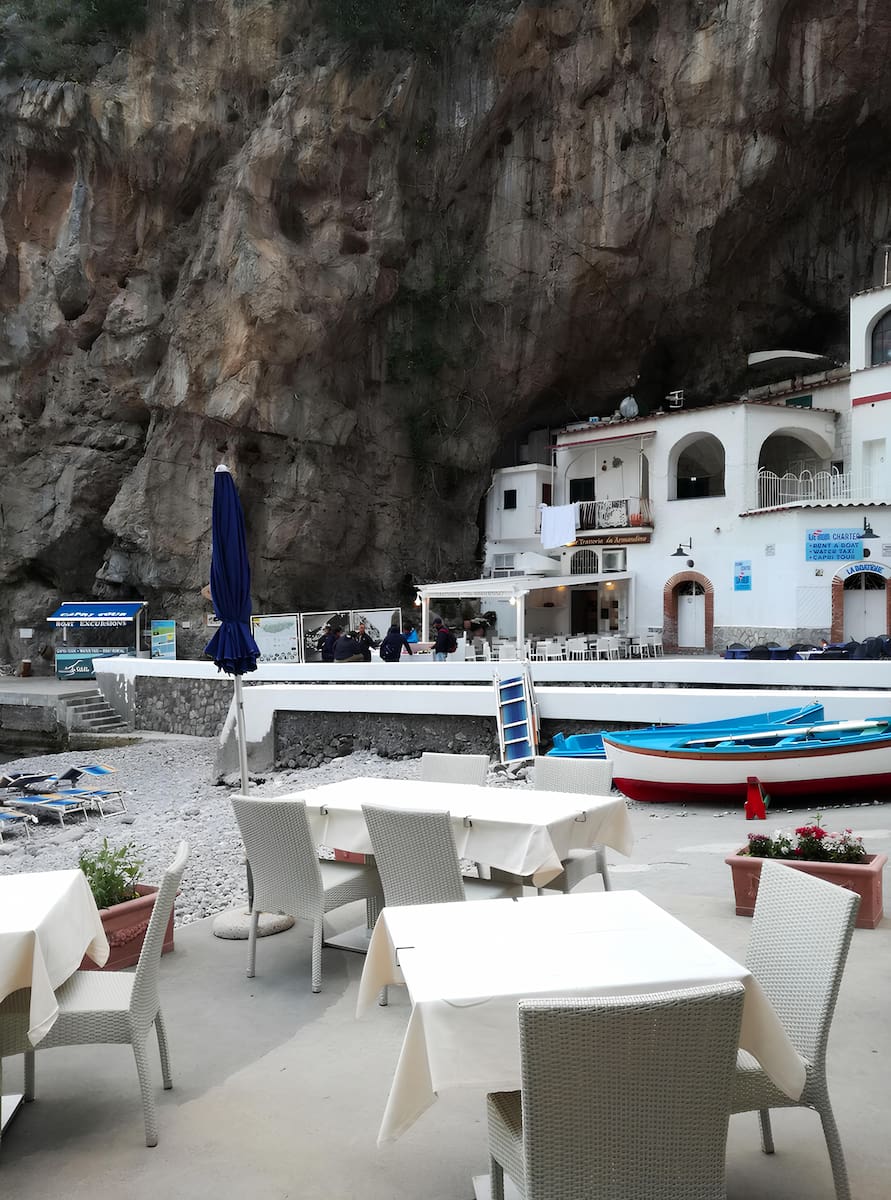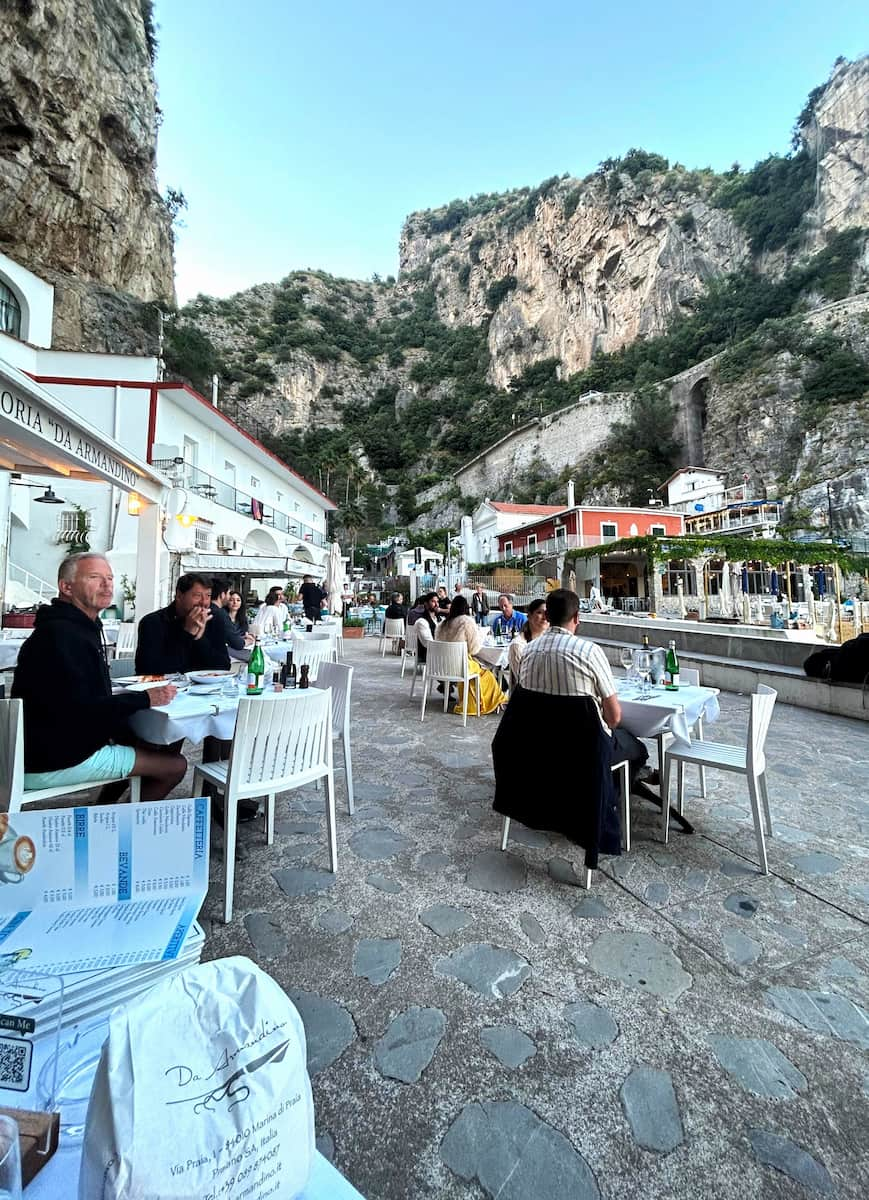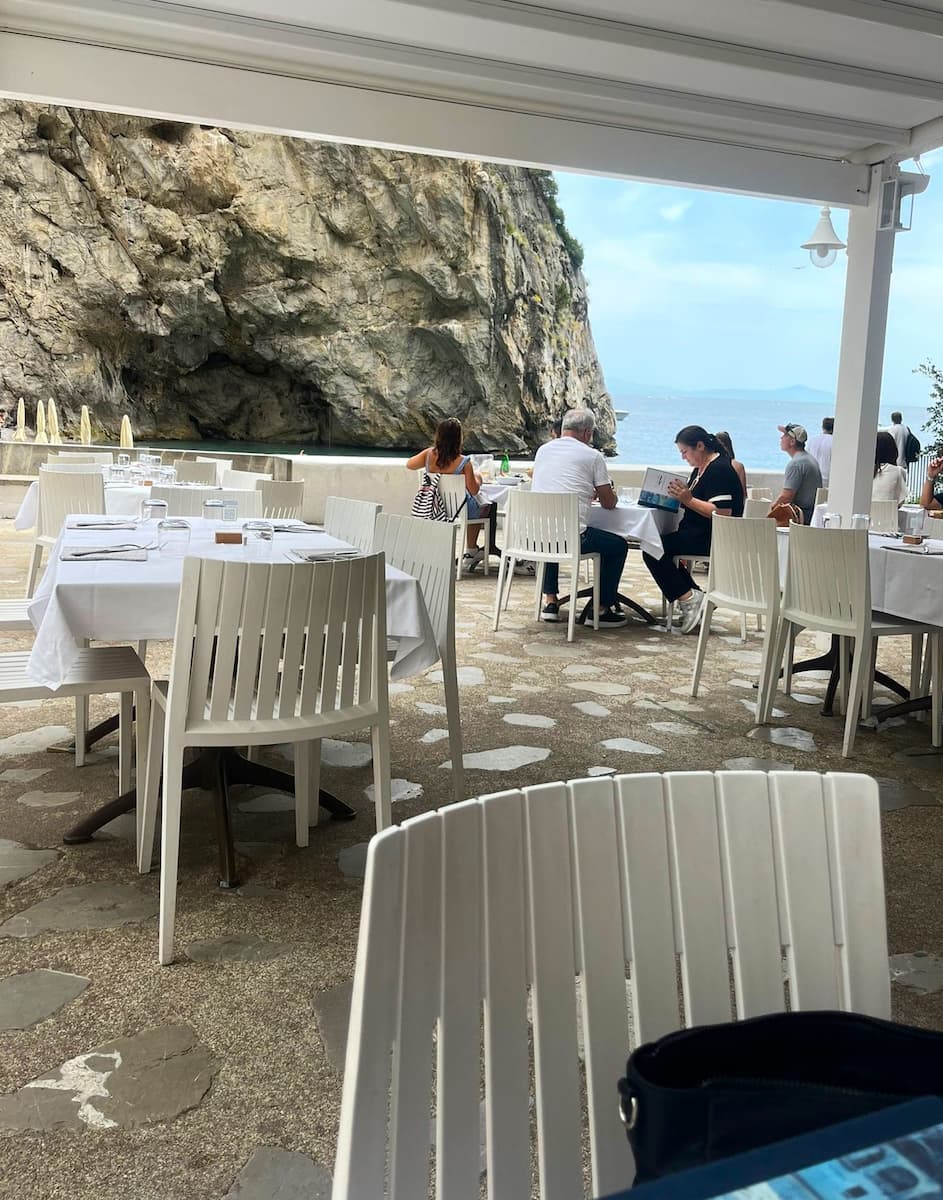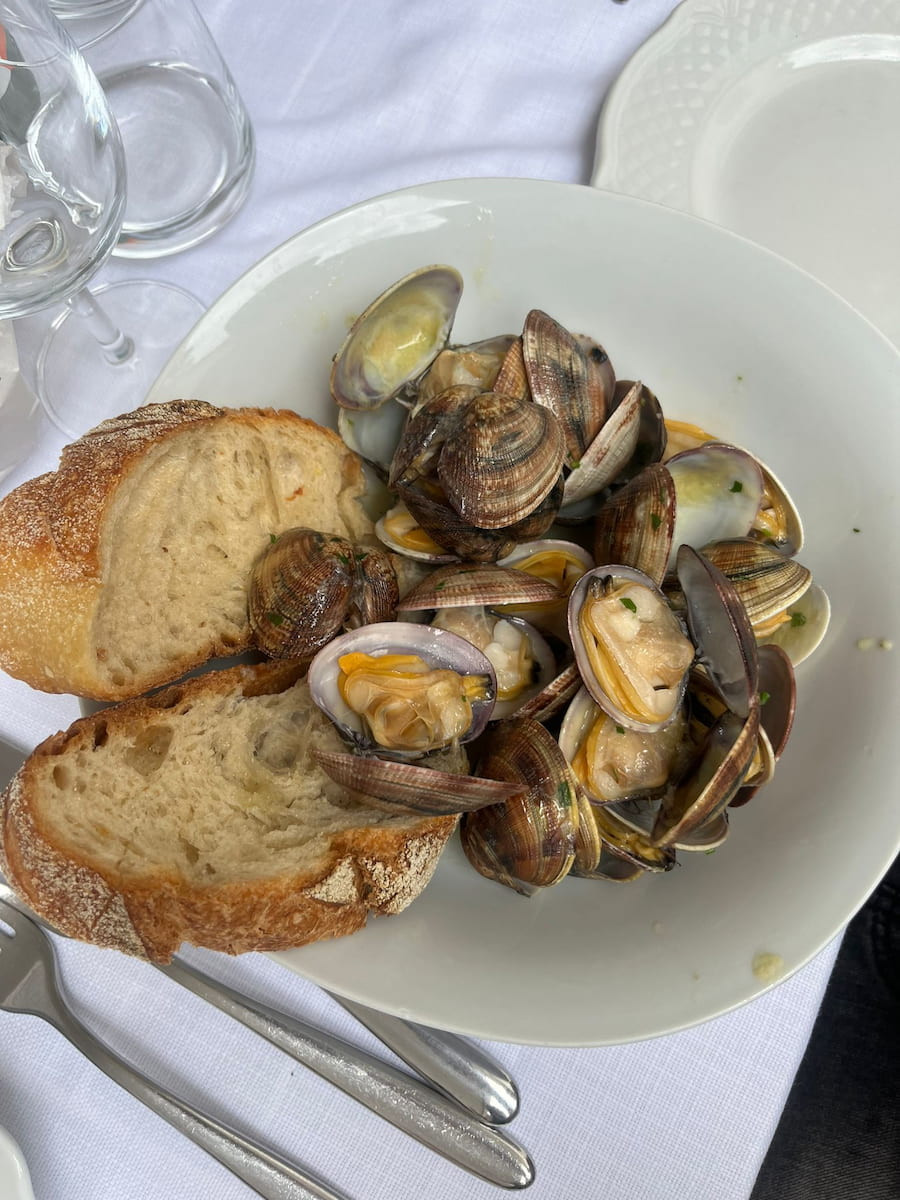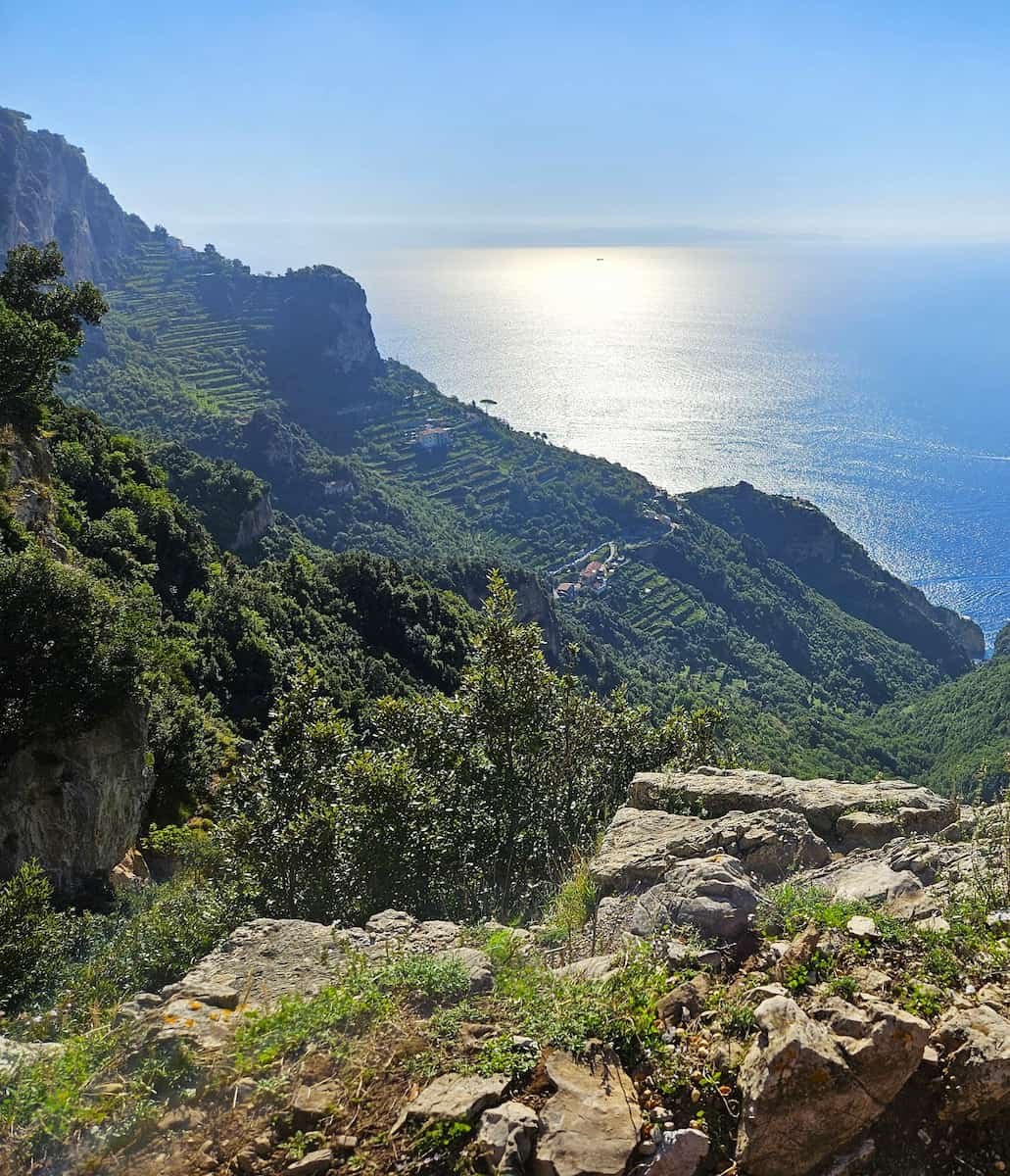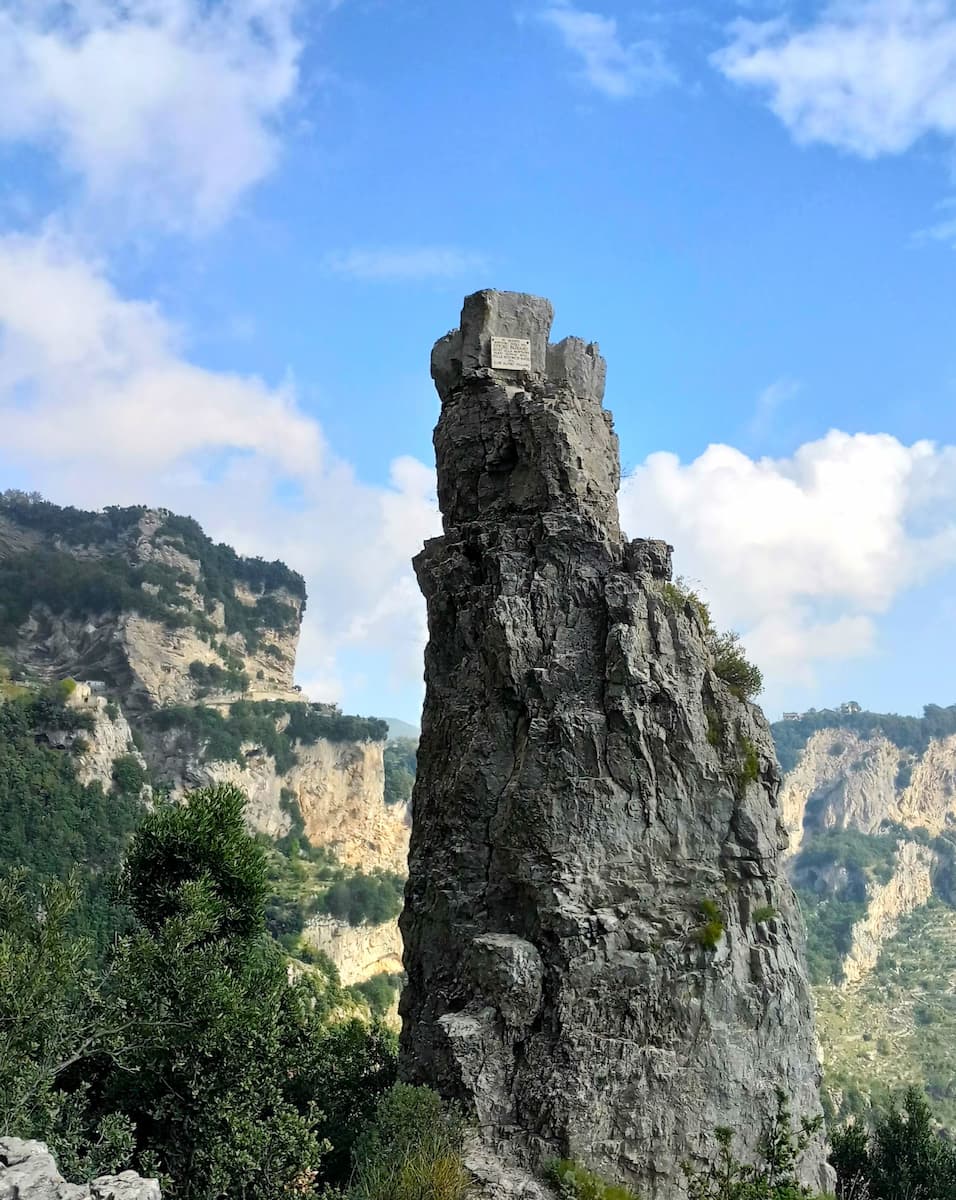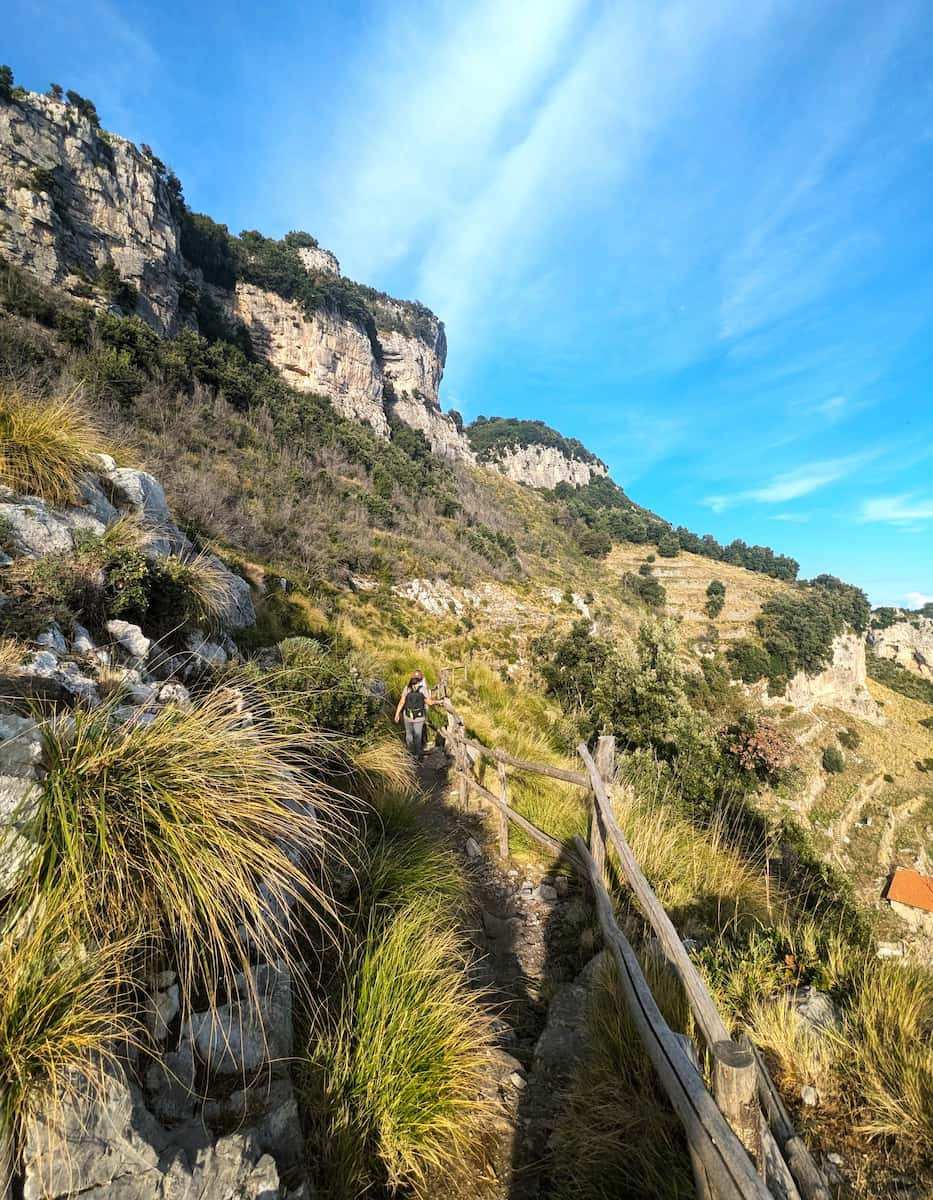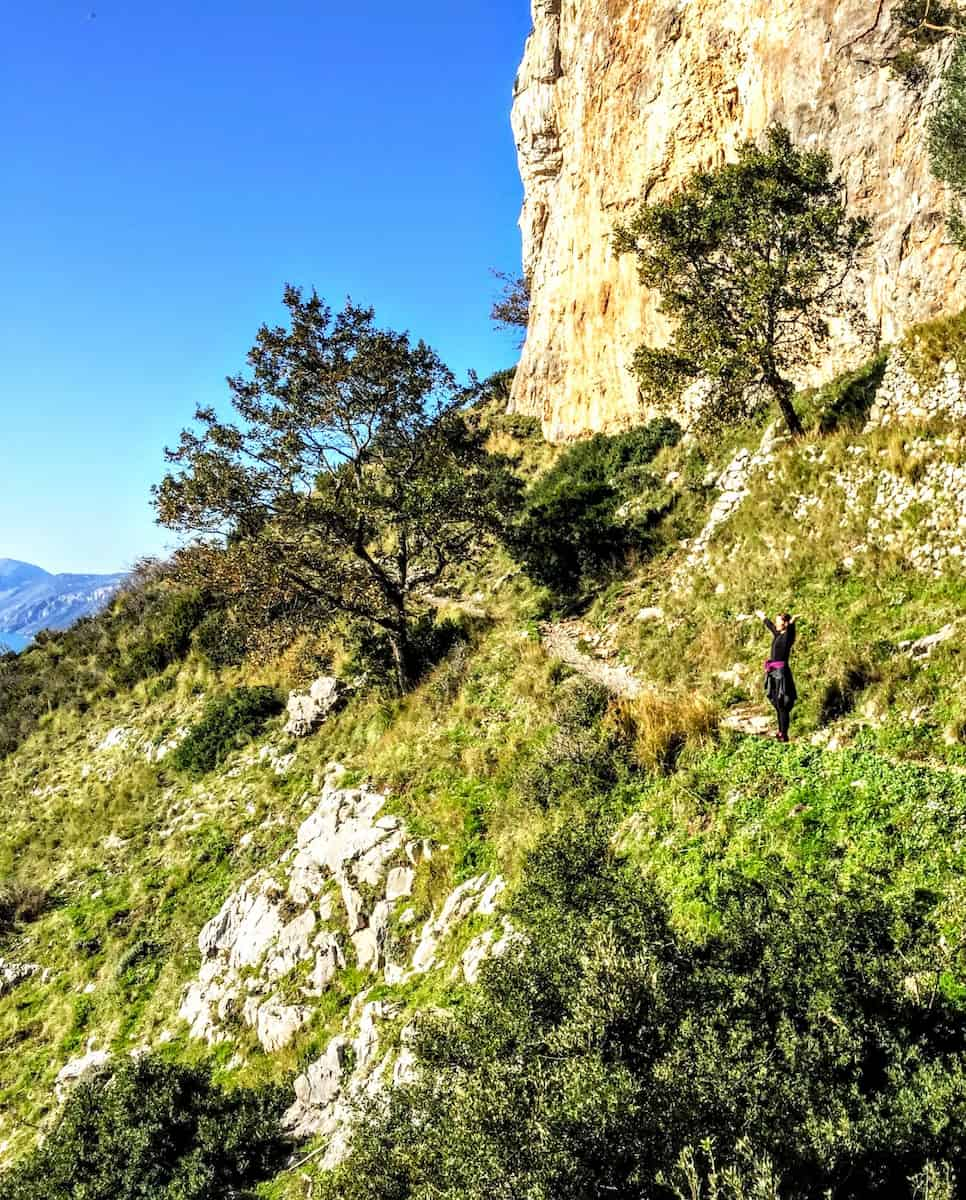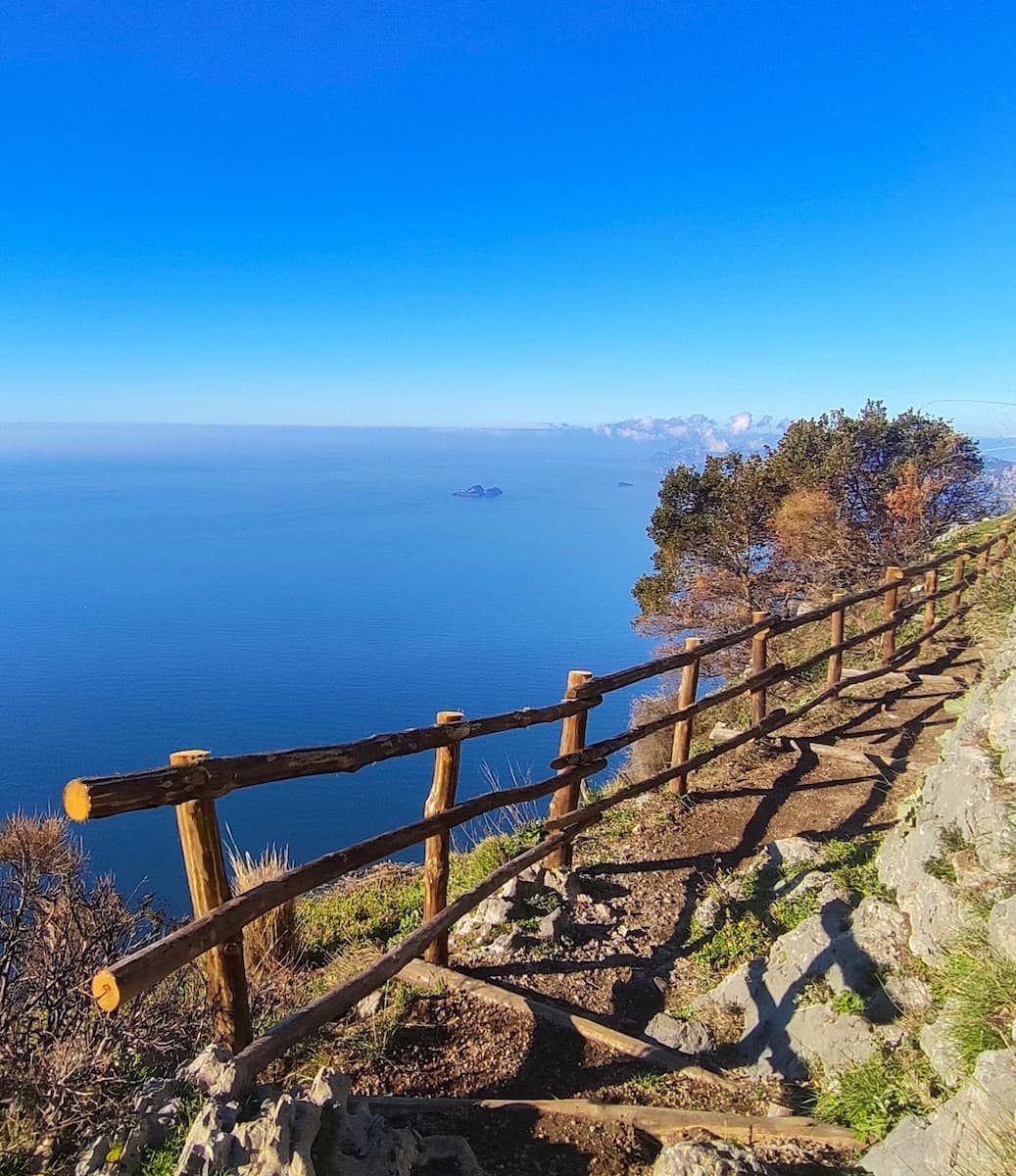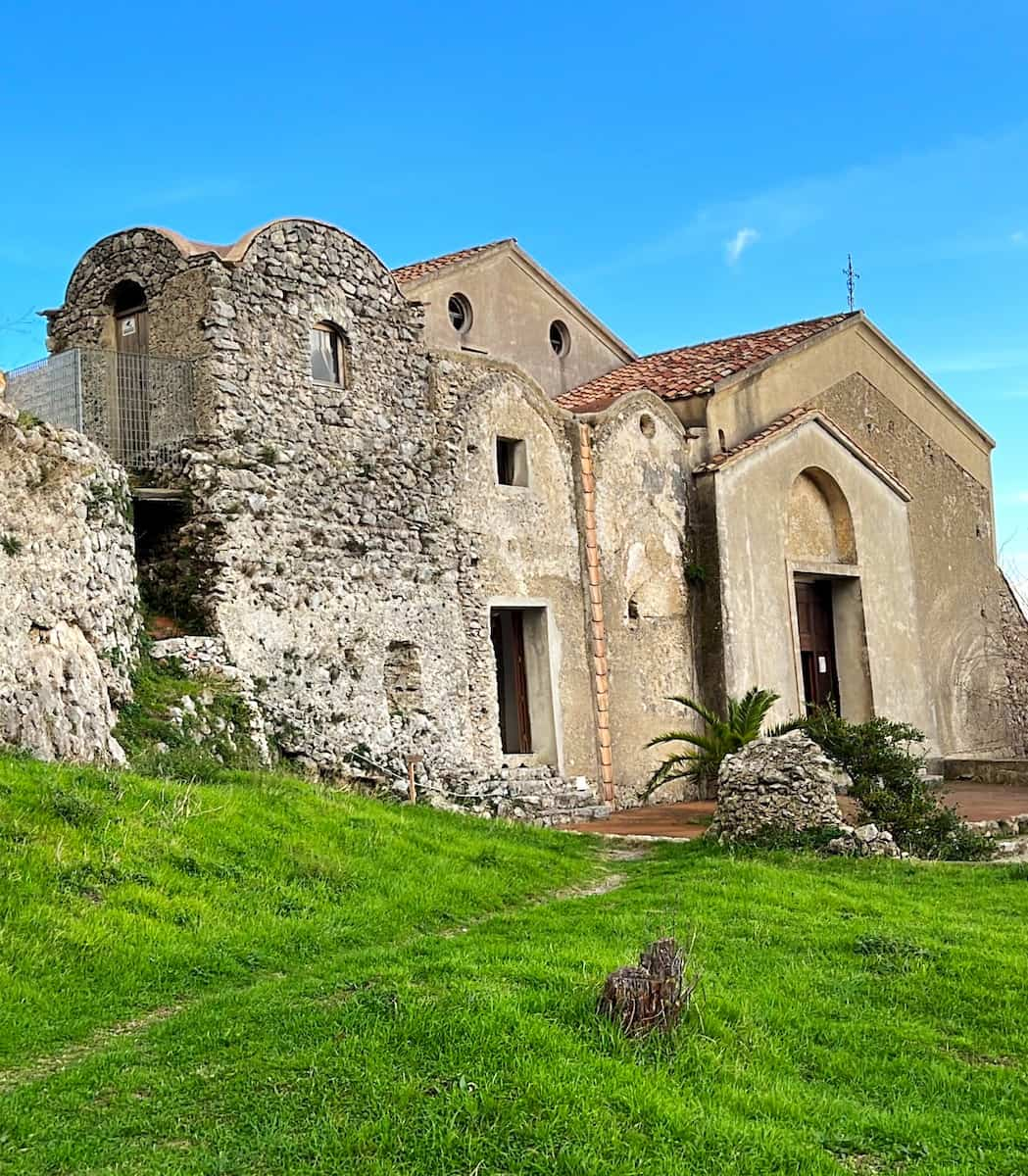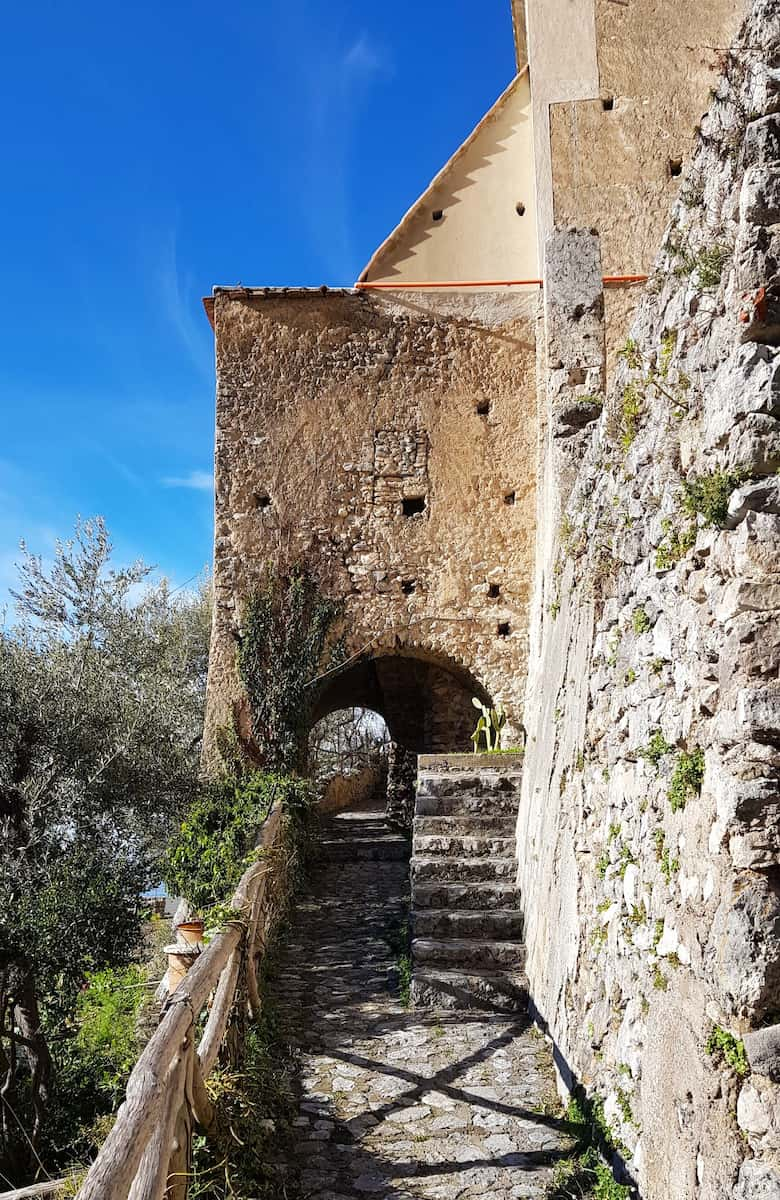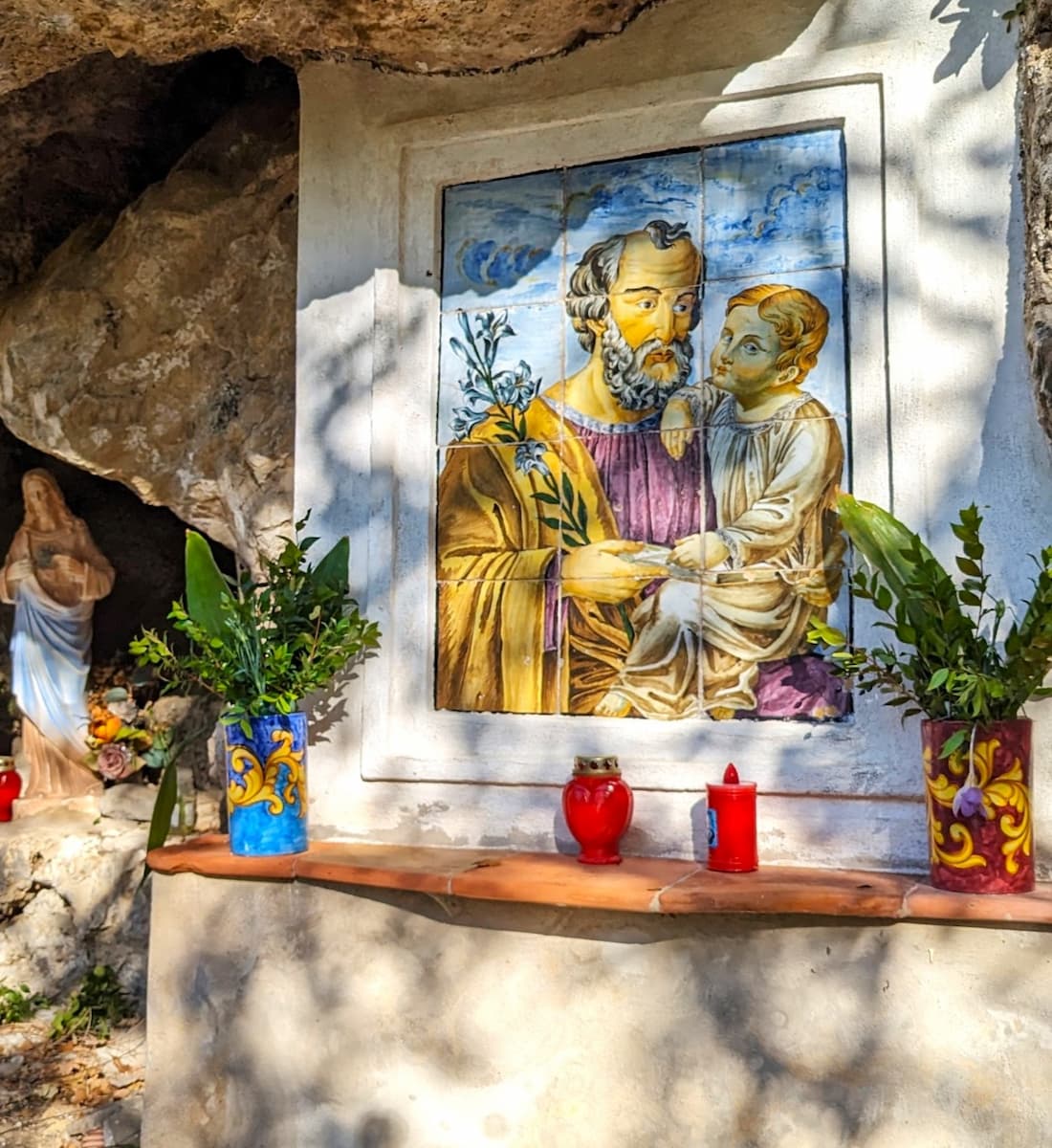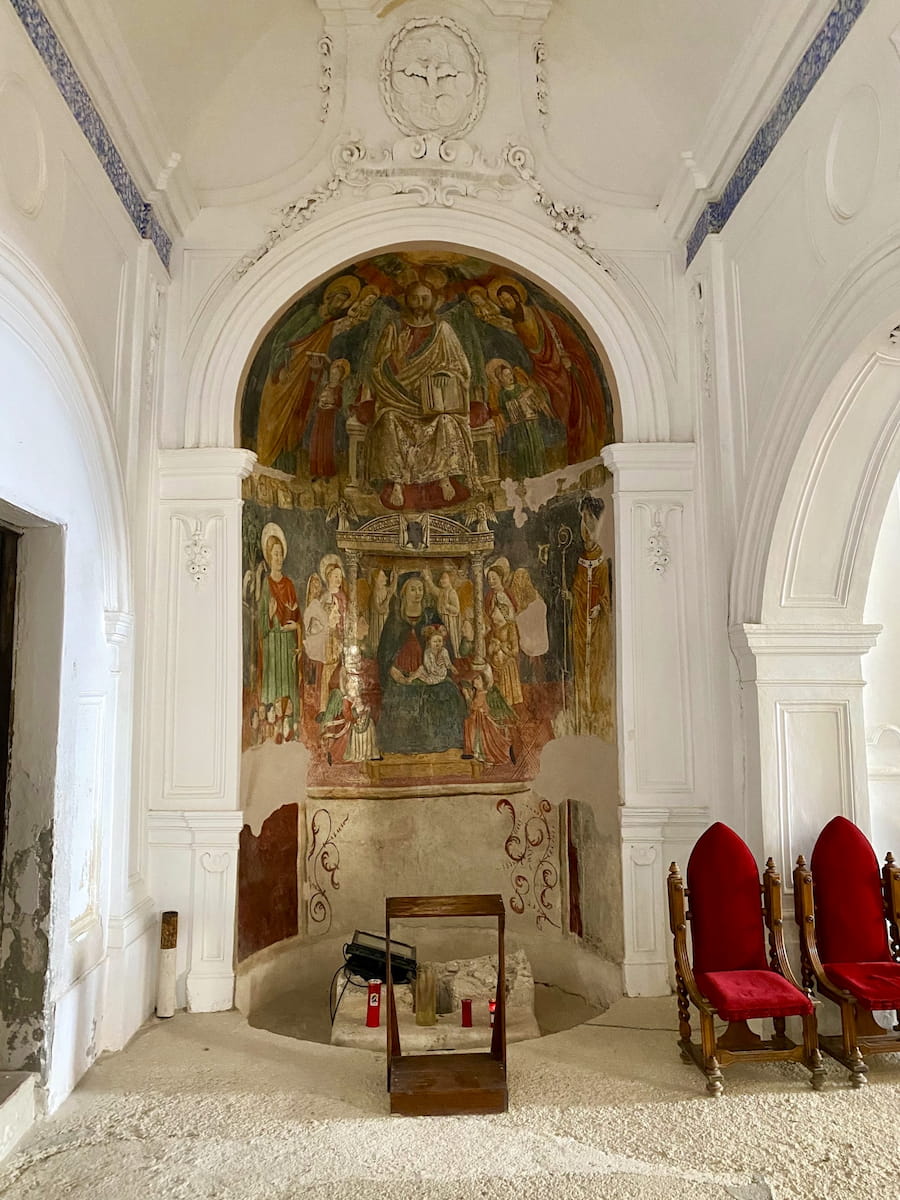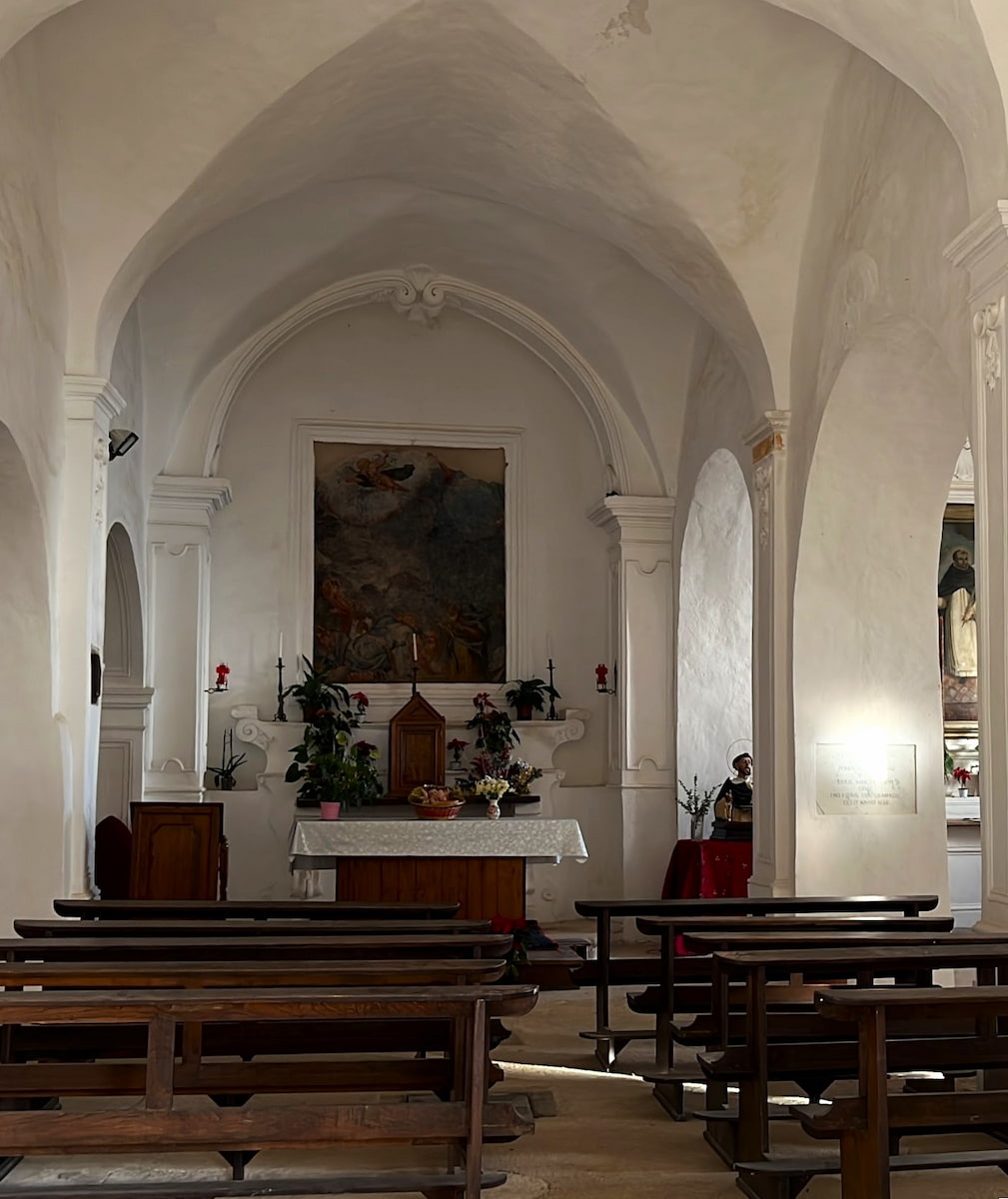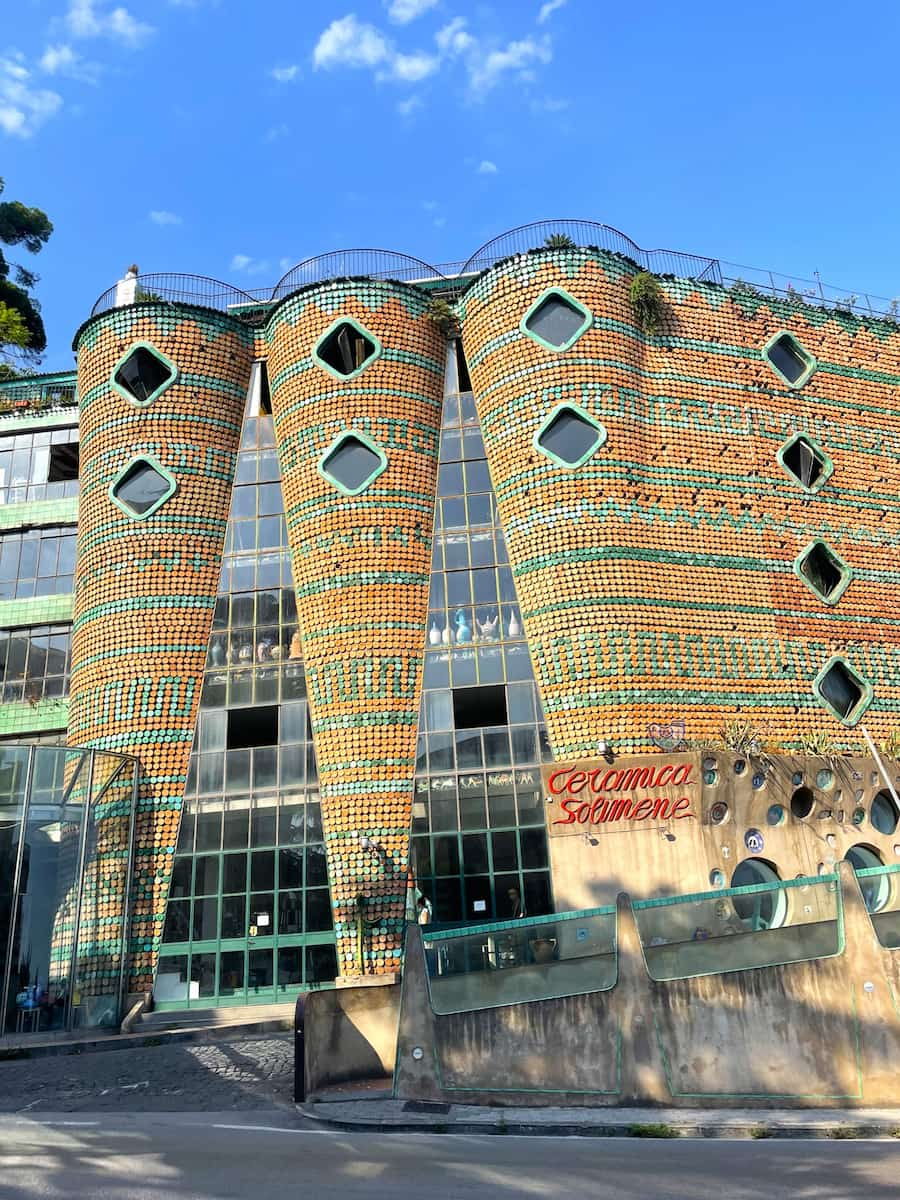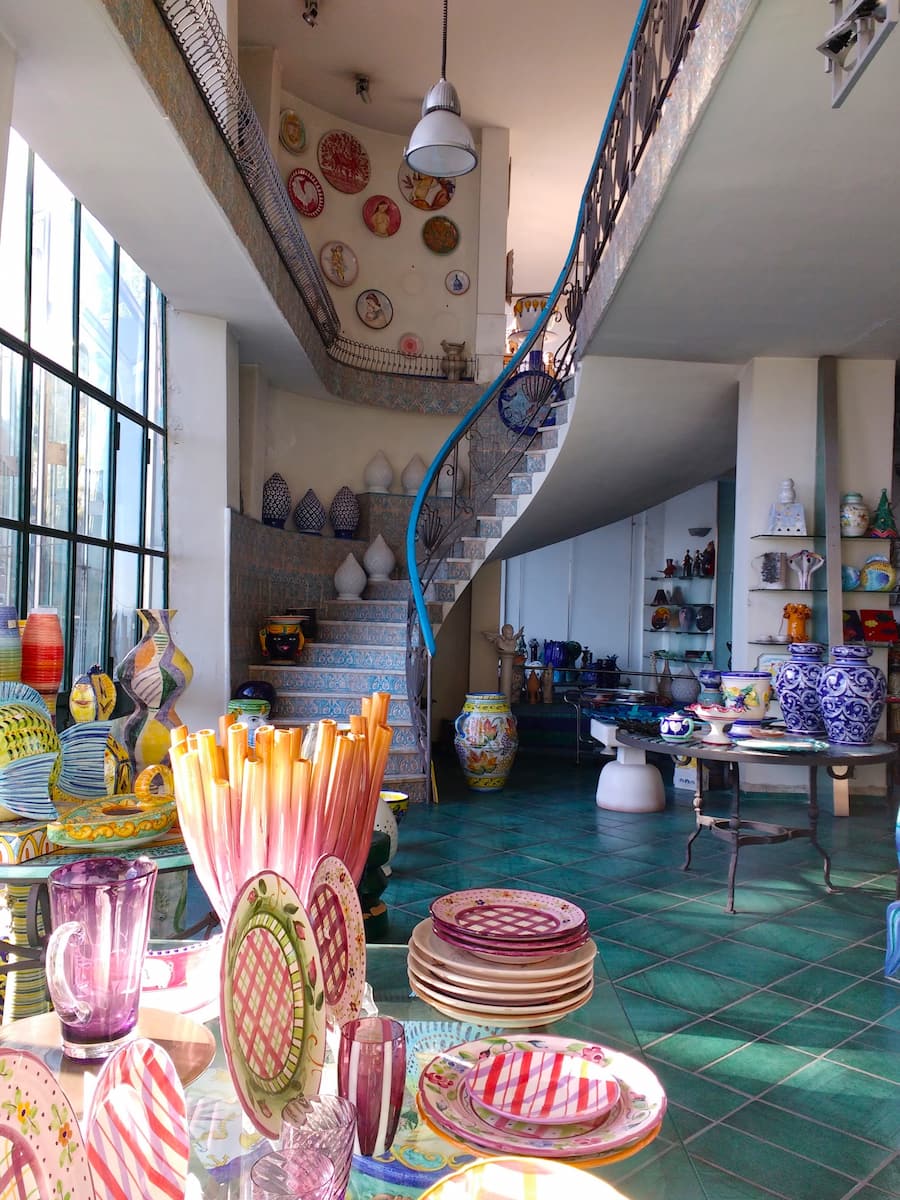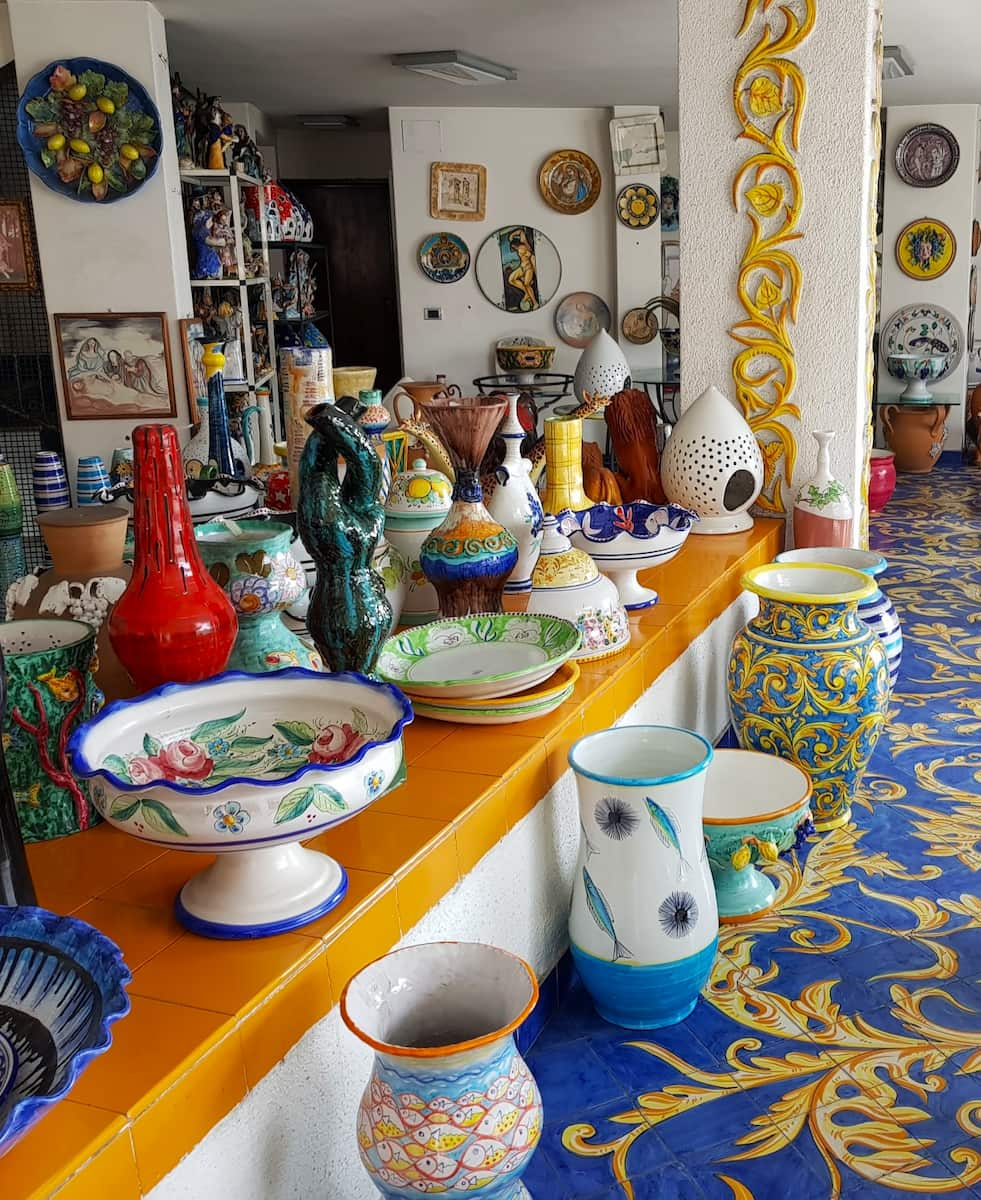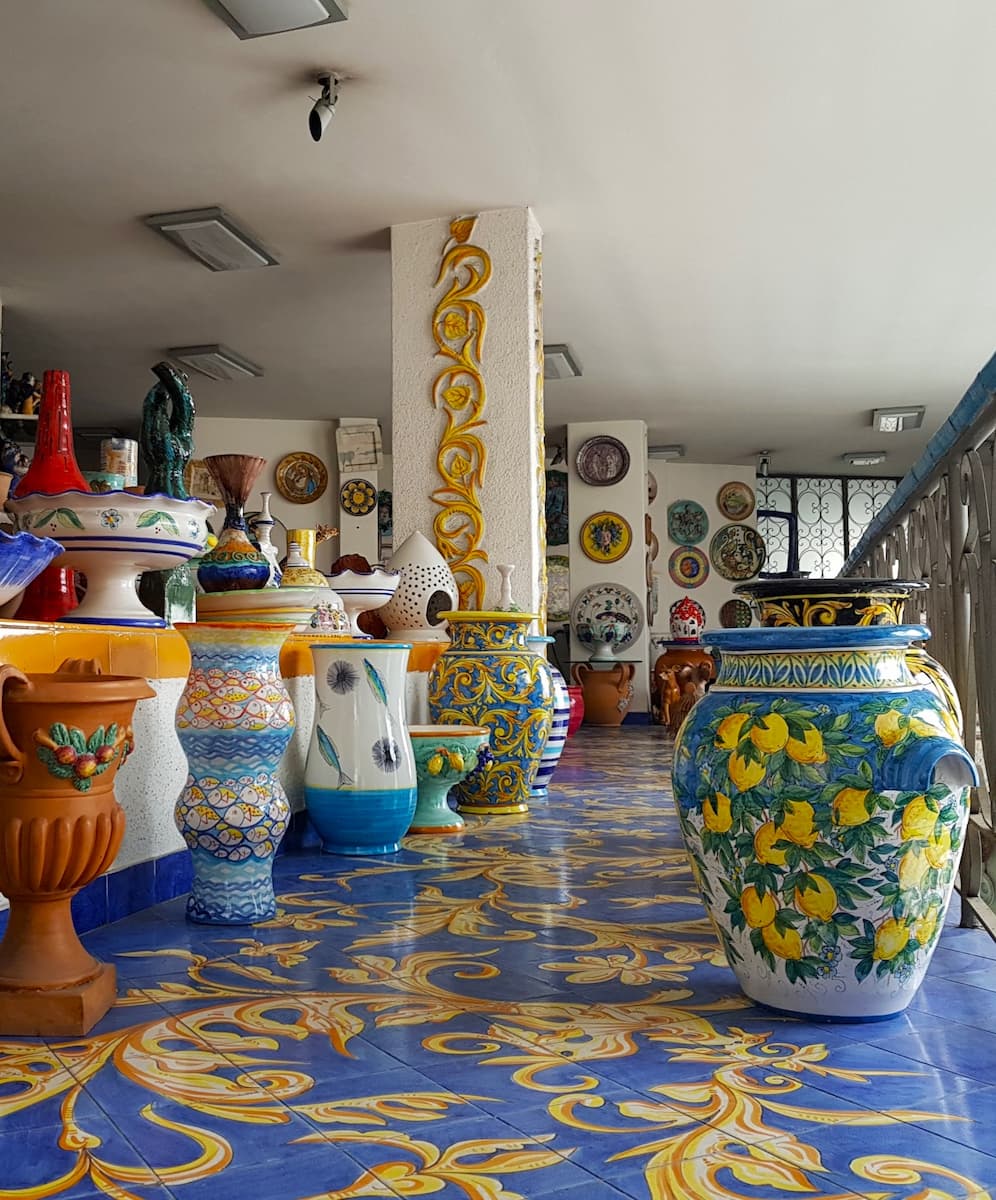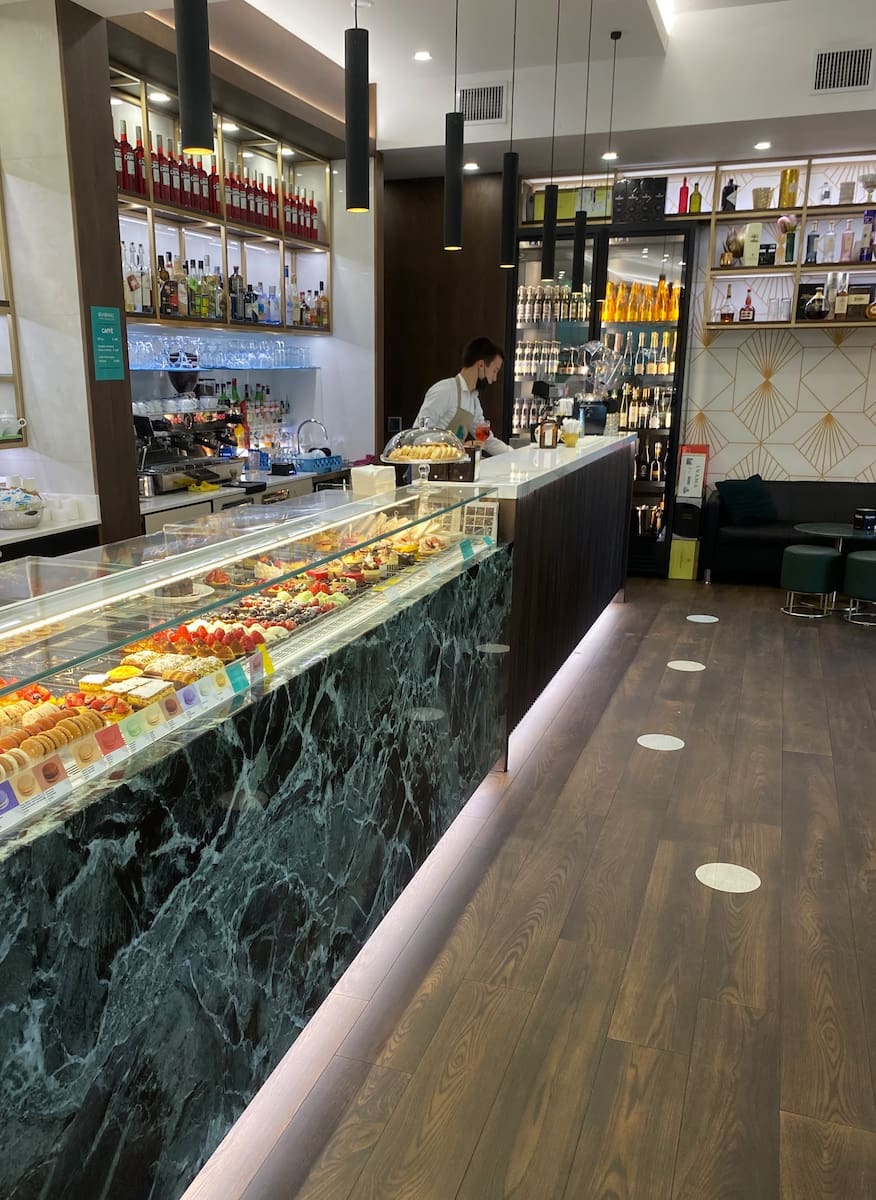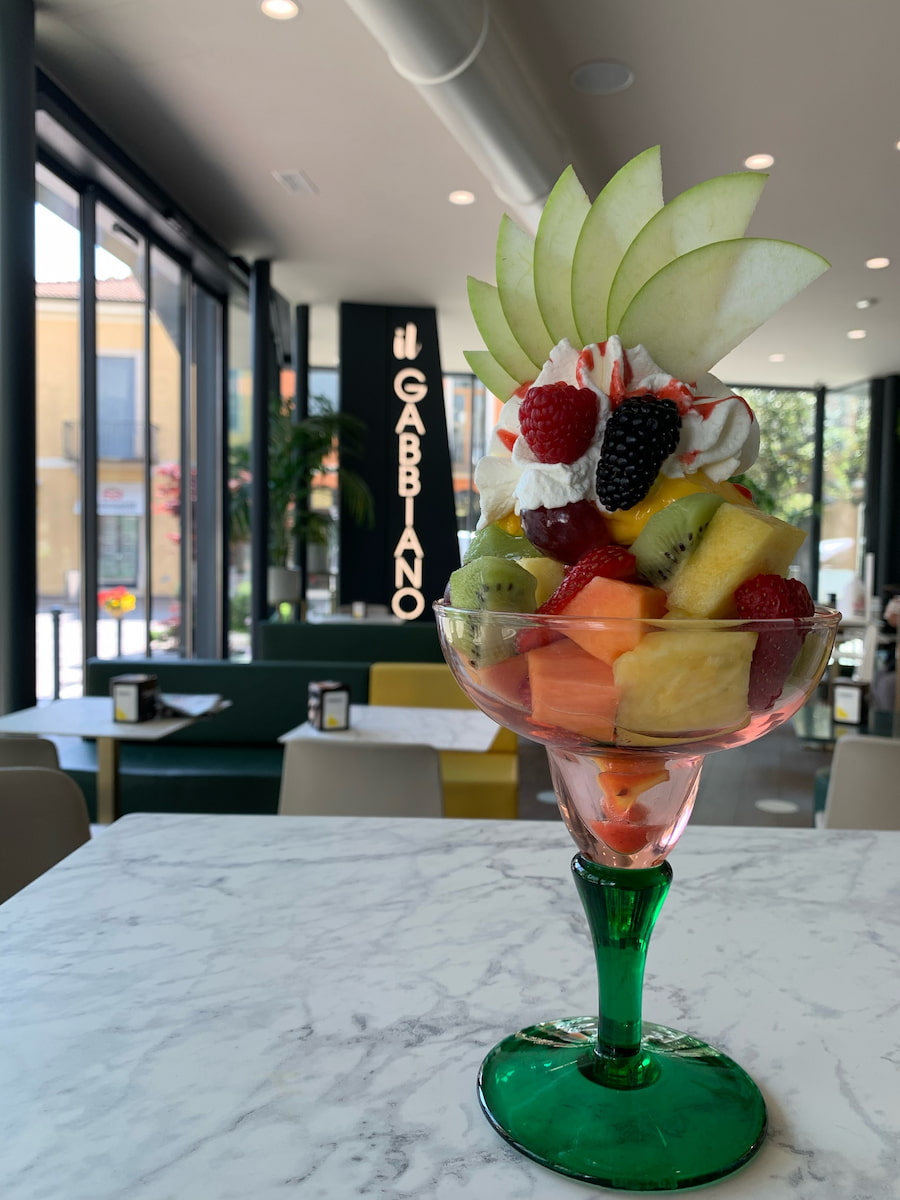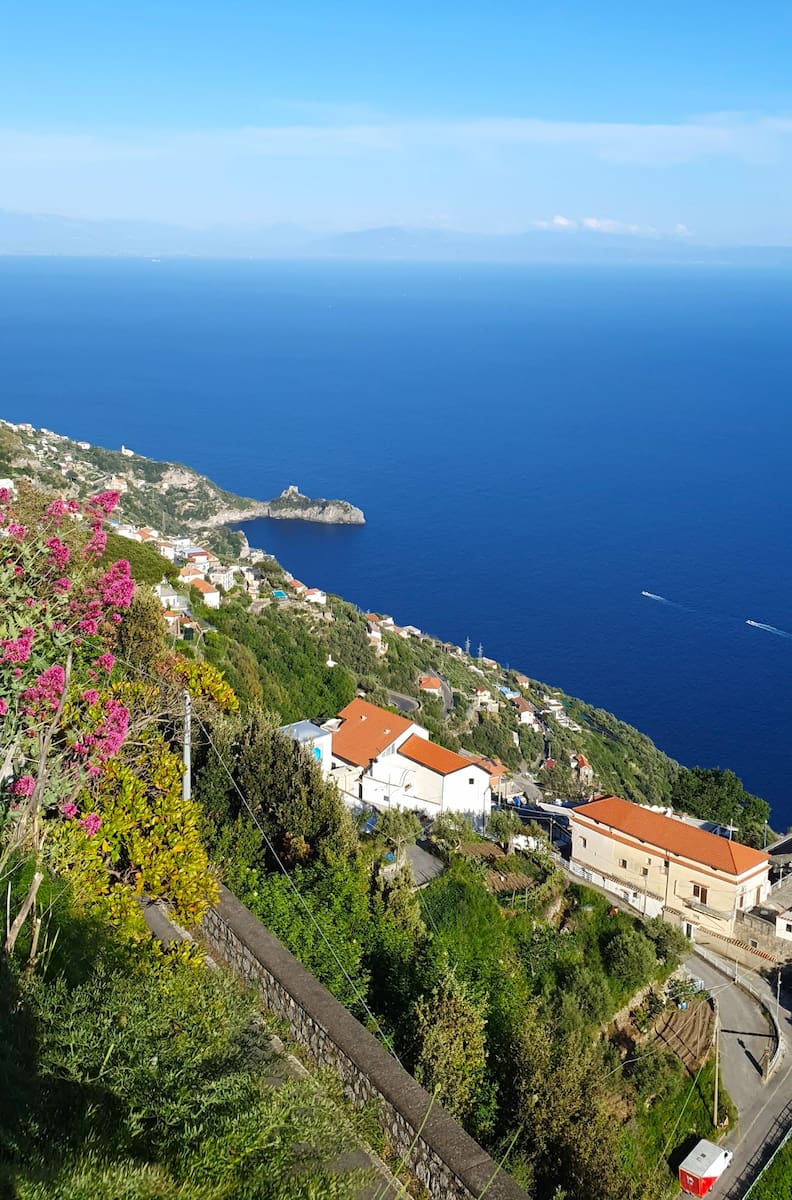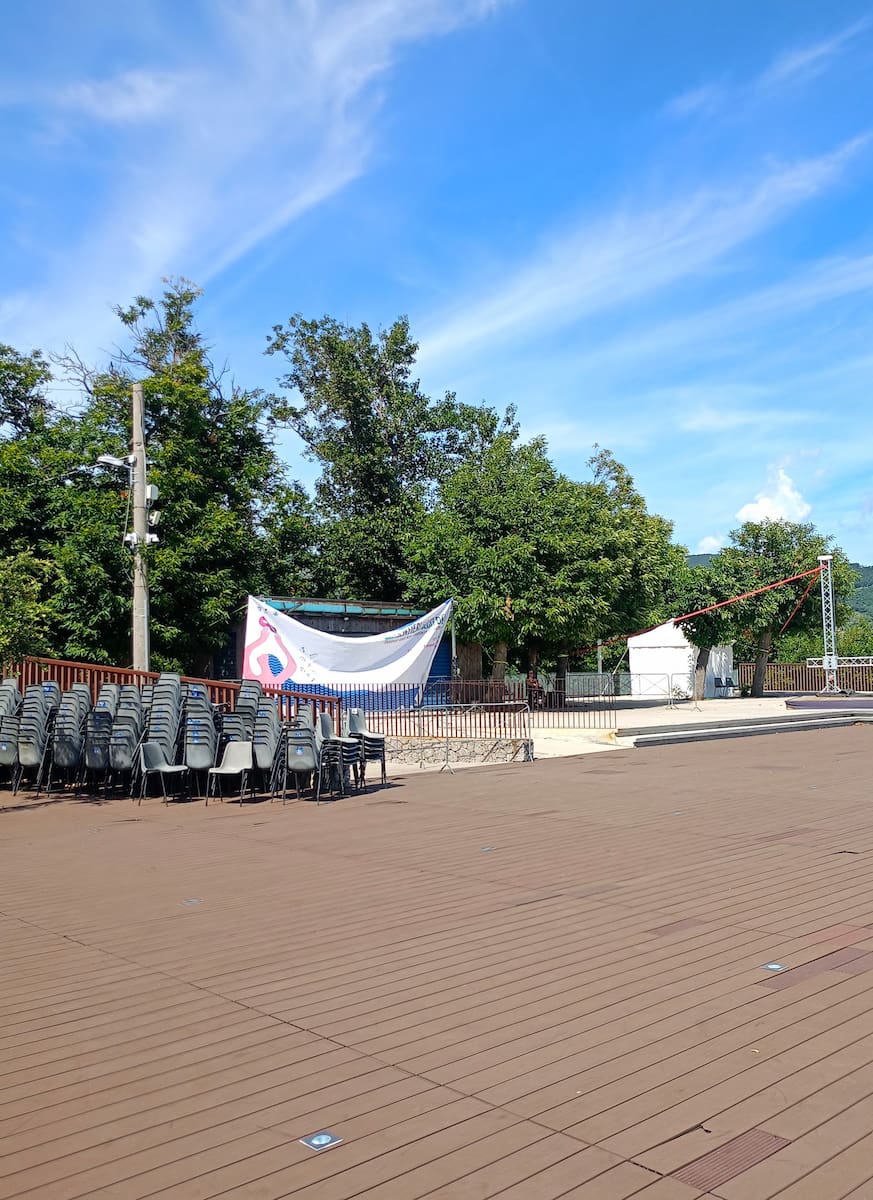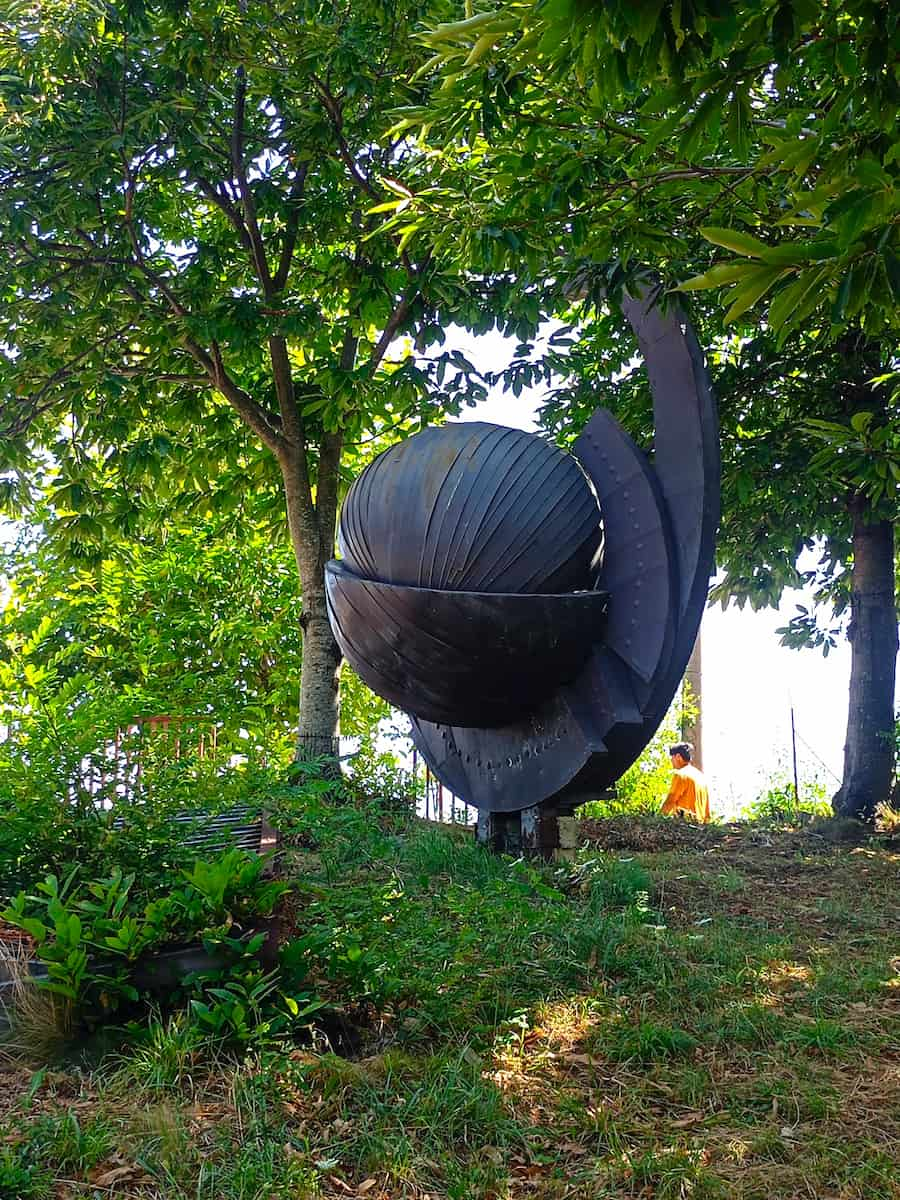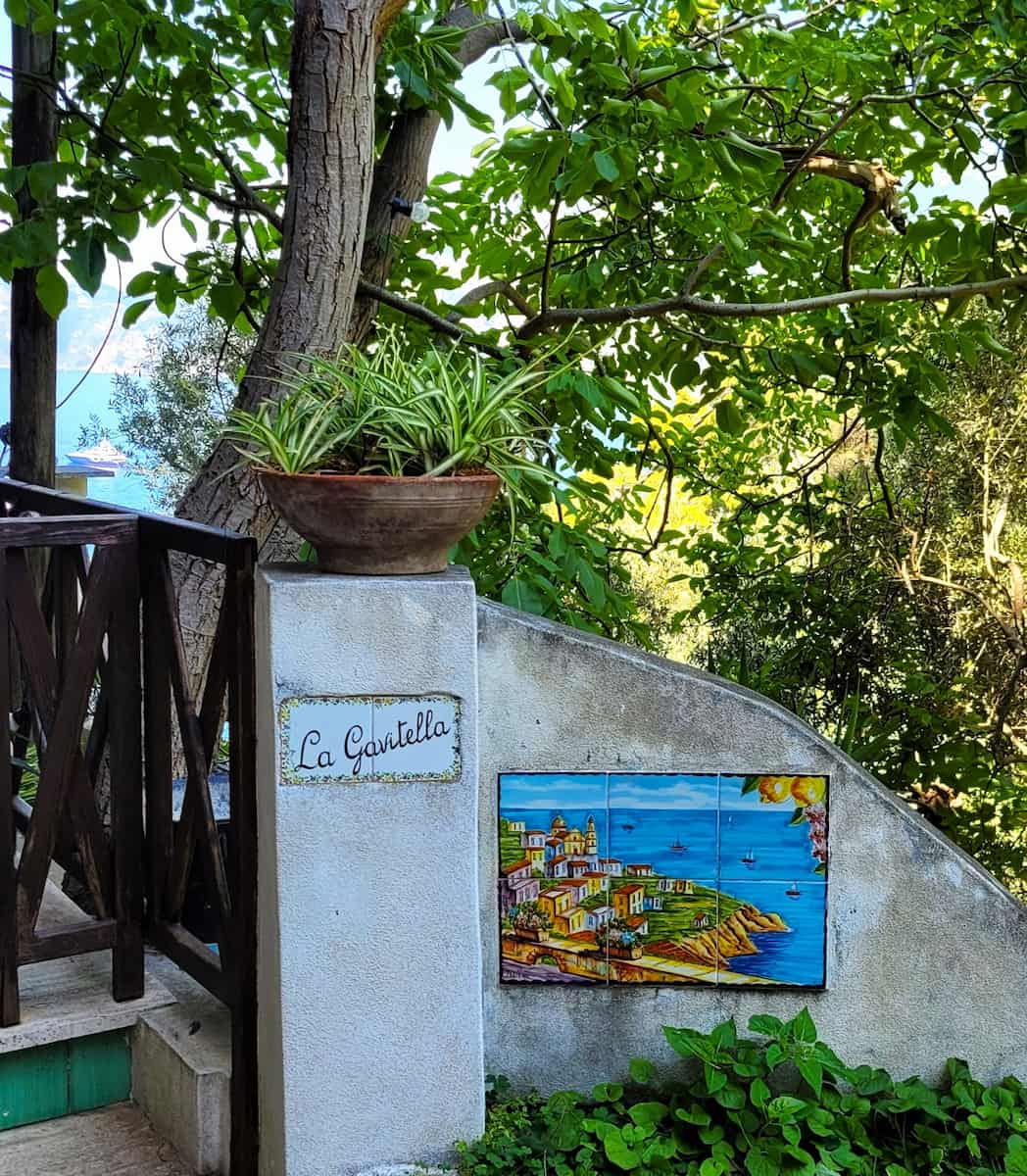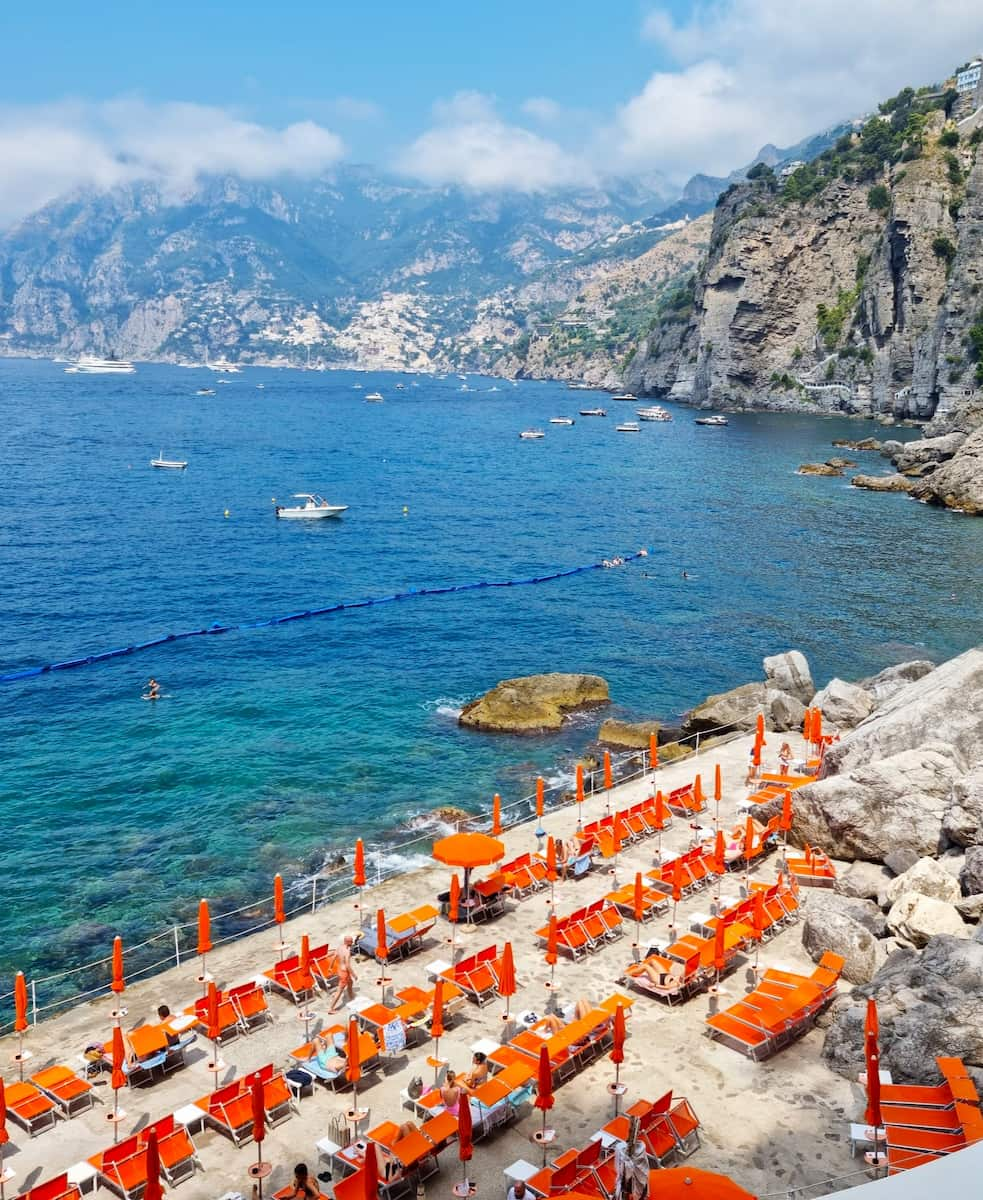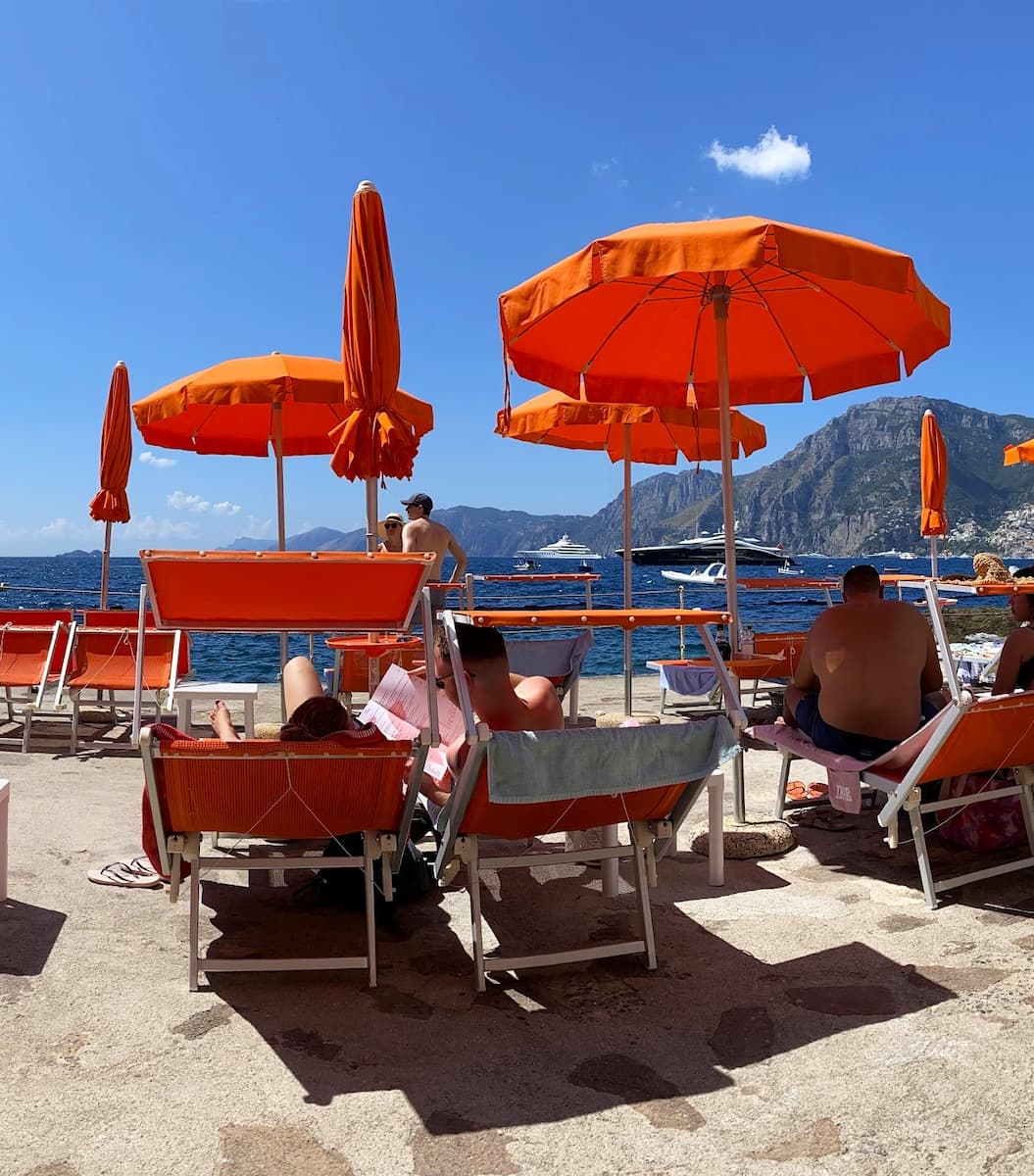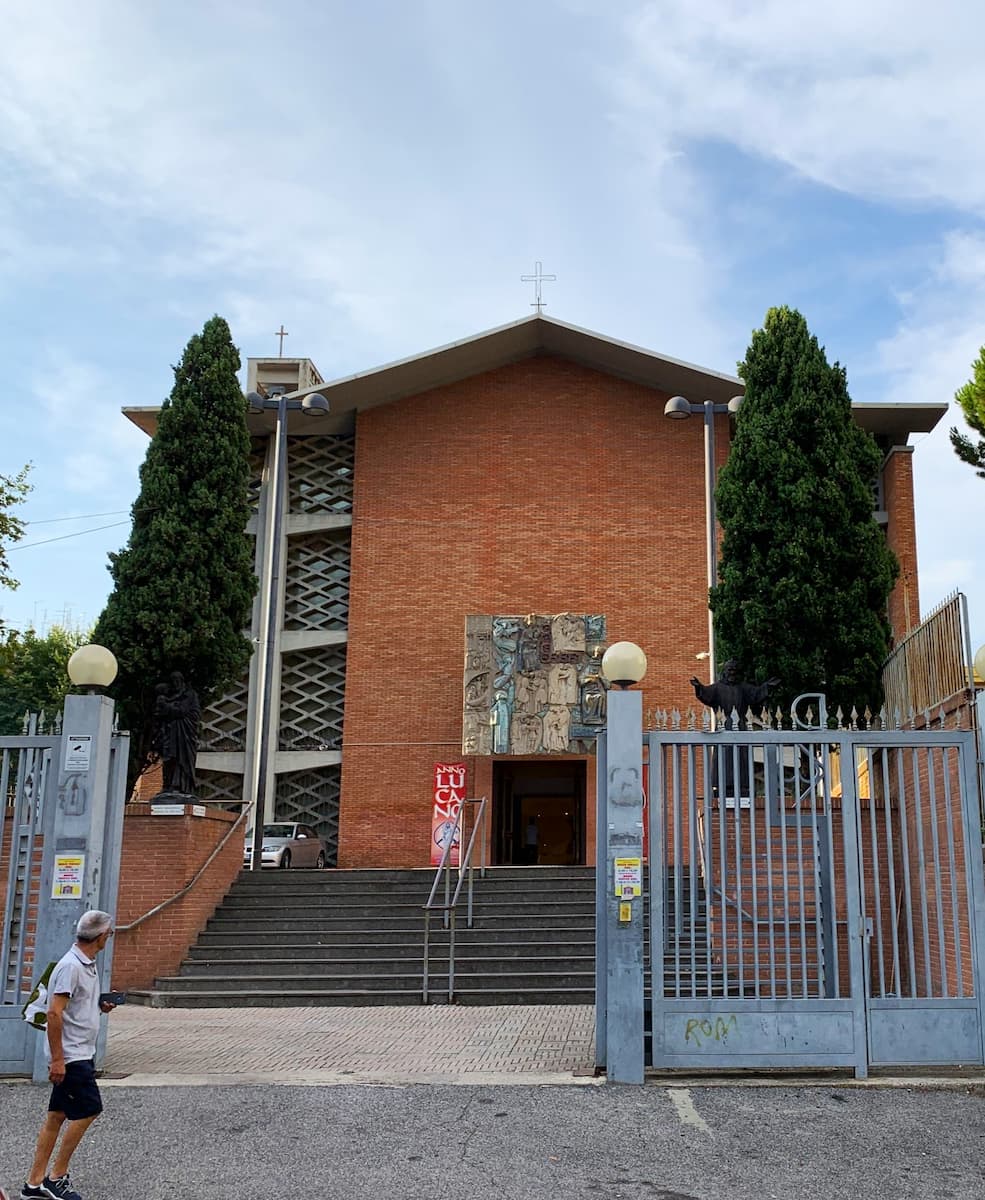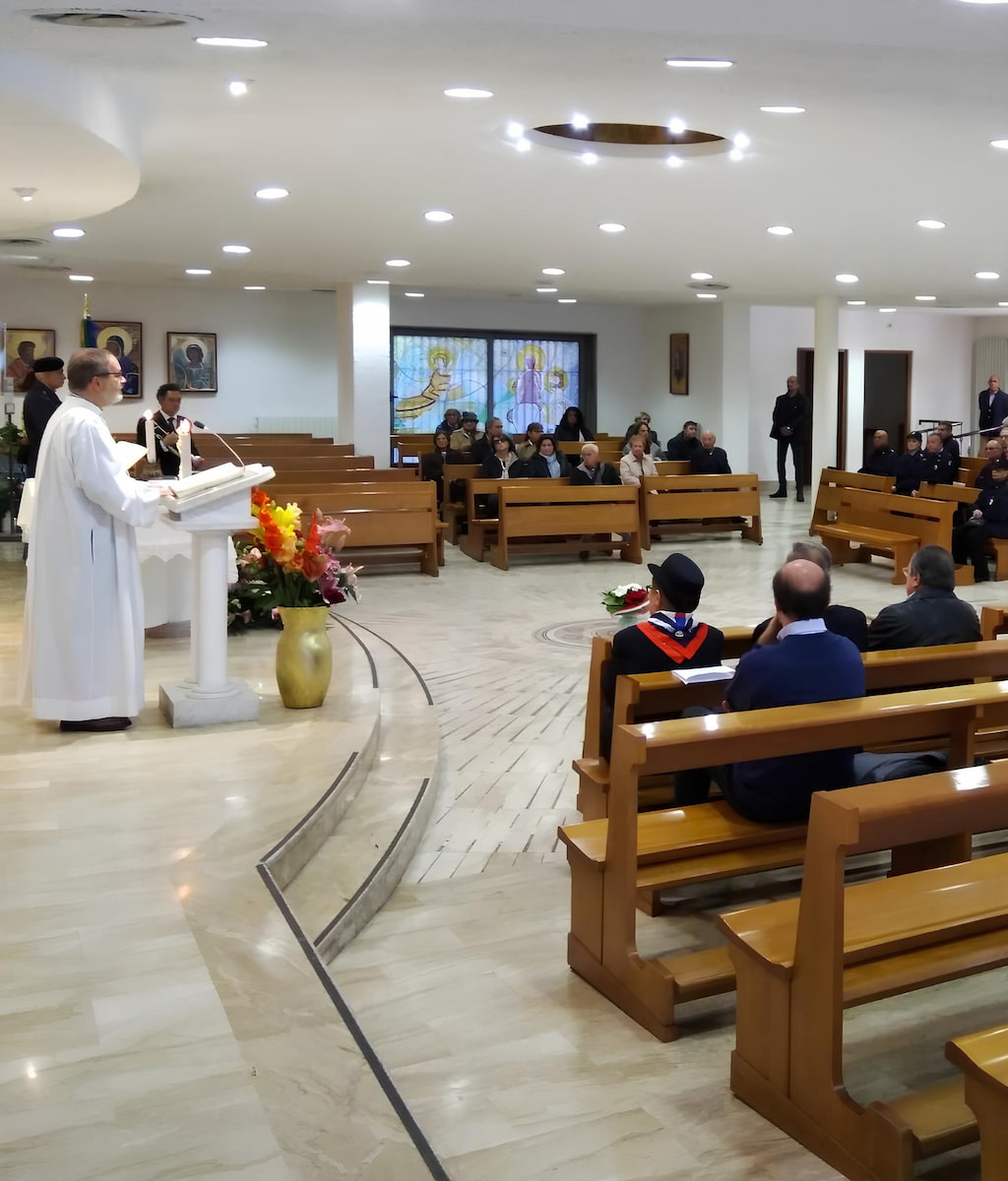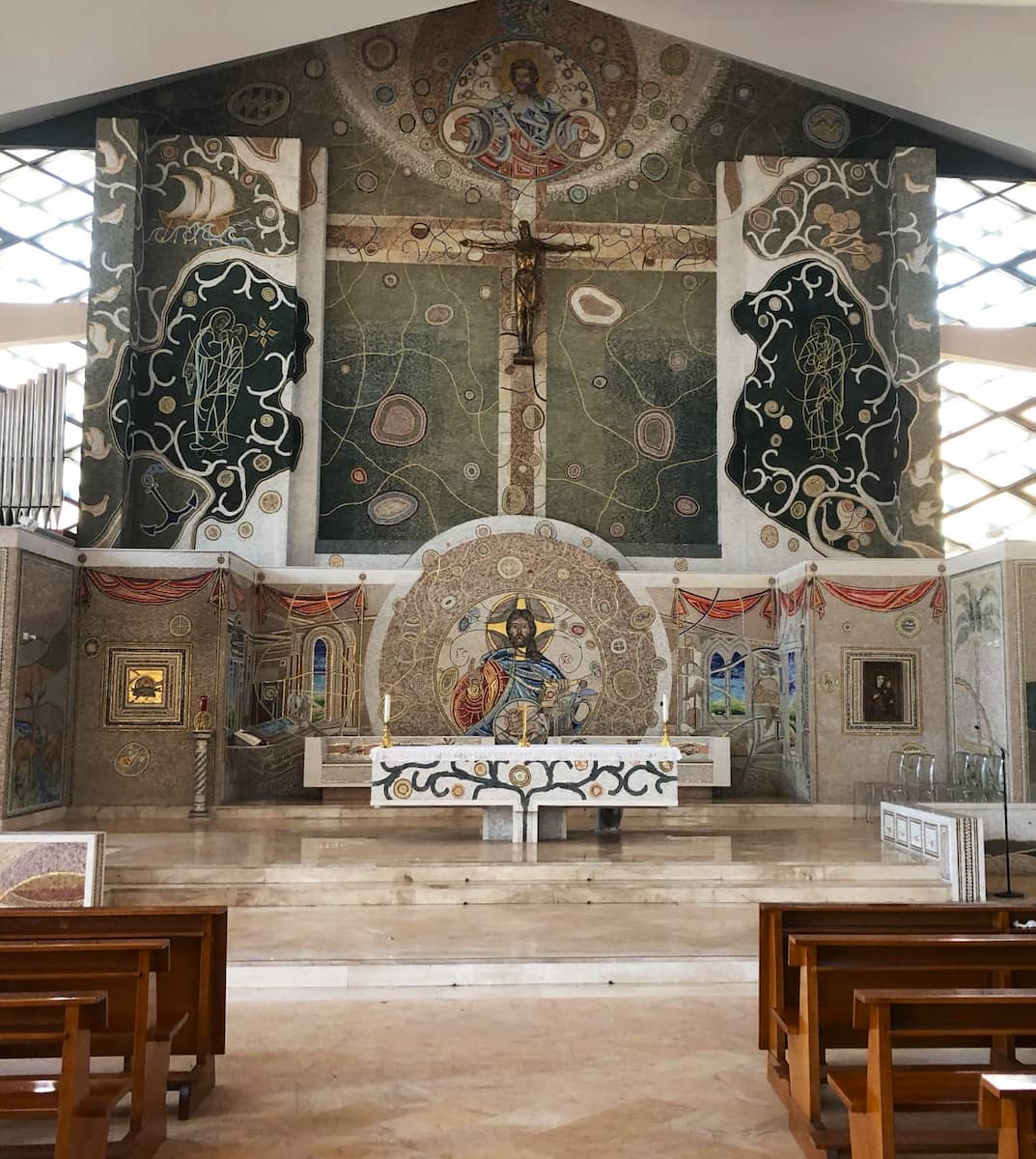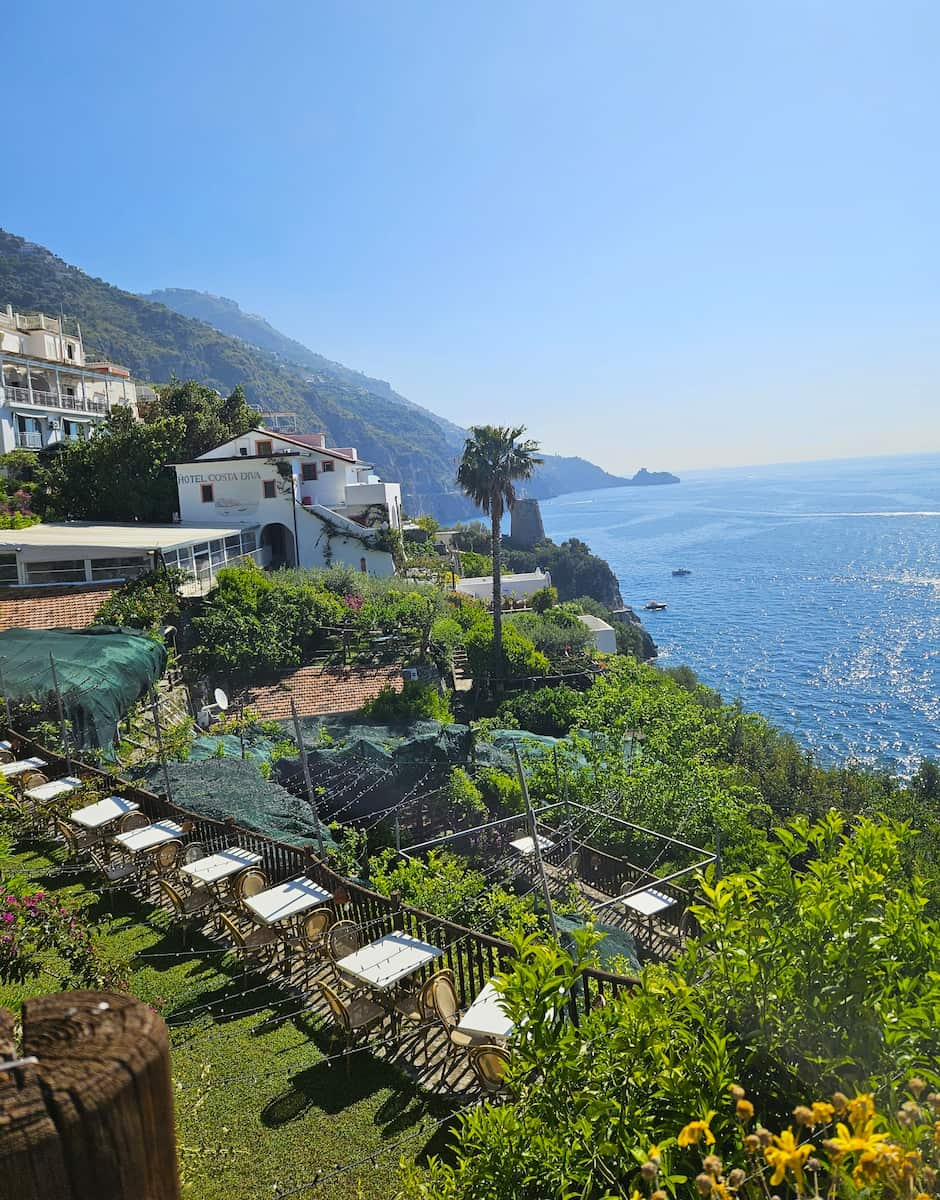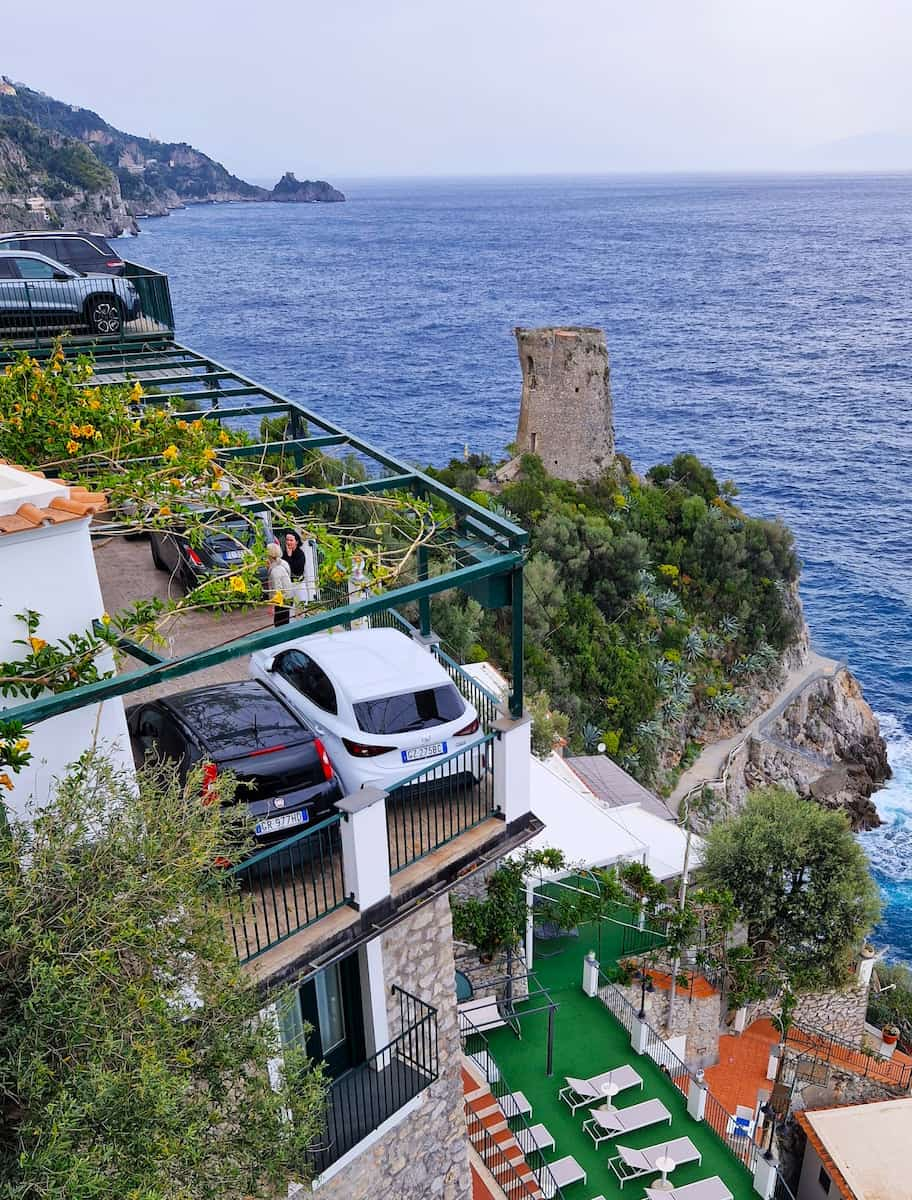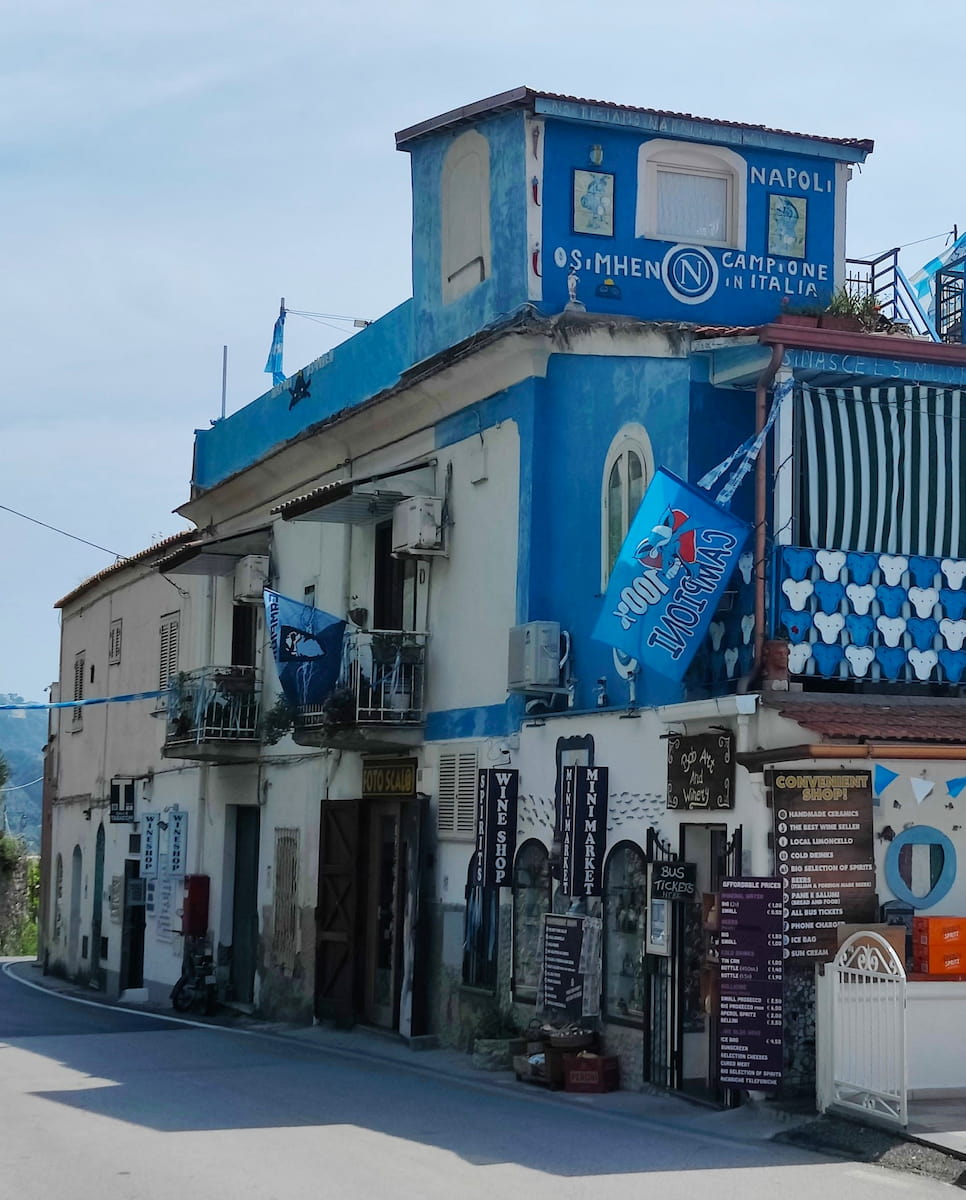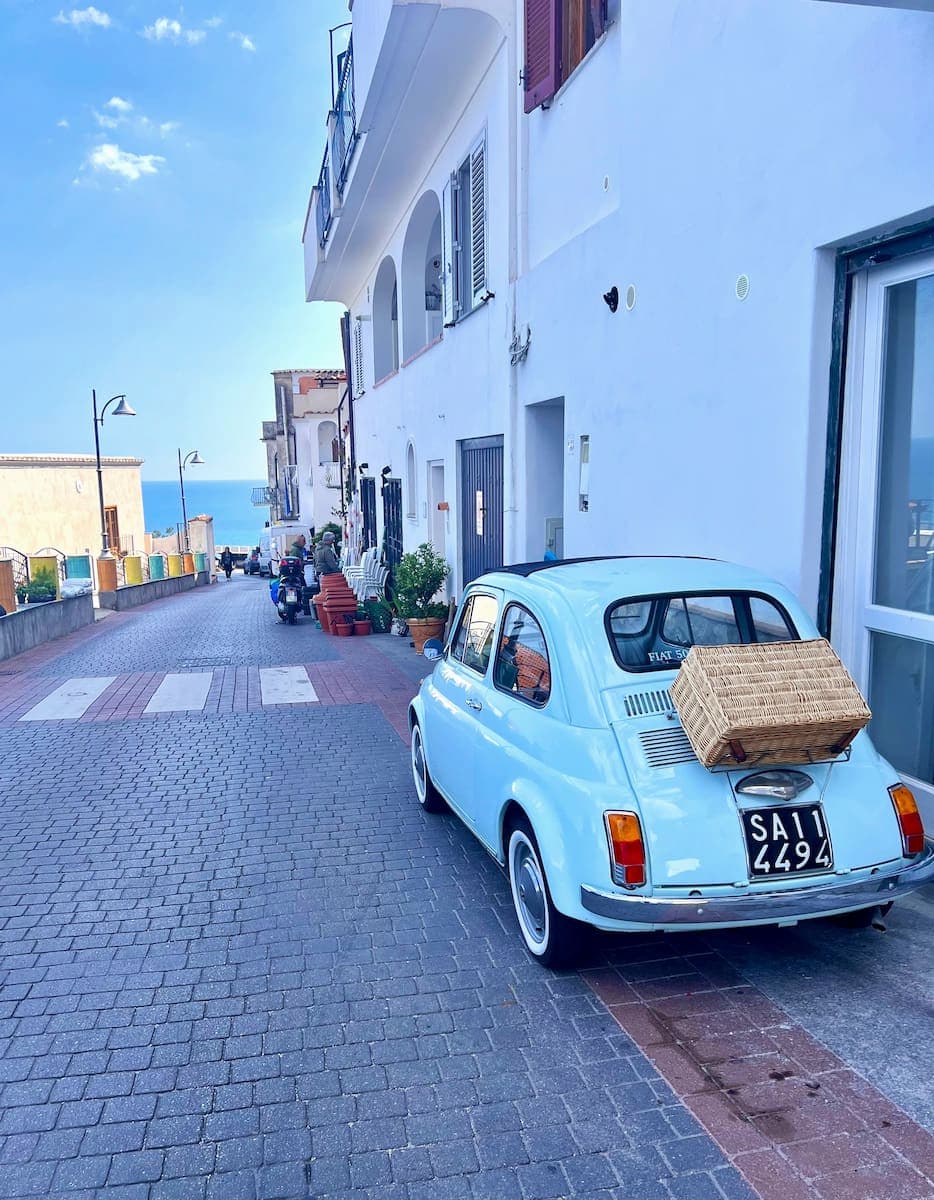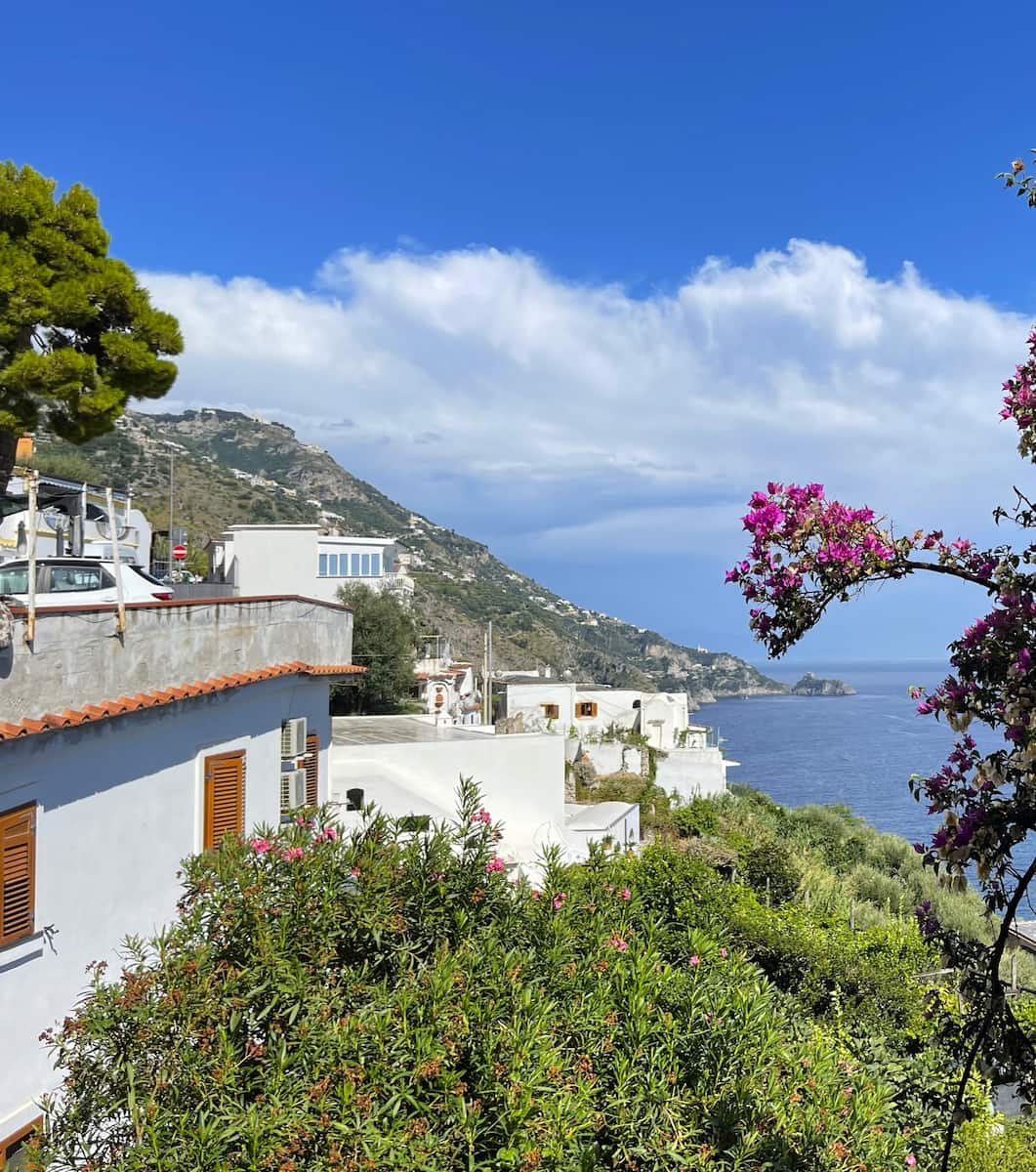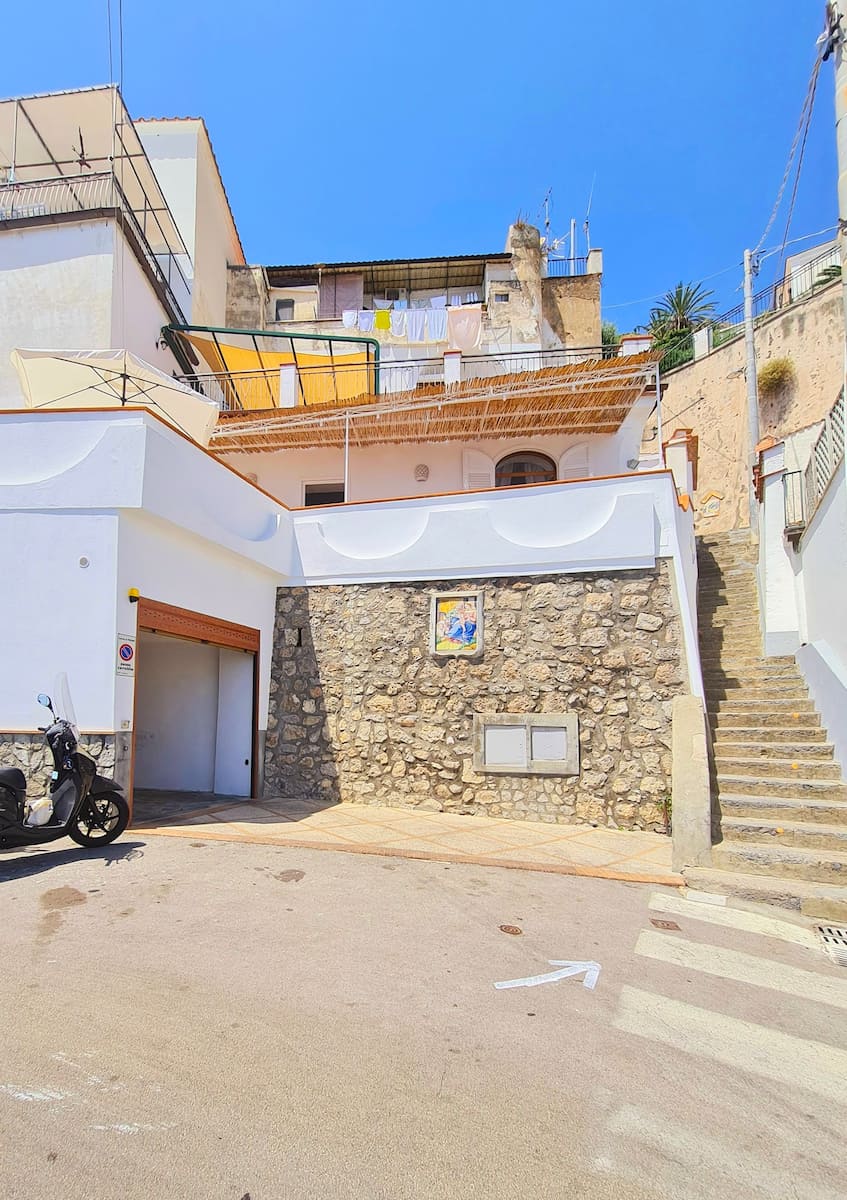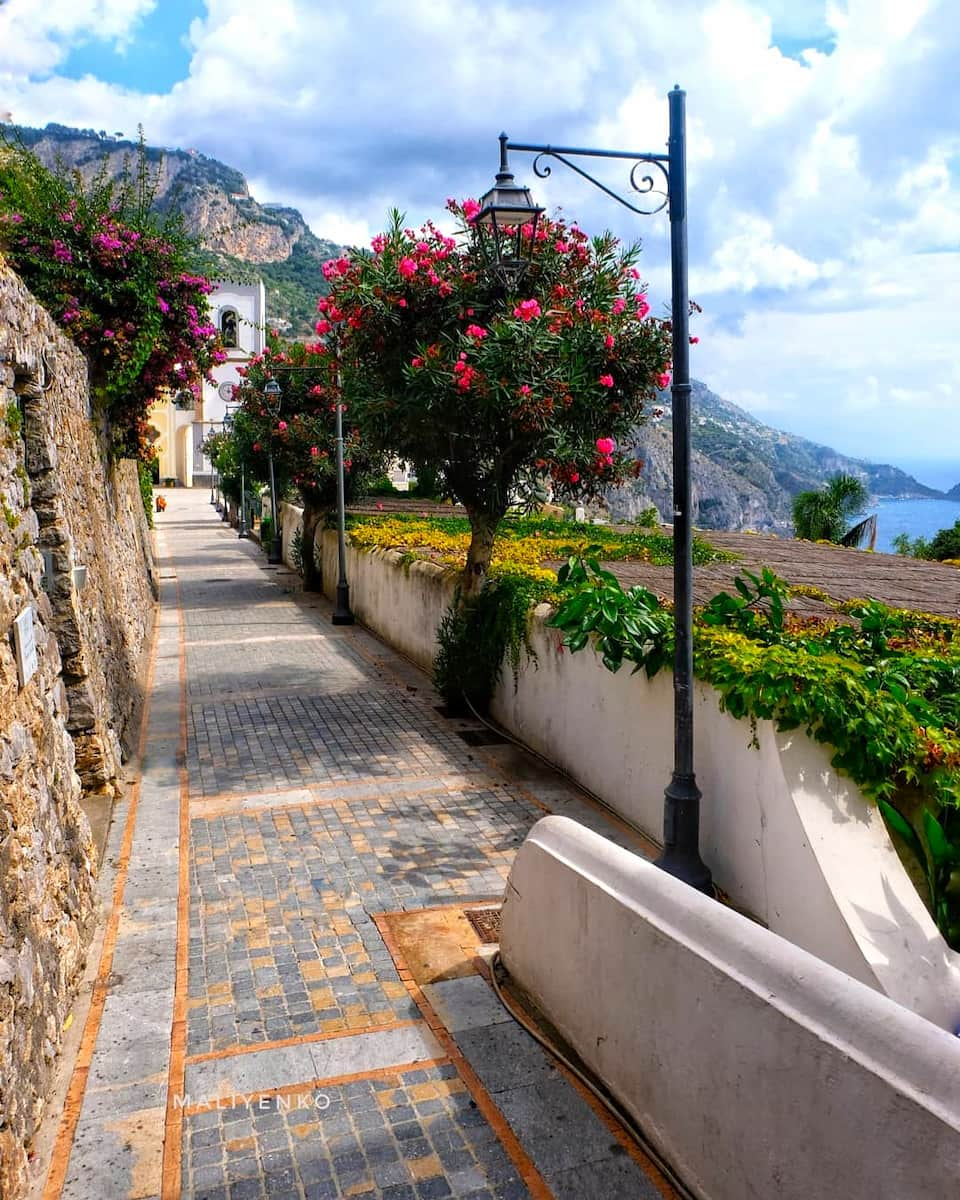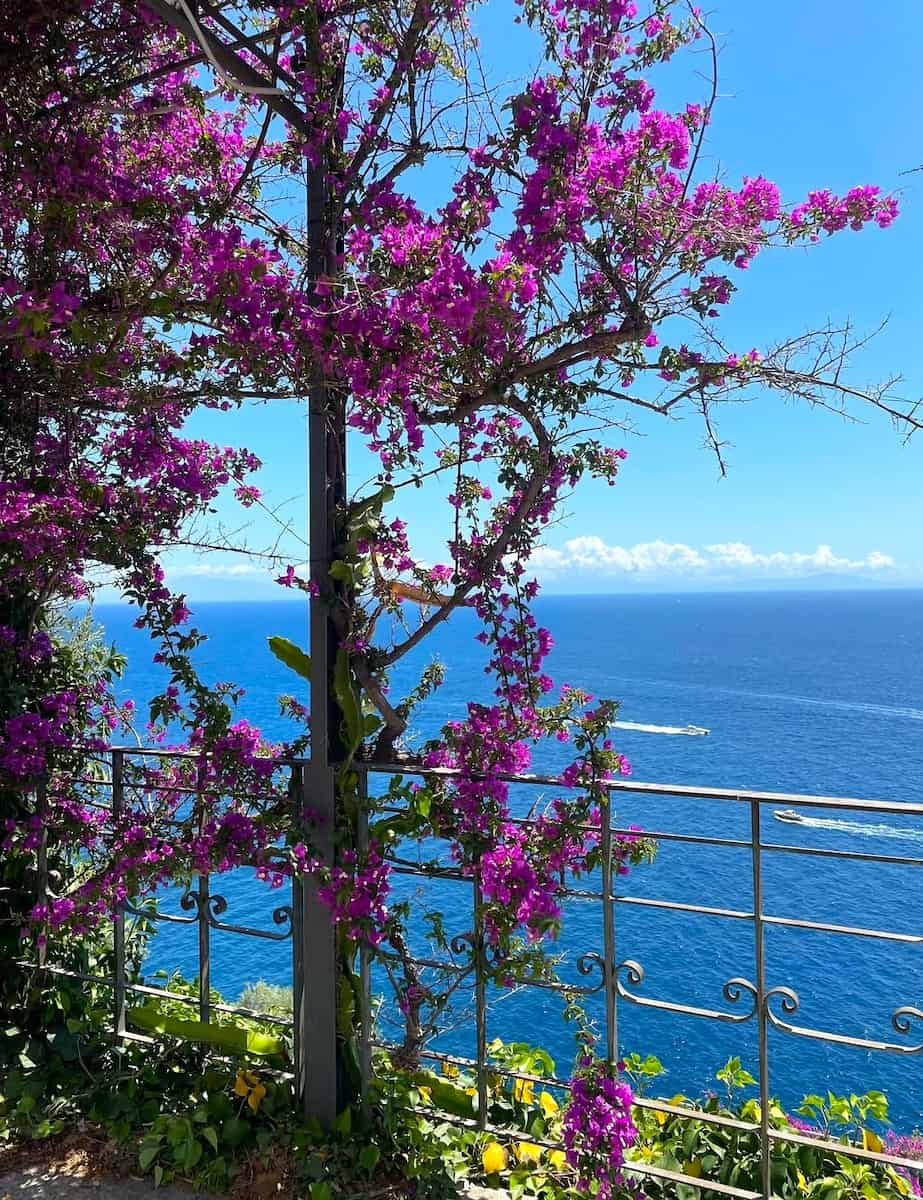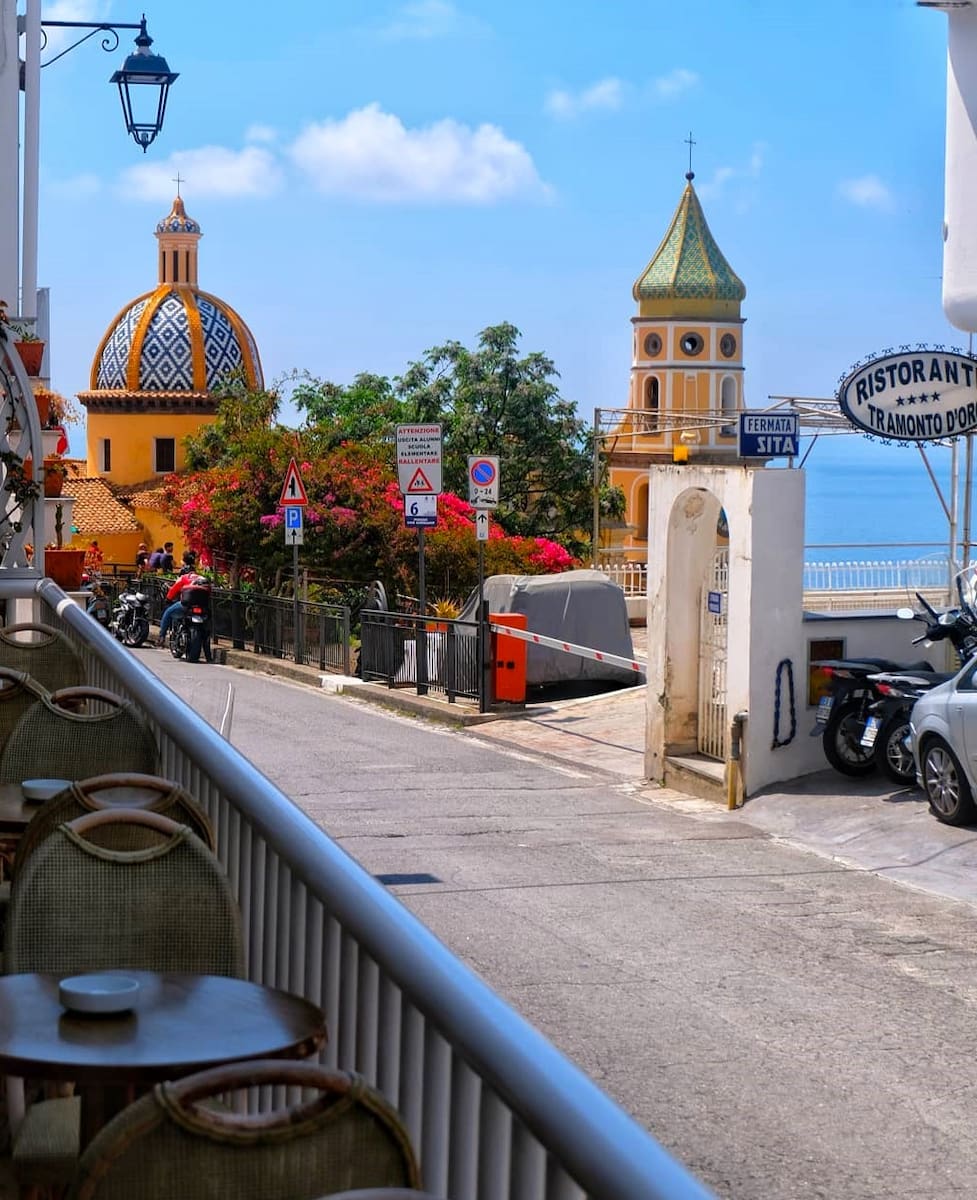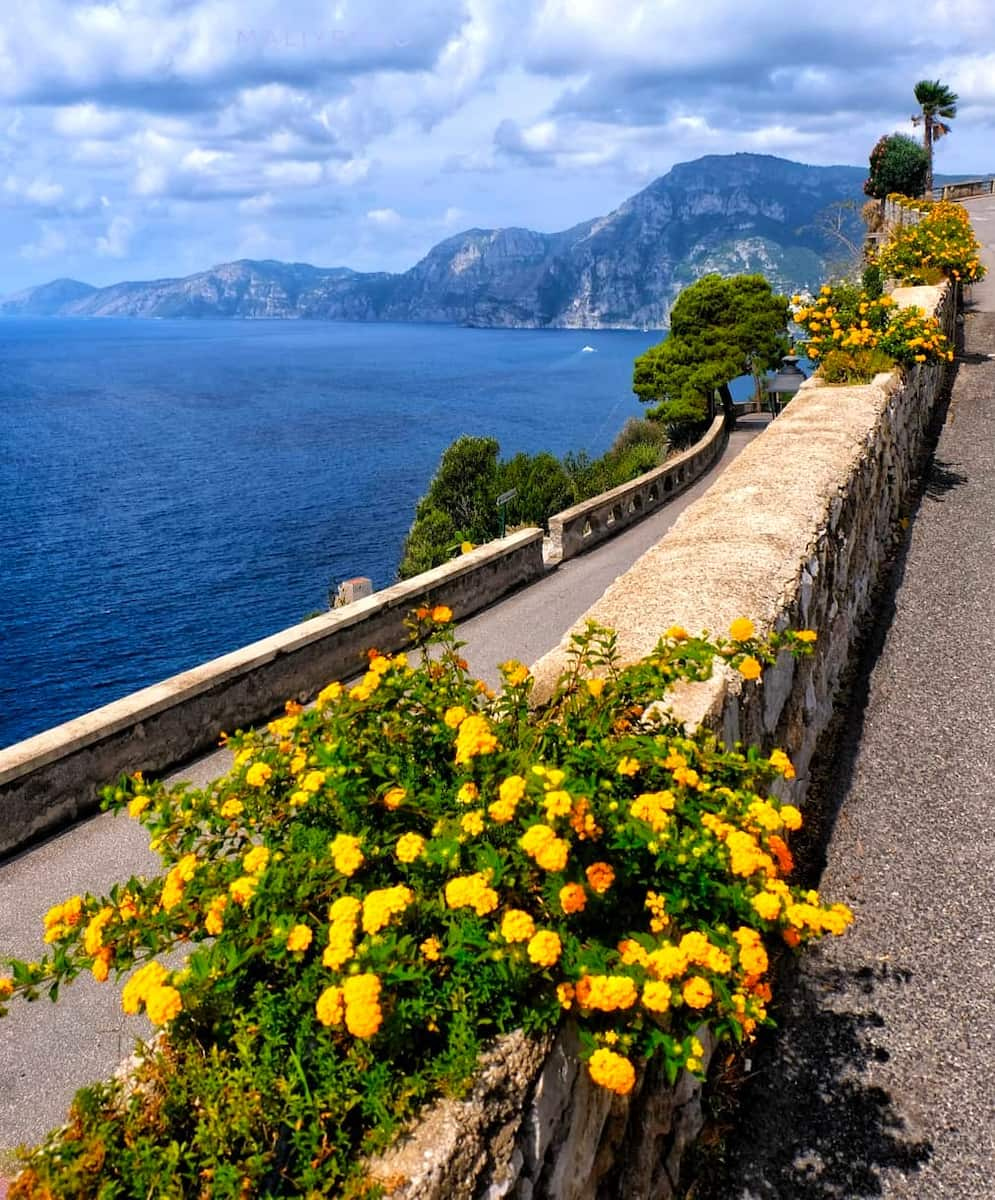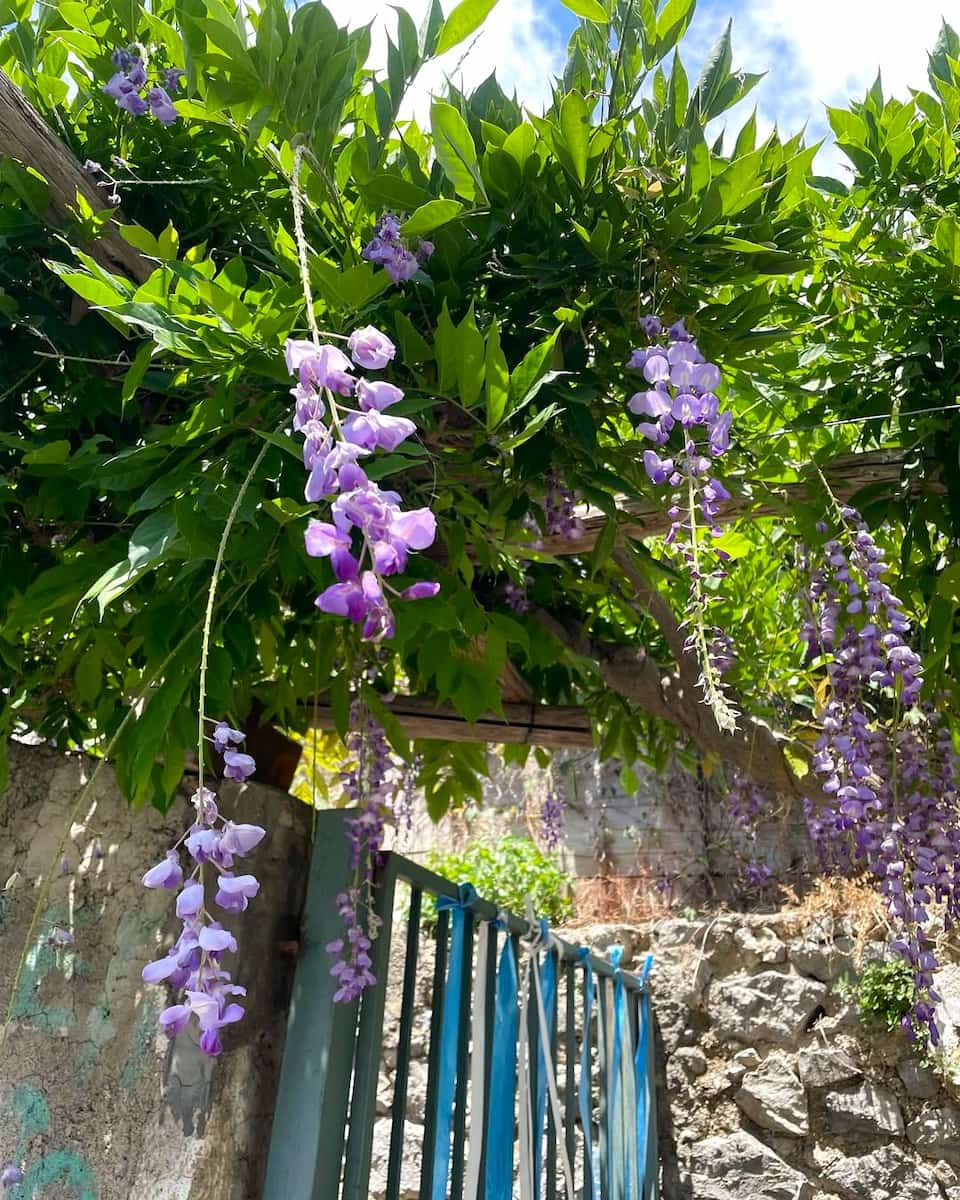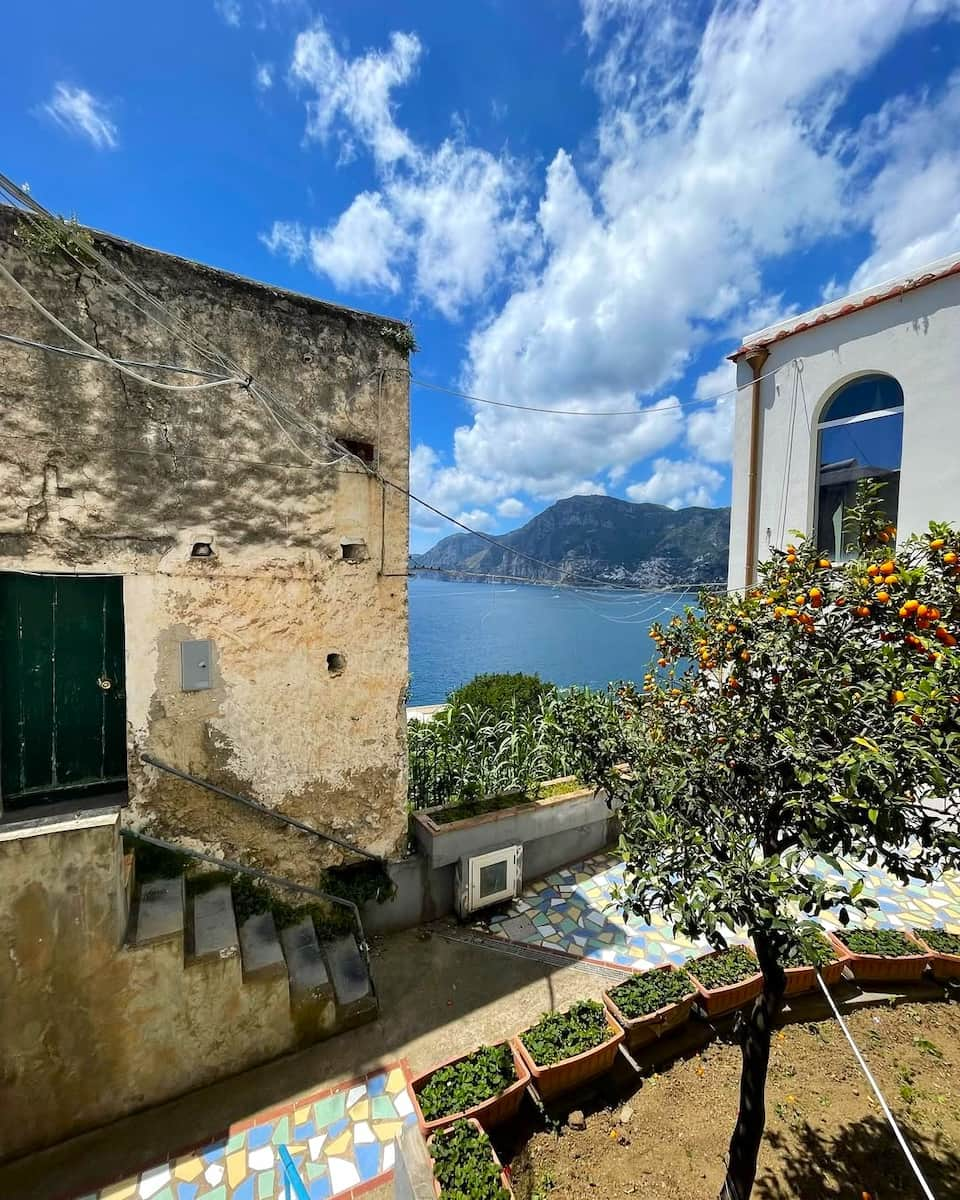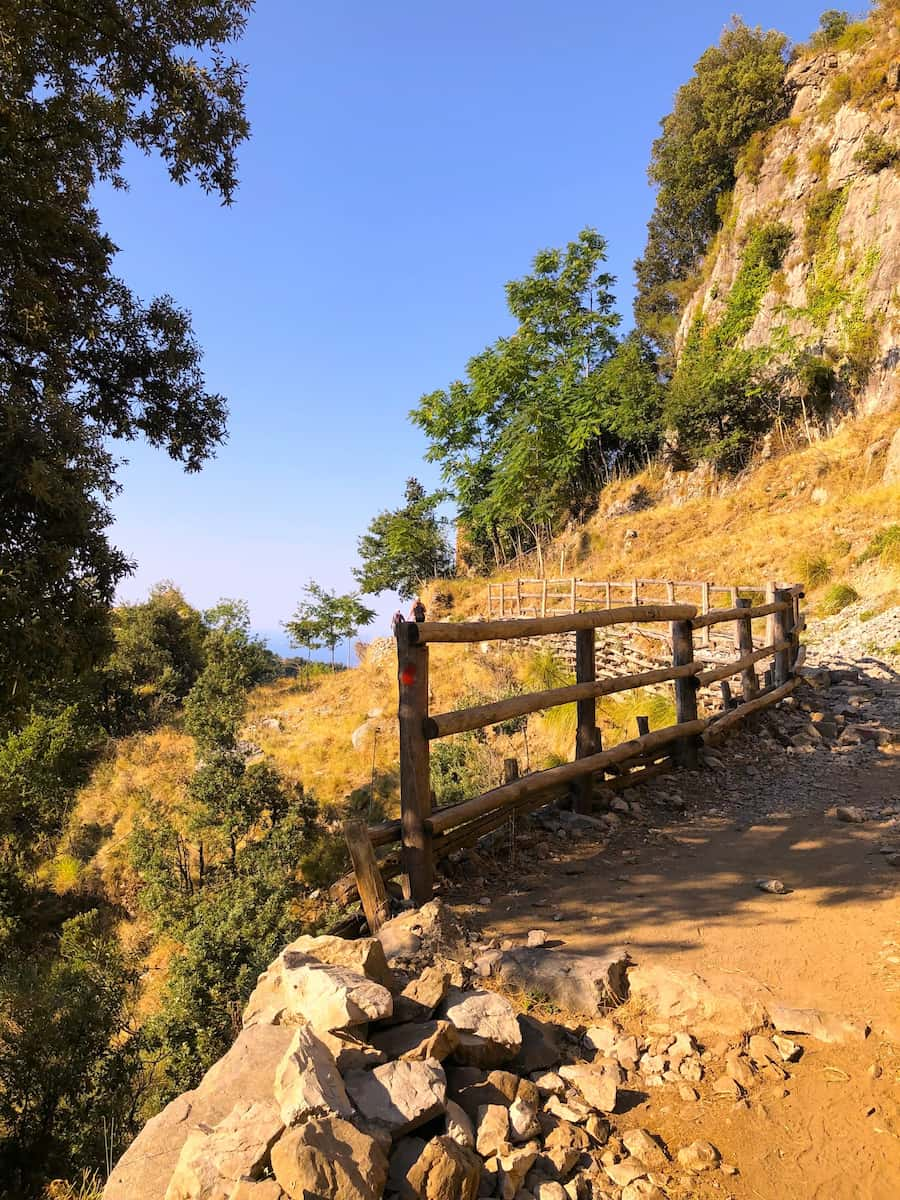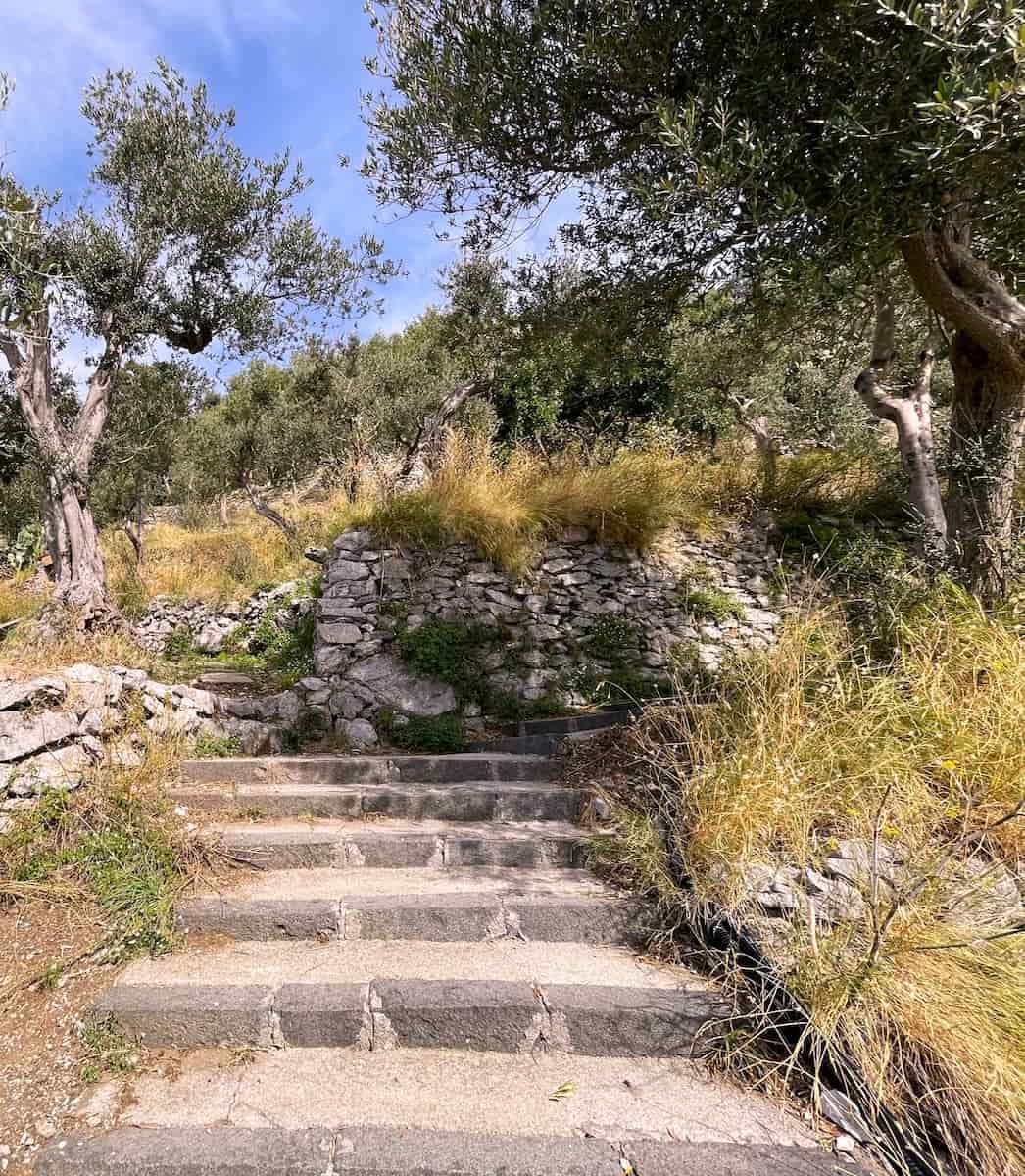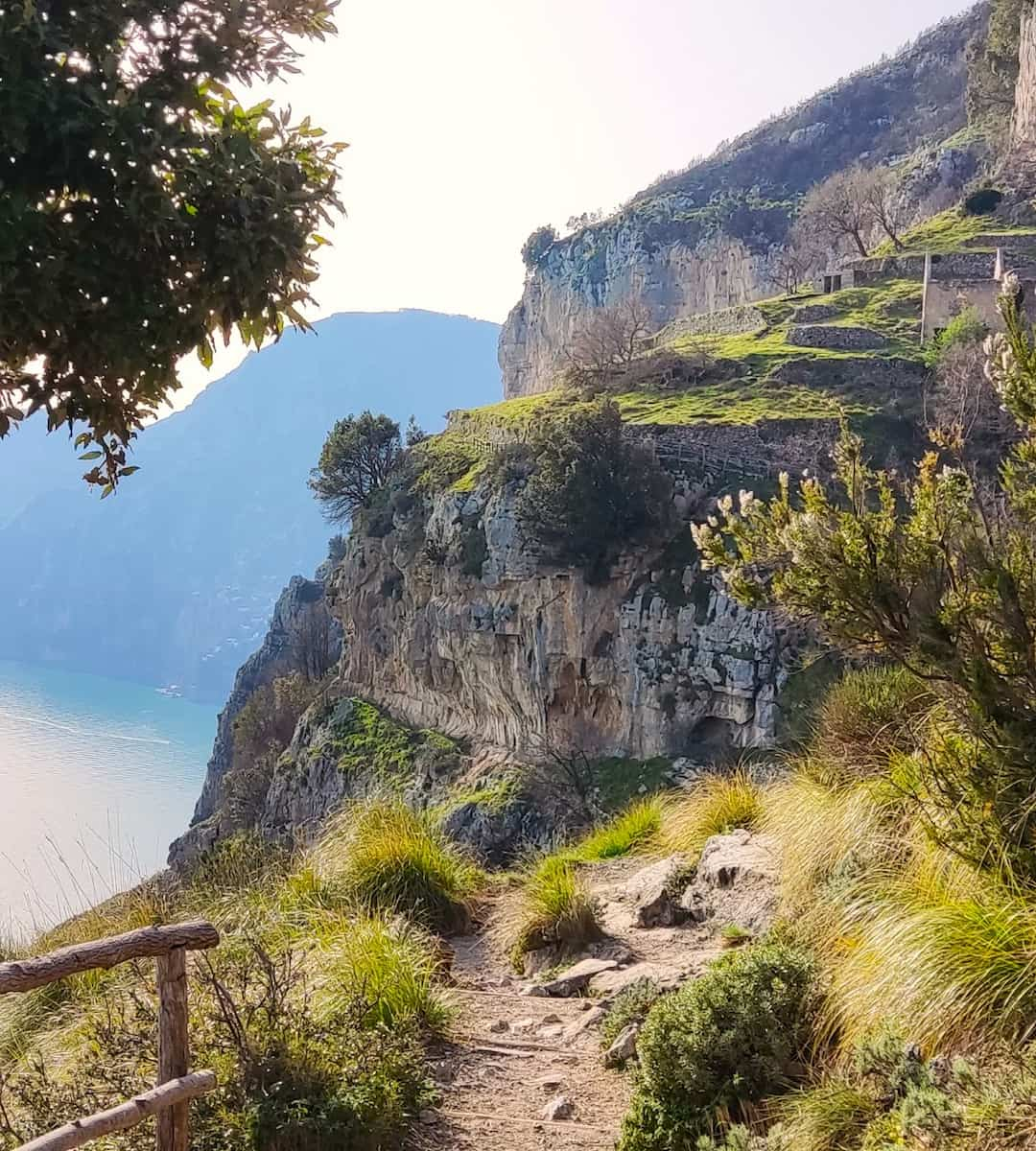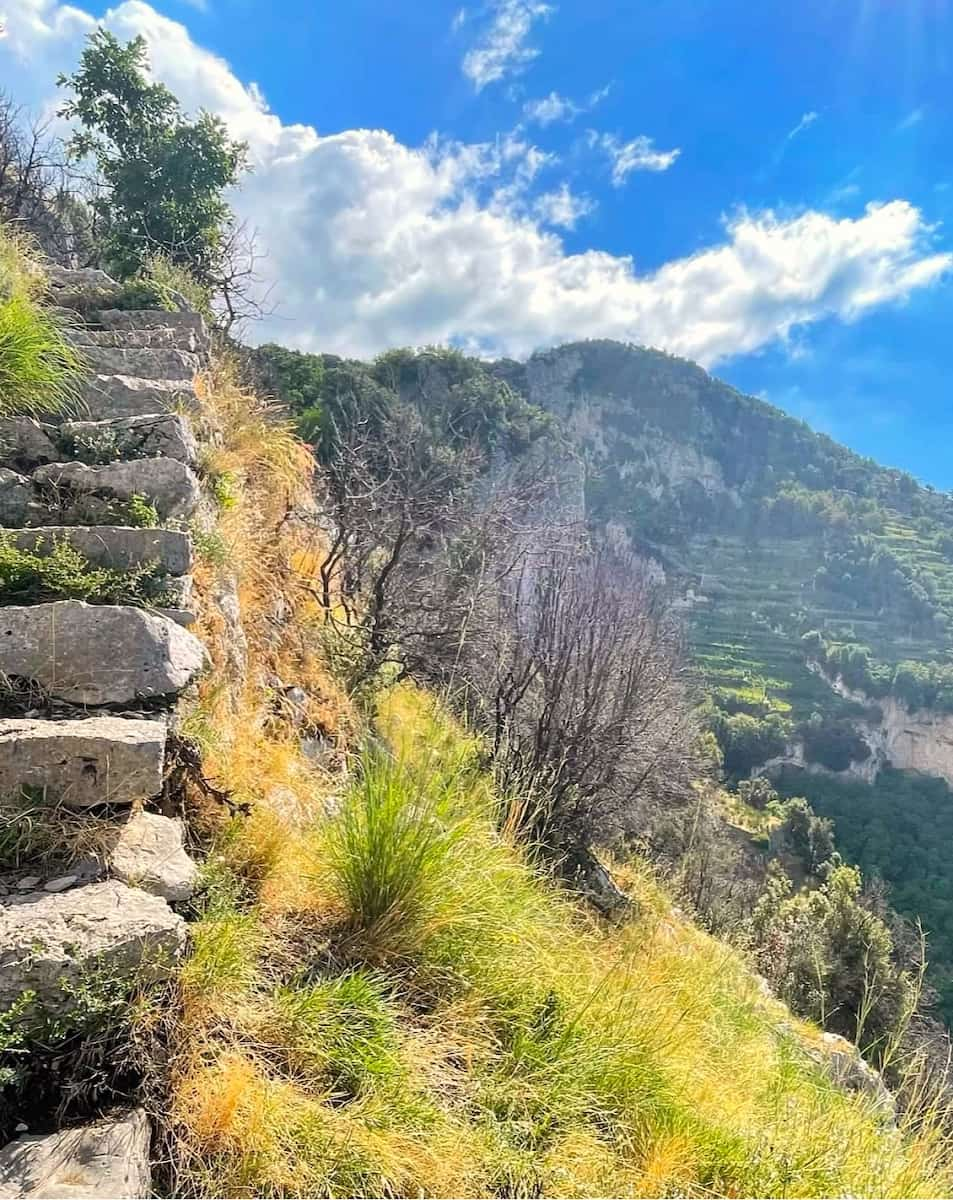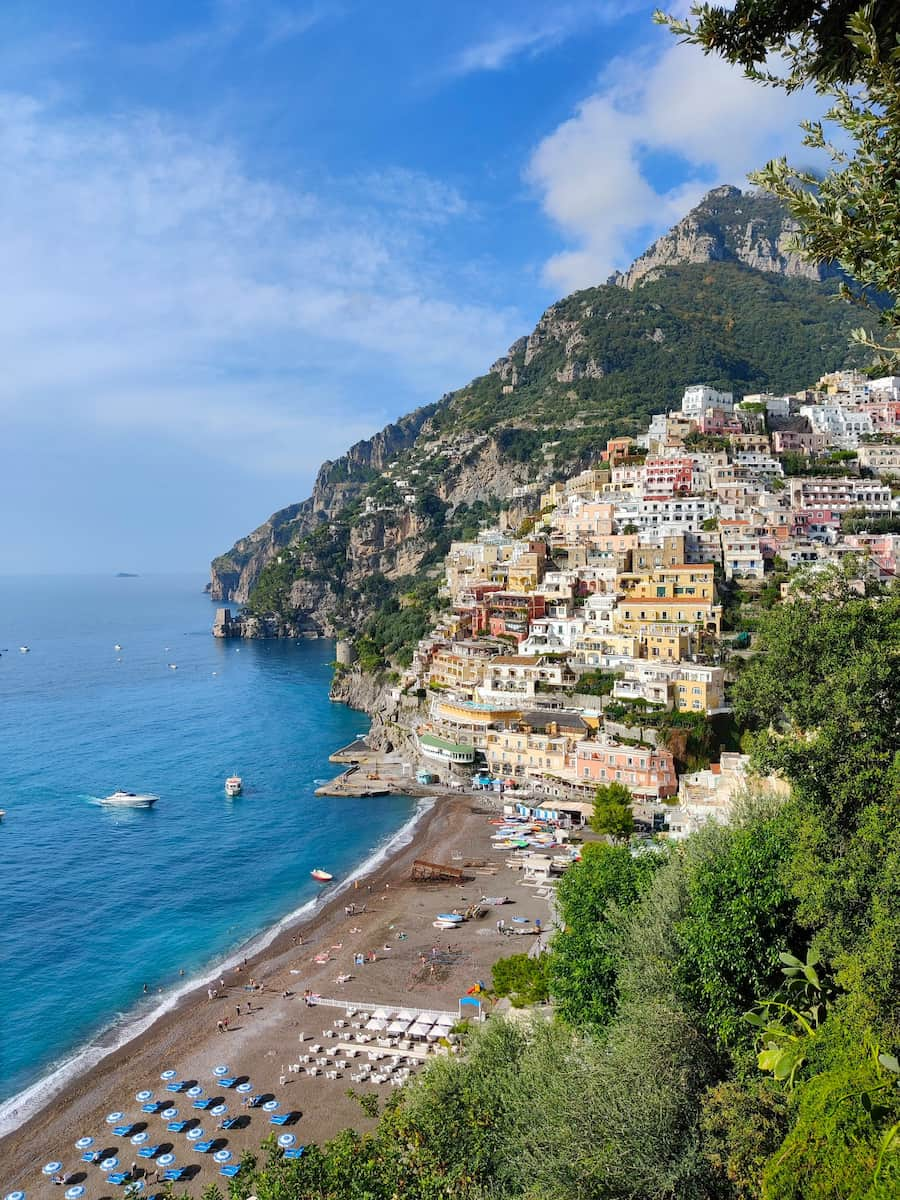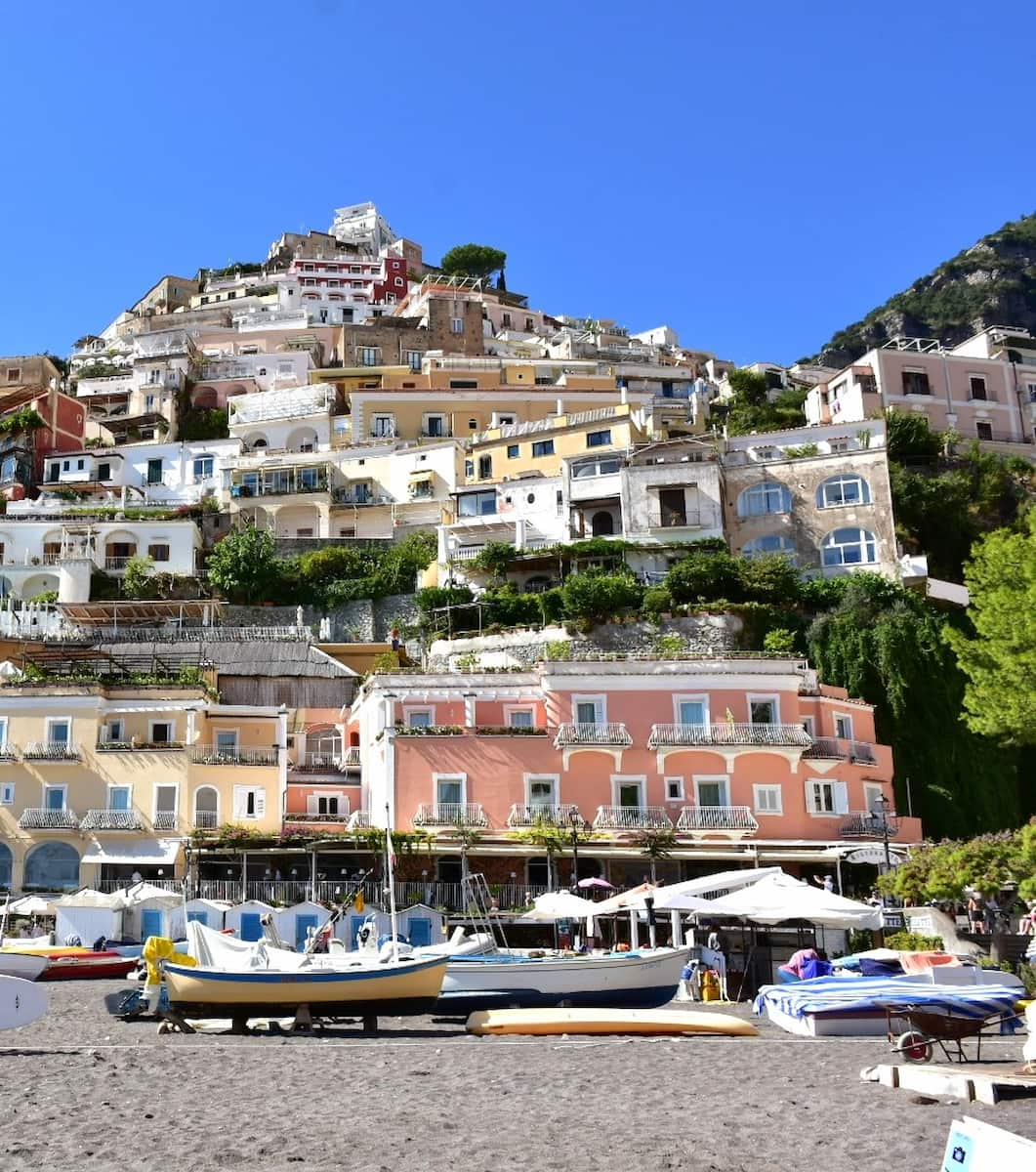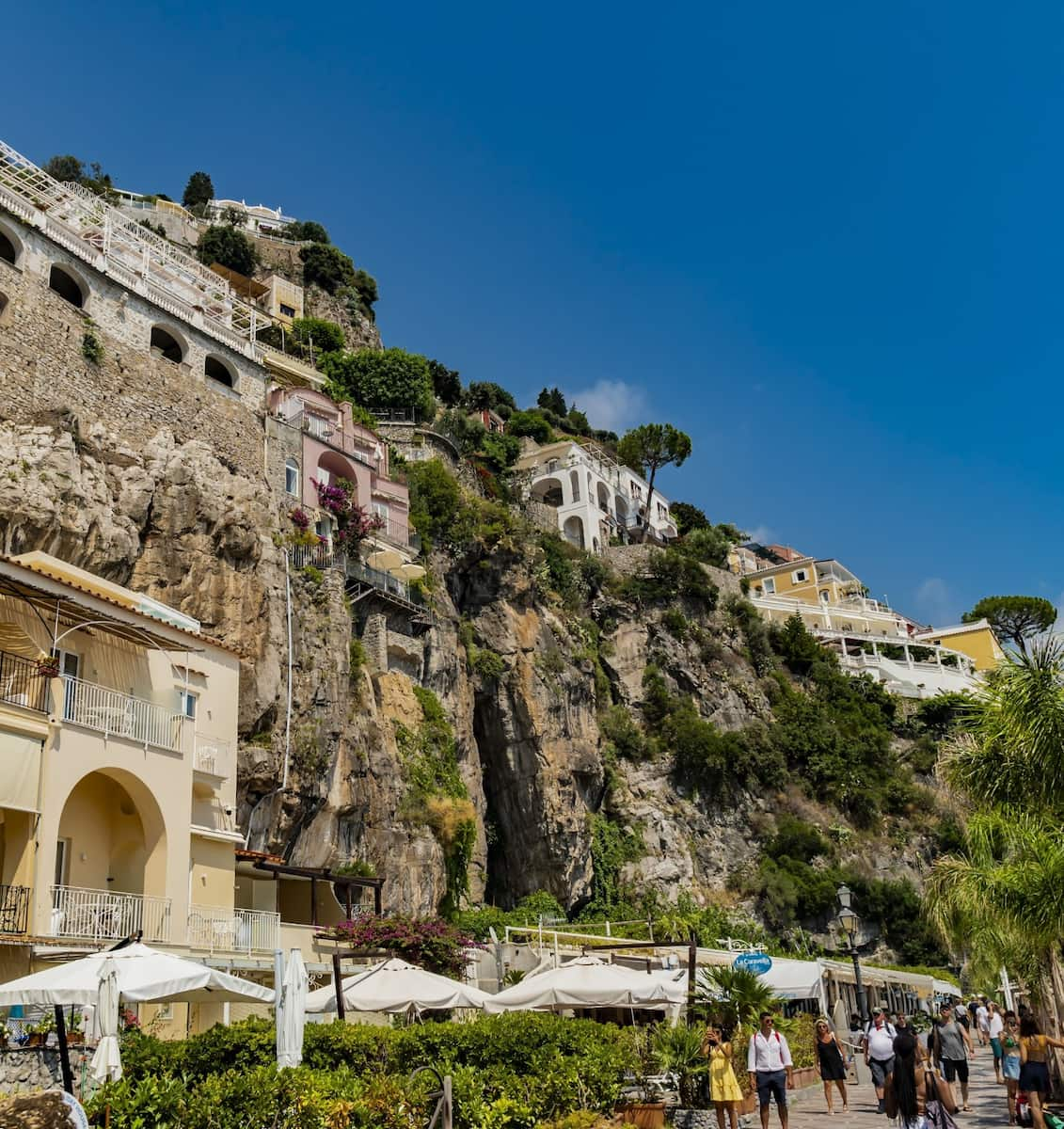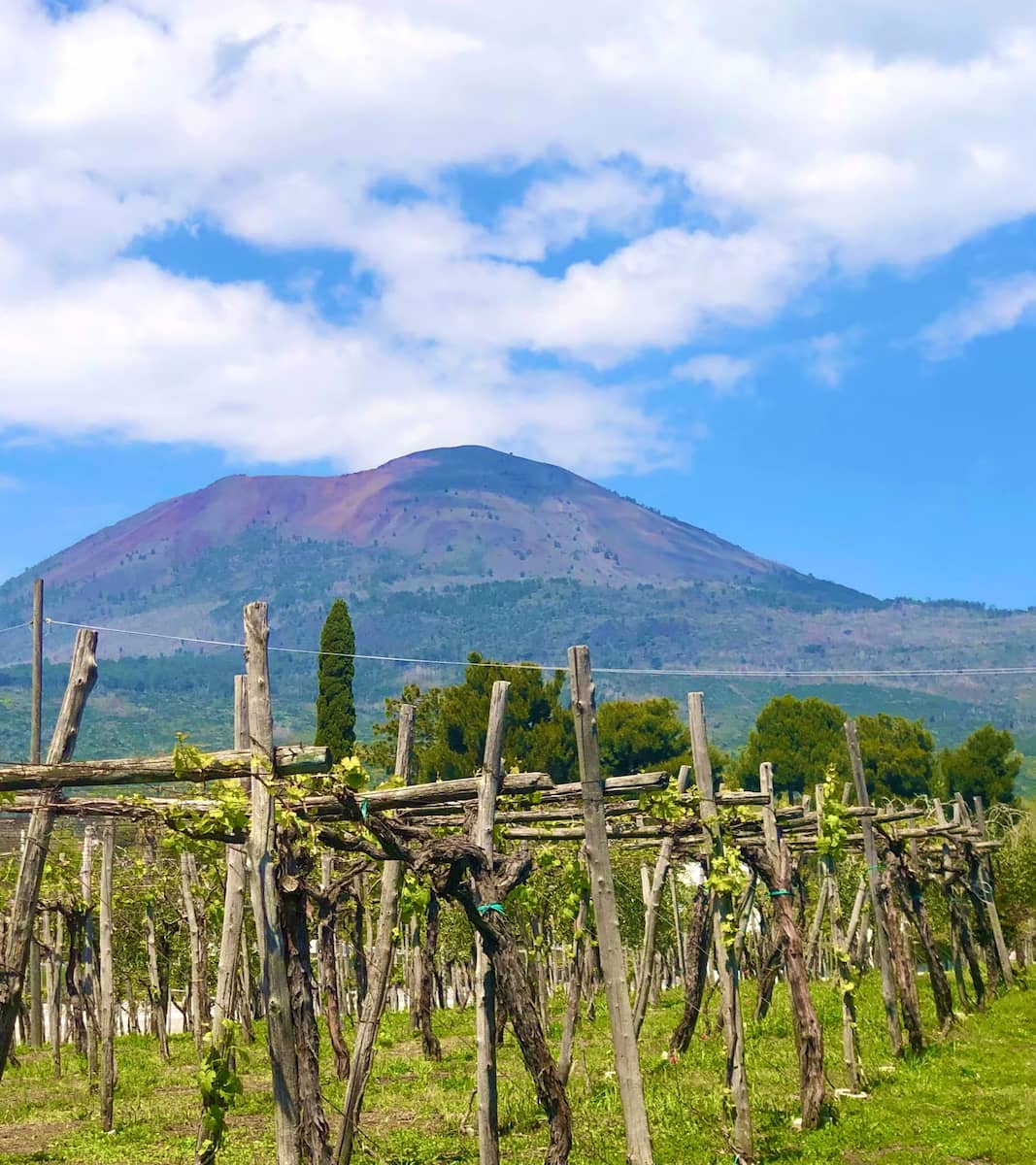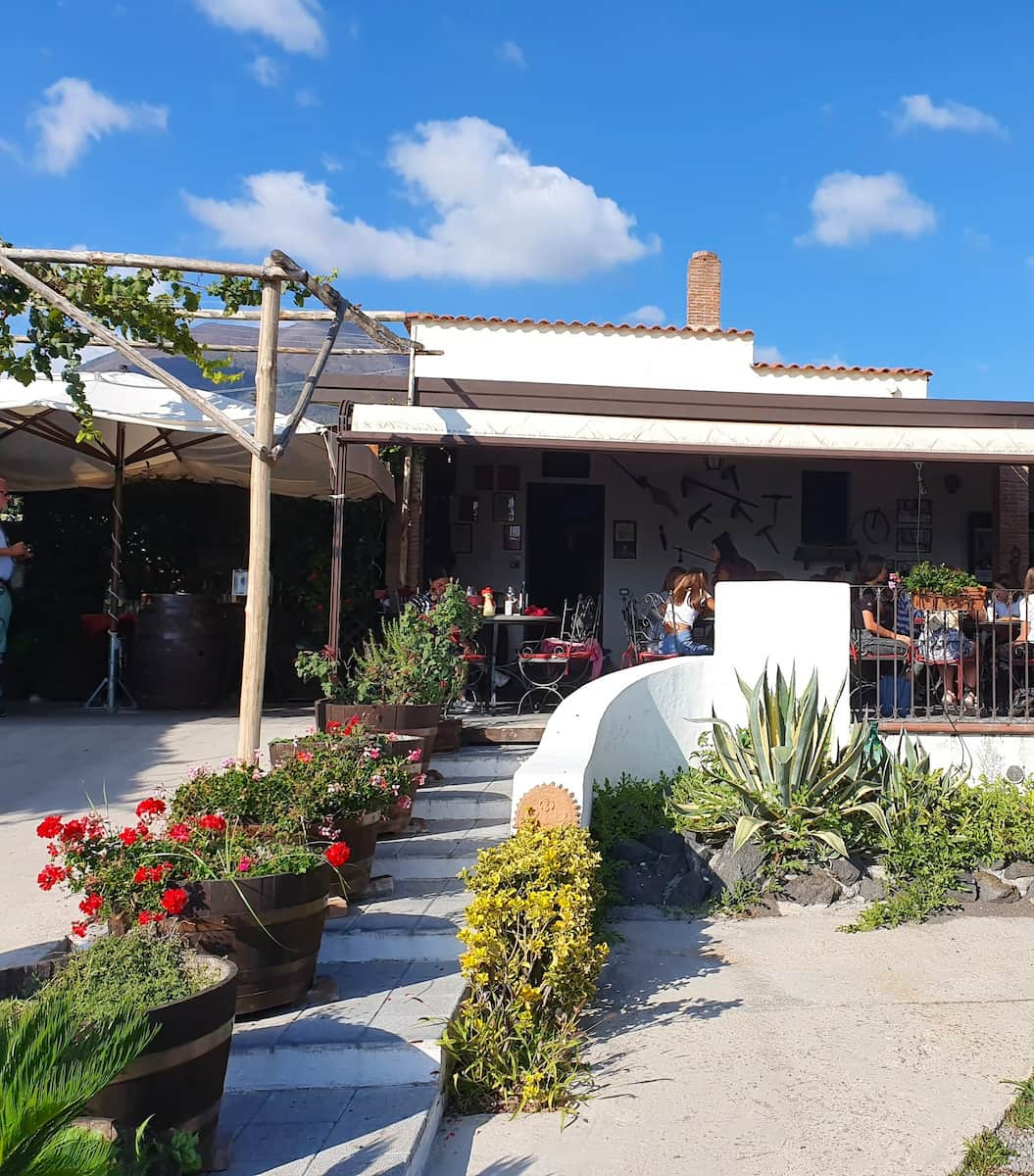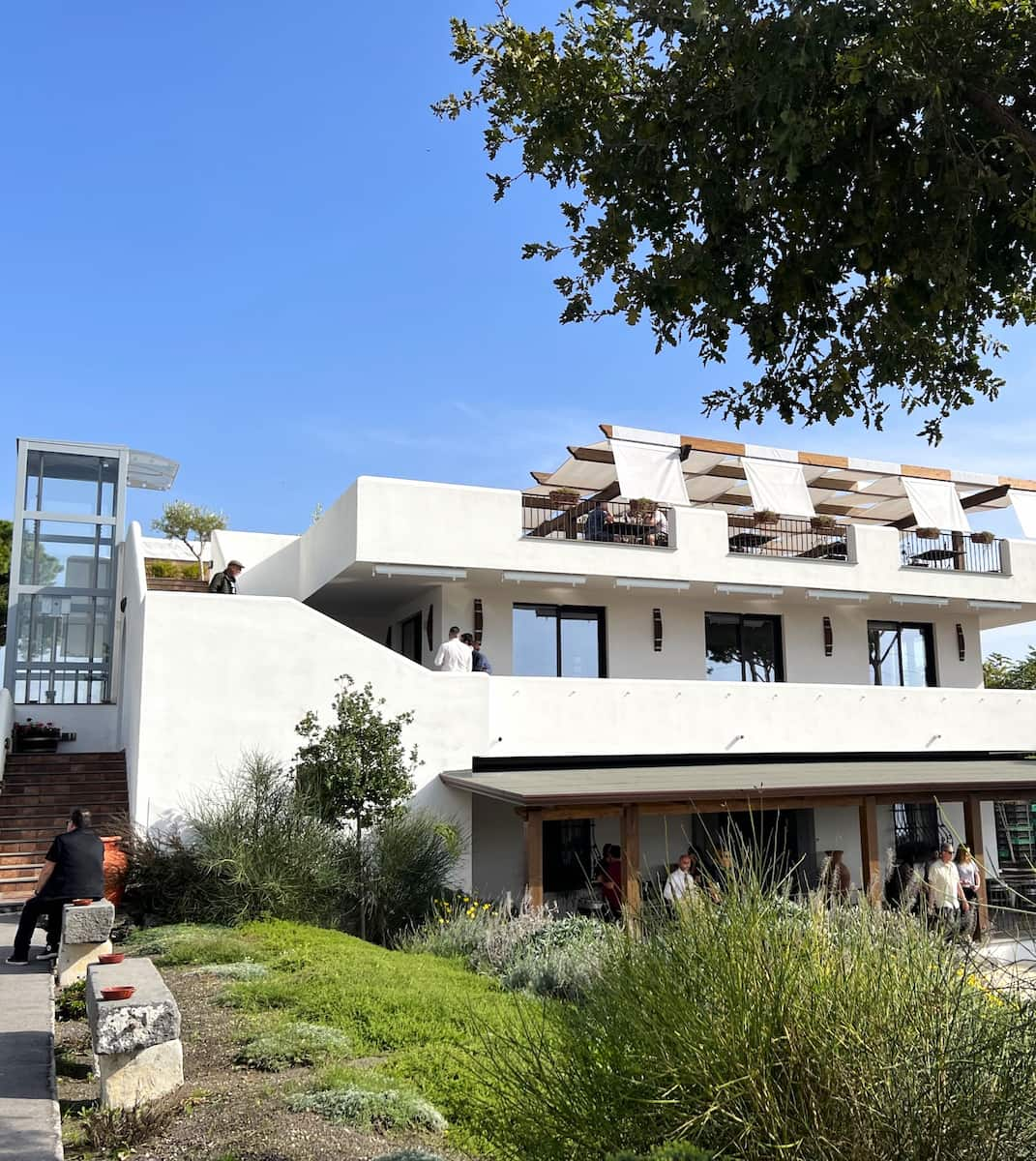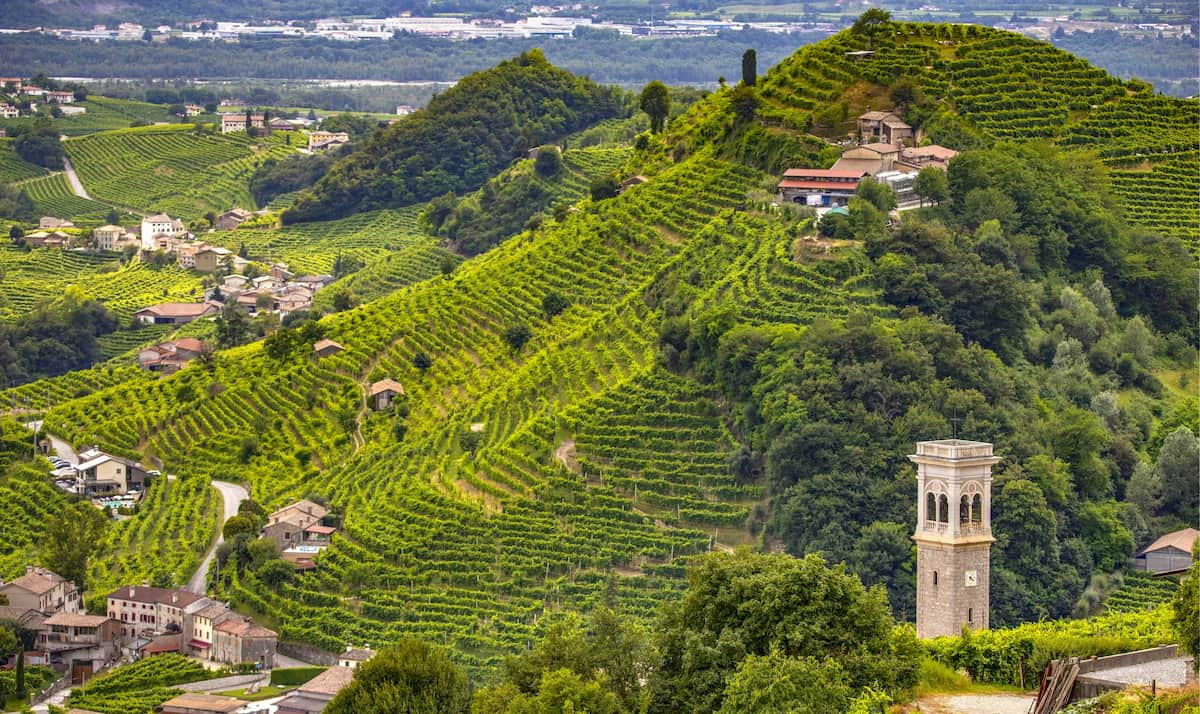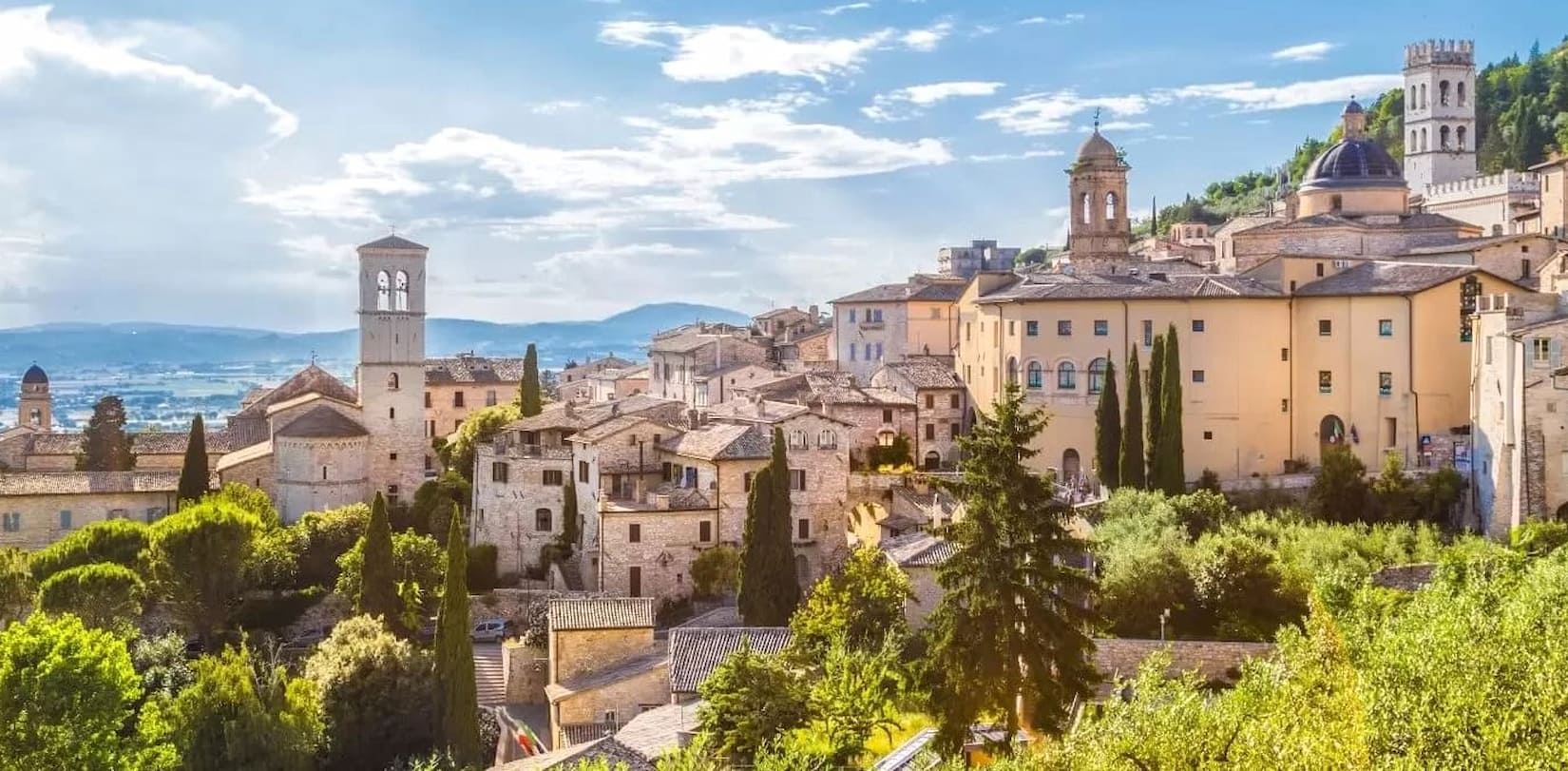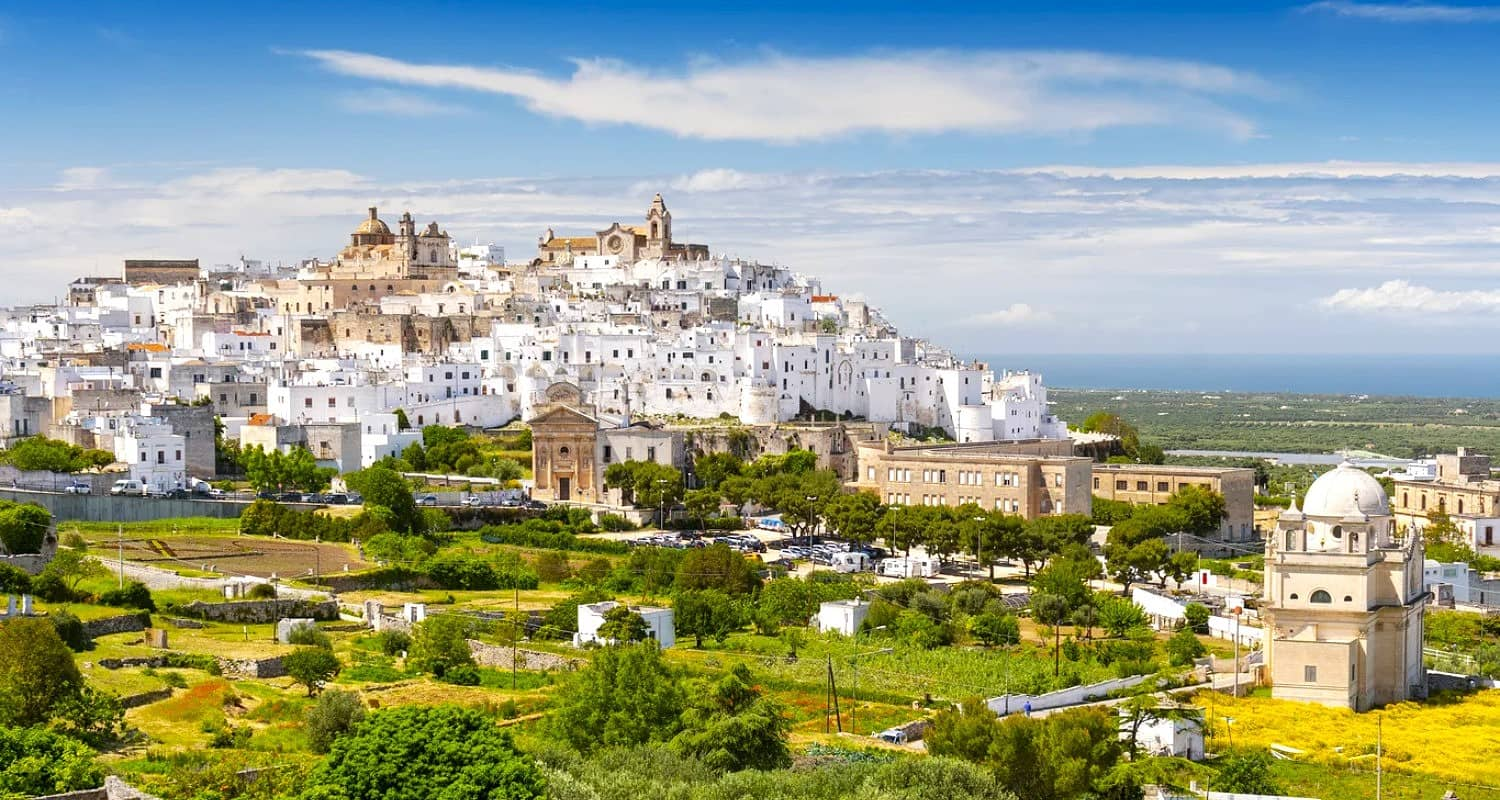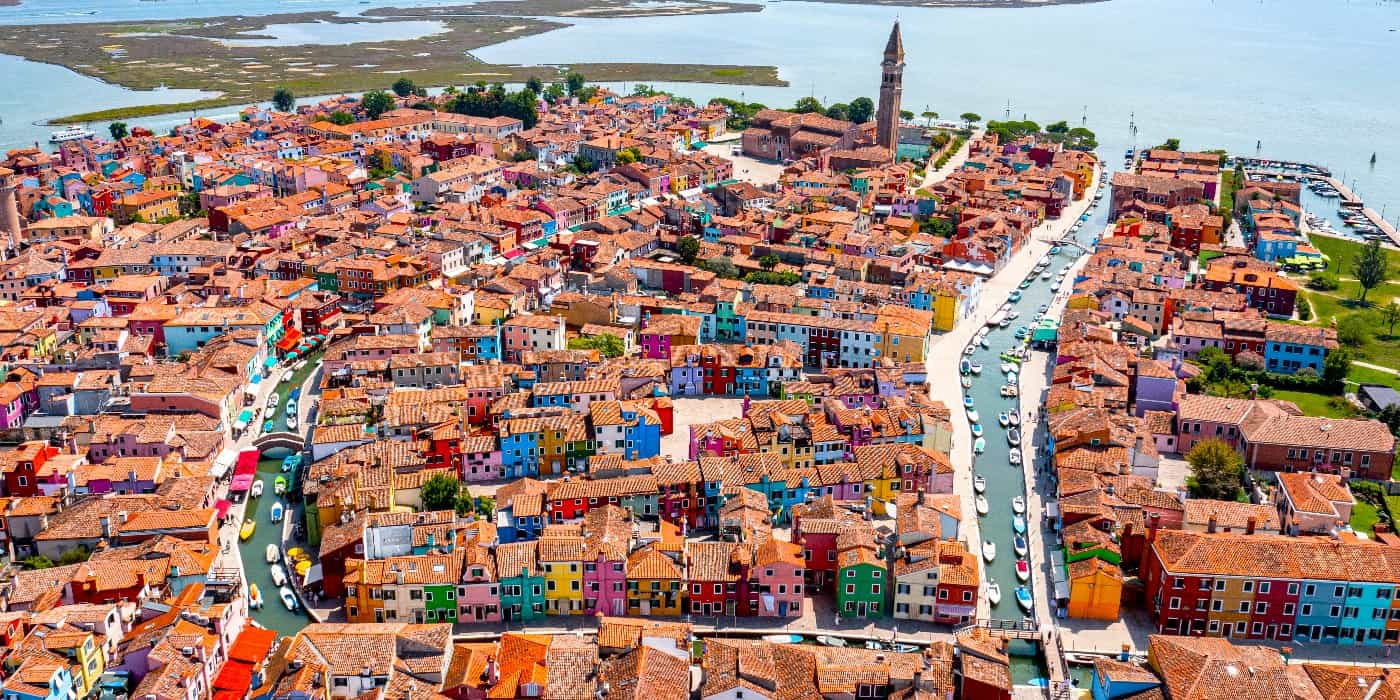Nestled between the more famous towns of Positano and Amalfi, Praiano offers a slice of authentic Italian coastal life without the crowds. This charming fishing village boasts stunning sea views, hidden beaches, and a relaxed atmosphere that captures the true essence of the Amalfi Coast.

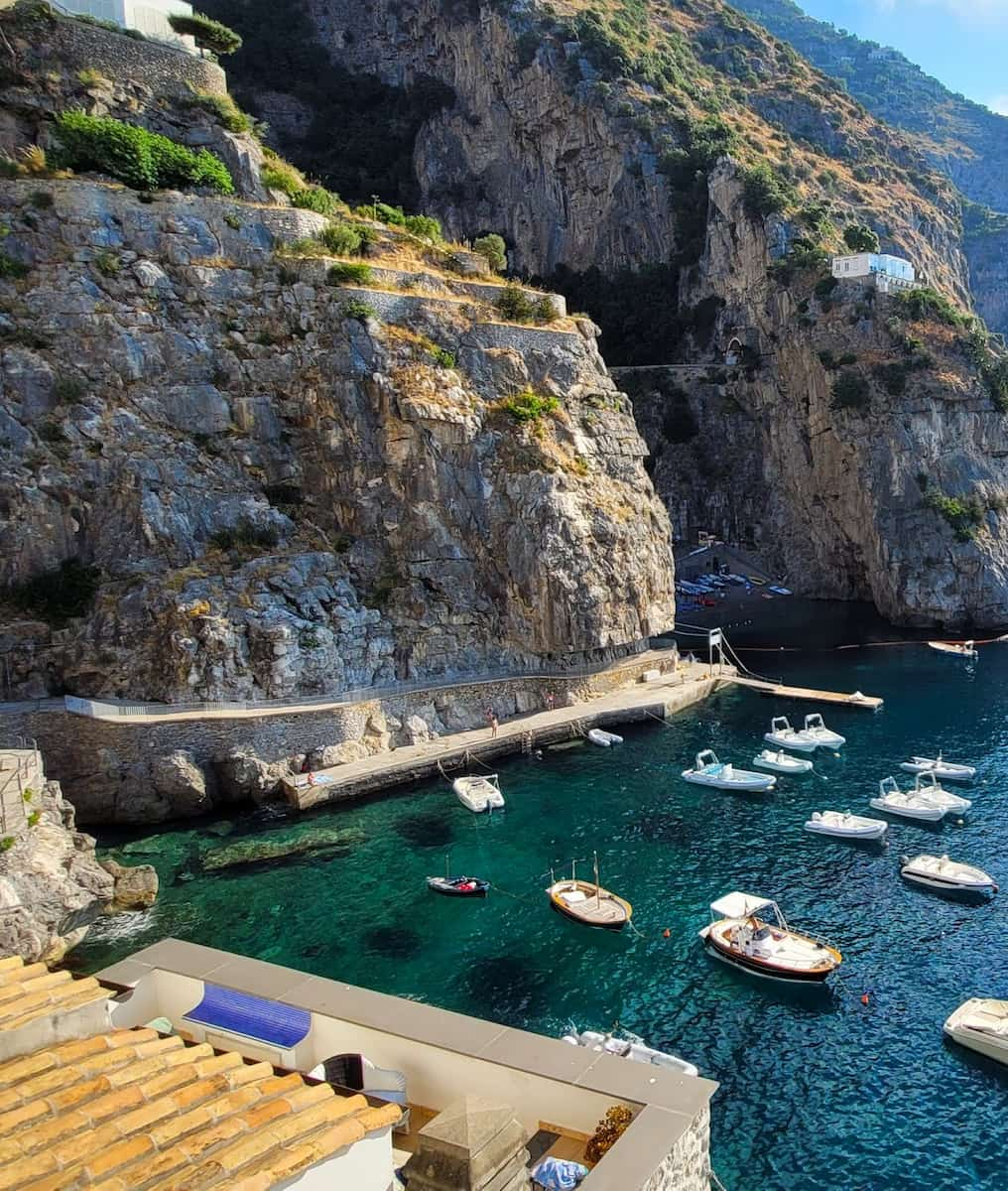
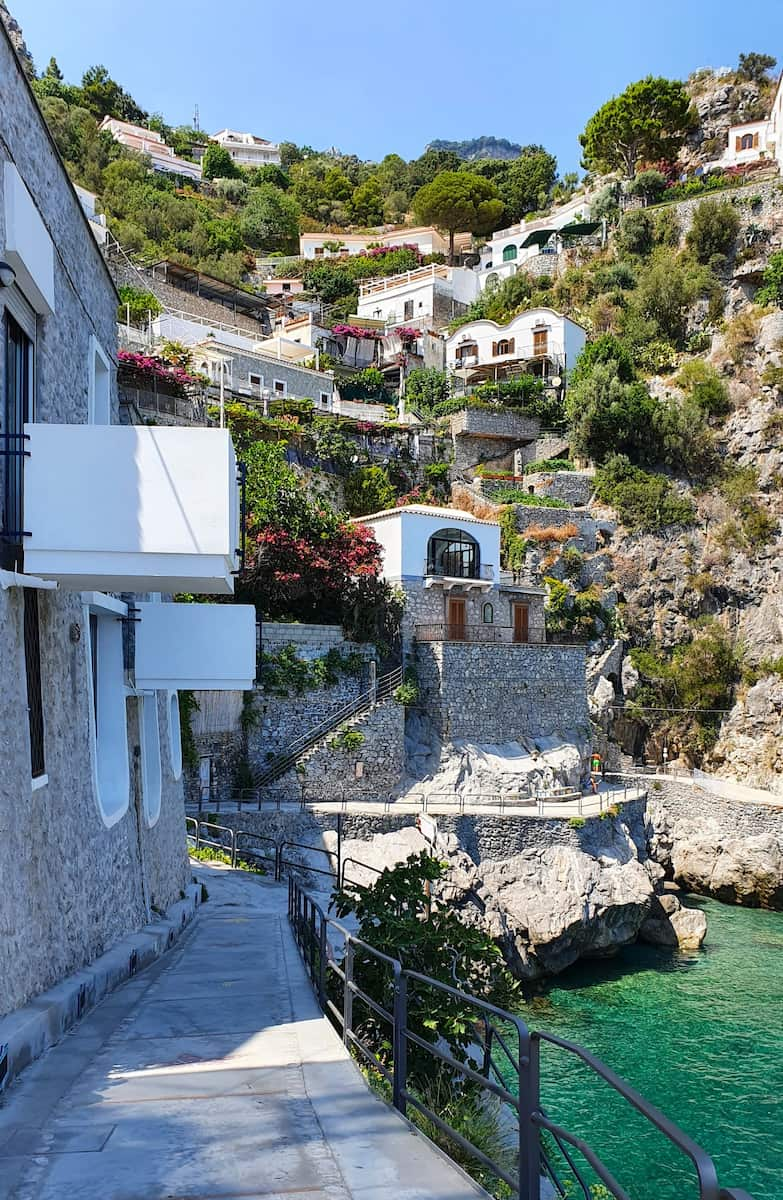
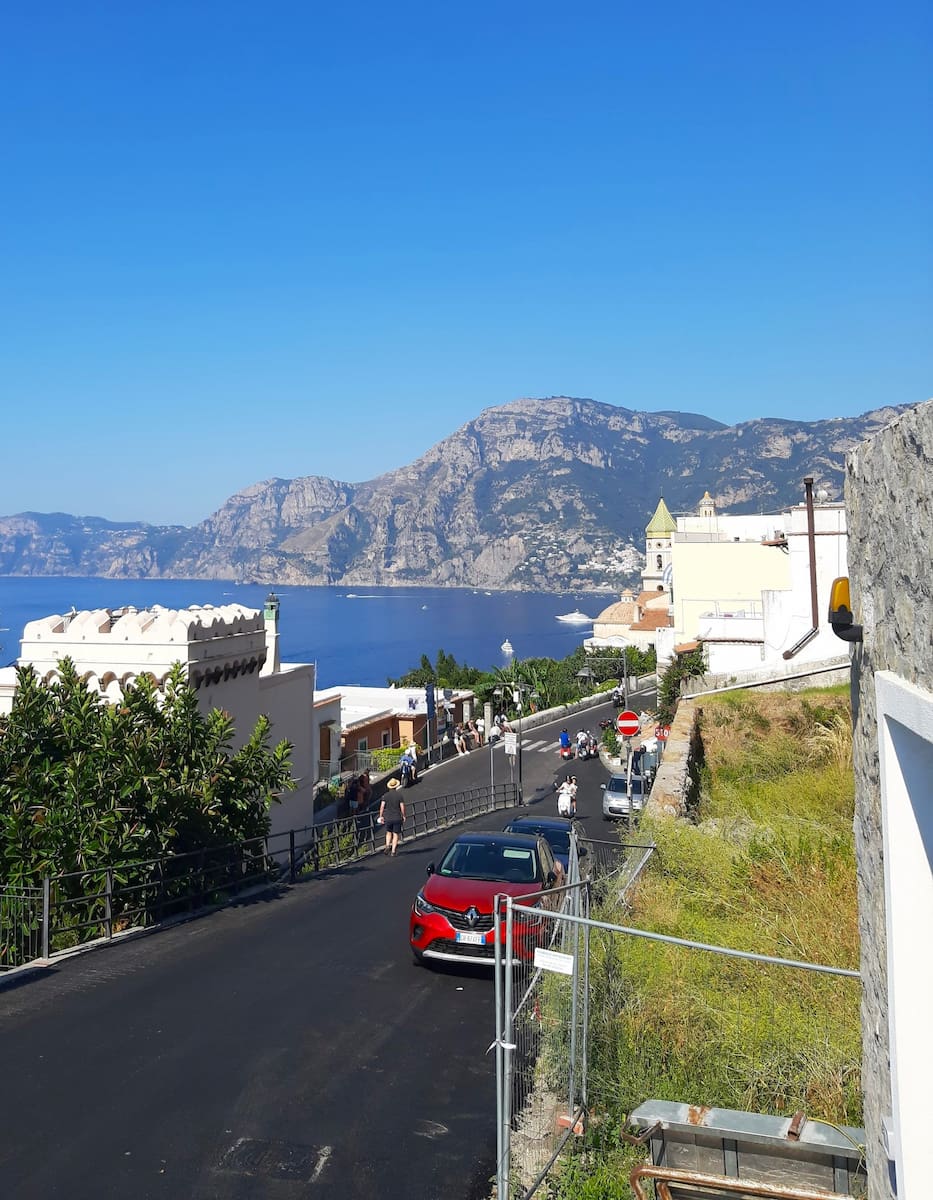
Whether you’re looking to lounge on pristine beaches, sample fresh seafood at local restaurants, or explore ancient churches perched on clifftops, Praiano has something for every traveler. I’ve spent countless hours discovering this gem and can’t wait to share my favorite spots that will make your visit truly unforgettable.
🏠 Where to Stay in Praiano
- 💎 Luxury Hotel: Hotel Piccolo Sant'Andrea, Praiano
- ✨ 5-Star: Casa Angelina, Praiano
- 🏨 4-Star: La Maurella, Praiano
- 🛏️ 3-Star: Hotel Il Pino, Praiano
- 💸 Cheap: Casa Rosetta, Praiano
- 🏢 Apartment: Casa Piccina, Praiano
- 👨👩👧👦 For Families: Hotel Le Fioriere, Praiano
- 🏩 For Couples: Hotel Tramonto d'Oro, Praiano
💁 Best Guided Tours
- Food Experience with a Local in Praiano from € 135 (⭐4.9/5)
- From Praiano or Positano: Full-Day Boat Tour to Amalfi Coast from € 120 (⭐4.8/5)
- Praiano: Cooking Class with Dinner Overlooking the Sea from € 95 (⭐4.9/5)
- Praiano: Cooking Class with Sea View from € 90 (⭐4.7/5)
Best Things To Do in Praiano
1. Africana Famous Club
Cave Nightlife. Tucked into a natural cave formation just ten meters above the Mediterranean Sea, Africana Famous Club is the beating heart of the Amalfi Coast’s nightlife scene. I discovered this iconic venue during my last trip to Praiano and was immediately captivated by its unique setting. The club features a glass dance floor where you can see the sea below, complete with iridescent lighting that illuminates the cave’s stalactites and stalagmites.
Evening Entertainment. The club typically opens at 10:00 PM with a lounge and shisha bar, but the real party kicks off around midnight. During my visit, I enjoyed a themed night with cabaret performances and international DJs that kept the energy high until the early morning hours. The contrast between ancient cave formations and modern music creates an atmosphere you won’t find anywhere else on the coast.
Access Options. Getting to Africana is part of the adventure. You can arrive by:
- Car or taxi (they have a small private parking area with lift access)
- Private boat or water taxi (they offer mooring buoys and have a private pier)
- The romantic “Path of Love” footpath from Marina di Praia beach
Practical Details. Entrance fees range from €15-30 (approximately $16-32), which typically includes one drink. All standard drinks cost €10 ($11), with more expensive options available for bottle service. Saturday nights feature a special dinner option on their terrace starting at 9:00 PM, but reservation is essential. The dress code welcomes stylish, casual, and creative outfits, but shirtless guests aren’t allowed.
My Tips. Arrive after midnight for the best atmosphere, as the club really fills up around 1:00 AM. Keep a close eye on your drinks – waitstaff sometimes clear even full glasses if left unattended. If you want a table to sit at during your night, make a reservation in advance, as standing is common for walk-in guests.
| Experience | Cost |
|---|---|
| Entrance Fee | €15-30 ($16-32) |
| Standard Drinks | €10 ($11) each |
| Saturday Dinner | €55 ($59) set menu |
2. Amalfi Coast Boat Tour
Sea Perspective. Exploring the Amalfi Coast by boat offers a completely different view of Praiano and its neighboring towns. I booked a small group tour with Lucibello (located at Marina di Praia) and spent an unforgettable day cruising along the dramatic coast. The azure waters contrasted beautifully with the towering limestone cliffs, creating perfect photo opportunities at every turn.
Hidden Coves. My captain, Antonio, knew exactly where to find secluded swimming spots that are inaccessible by land. We anchored at a pristine cove near the Grotte di Suppraiano where I enjoyed a refreshing swim in crystal-clear waters. The boat was equipped with snorkeling gear, allowing me to explore the vibrant marine life beneath the surface.
| Tour Type | Duration | Price Range |
|---|---|---|
| Small Group (max 12) | 4 hours | €80-120 ($85-128) |
| Private Tour | 6-8 hours | €350-500 ($375-535) |
| Sunset Cruise | 2 hours | €60-90 ($64-96) |
Local Insights. During the tour, our captain shared fascinating stories about the coastal villages and pointed out landmarks that aren’t mentioned in guidebooks. We passed by ancient watchtowers, hidden grottos, and even caught glimpses of luxury villas owned by celebrities. The historical context added depth to what could have otherwise been just a scenic boat ride.
⭐ Best Activities
- Amalfi Coast Boat Excursion from Positano, Praiano & Amalfi – Explore the stunning Amalfi Coast by boat, passing by Maiori, Minori, Amalfi, and visiting the famous Emerald Grotto on this scenic excursion.
3. Cooking Class in Praiano
Culinary Immersion. Learning to cook authentic Amalfi Coast cuisine was one of my most memorable experiences in Praiano. I joined a small class at Trattoria San Gennaro where Chef Marco welcomed us into his kitchen with limoncello made from local lemons. The intimate setting allowed for personal attention as we prepared a four-course meal featuring regional specialties.
Fresh Ingredients. Before cooking began, we visited the restaurant’s garden where they grow many of their ingredients. Chef Marco explained how the unique microclimate of Praiano affects the flavor of vegetables and herbs grown there. The tomatoes were sweeter and more intense than any I’d tasted before.
- Traditional dishes we learned to make:
- Scialatielli ai frutti di mare (handmade pasta with seafood)
- Parmigiana di melanzane (eggplant parmesan)
- Pesce all’acqua pazza (fish in “crazy water”)
- Delizia al limone (lemon dessert)
Hands-On Experience. Each participant had their own workstation equipped with professional tools. I particularly enjoyed learning to make pasta from scratch – kneading the dough, rolling it out, and cutting it into the traditional Amalfi Coast scialatielli shape. Chef Marco shared tips that have been passed down through generations of Italian cooks.
Value and Takeaways. The class cost €95 ($102) per person, lasting approximately 4 hours including the meal and wine pairing. Everyone received printed recipe cards to take home, and Chef Marco was happy to email additional recipes upon request. This experience gave me skills I still use in my kitchen today, making it one of the best values of my entire trip.
⭐ Best Activities
- Private Cooking Class at a Local's Home with Lunch or Dinner in Praiano – Learn authentic Italian cooking in a local’s home in Praiano, enjoying the meal you prepare with your host.
4. Kasai Restaurant
Fusion Flavors. Perched on a cliff with gorgeous views, Kasai Restaurant offers a refreshing departure from traditional Italian cuisine. I discovered this gem on my second night in Praiano and was immediately impressed by their innovative menu that blends Mediterranean ingredients with Japanese techniques. The minimalist décor creates a sophisticated atmosphere without distracting from the breathtaking vistas.
Signature Dishes. Chef Daniele’s tuna tataki with Amalfi lemon zest and local olive oil was a perfect example of the restaurant’s east-meets-west philosophy. Each dish features impeccable presentation that’s as beautiful as it is delicious. The seafood is sourced daily from local fishermen, ensuring maximum freshness.
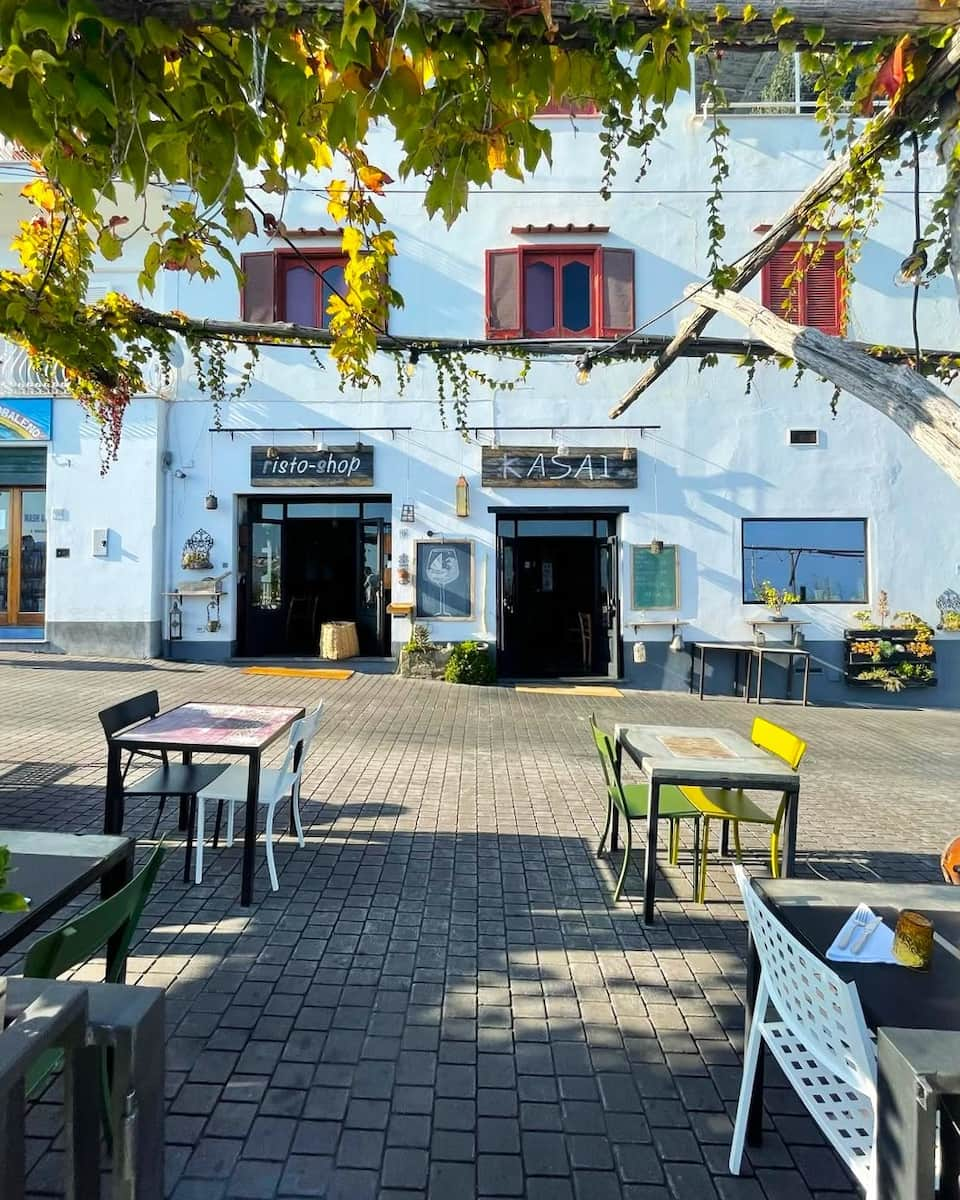
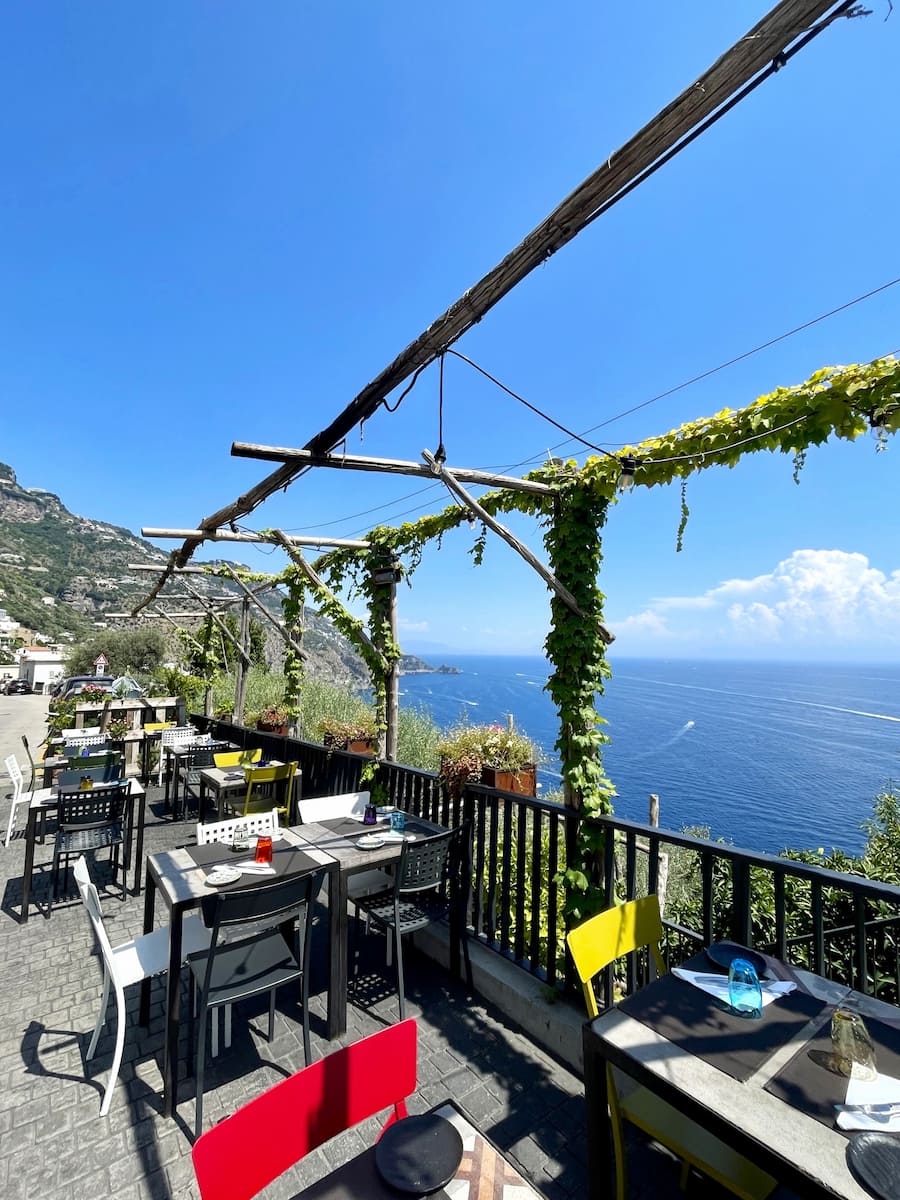
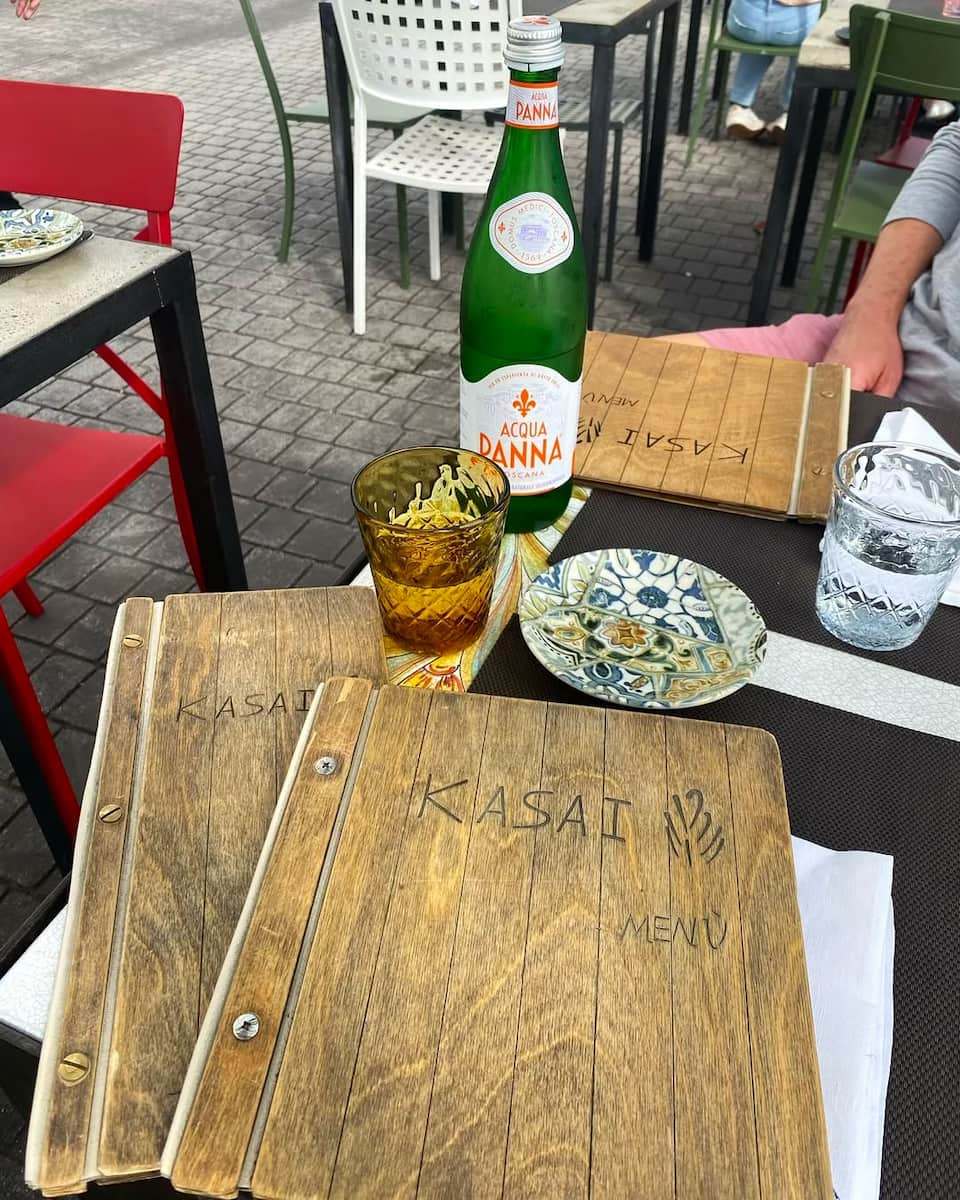
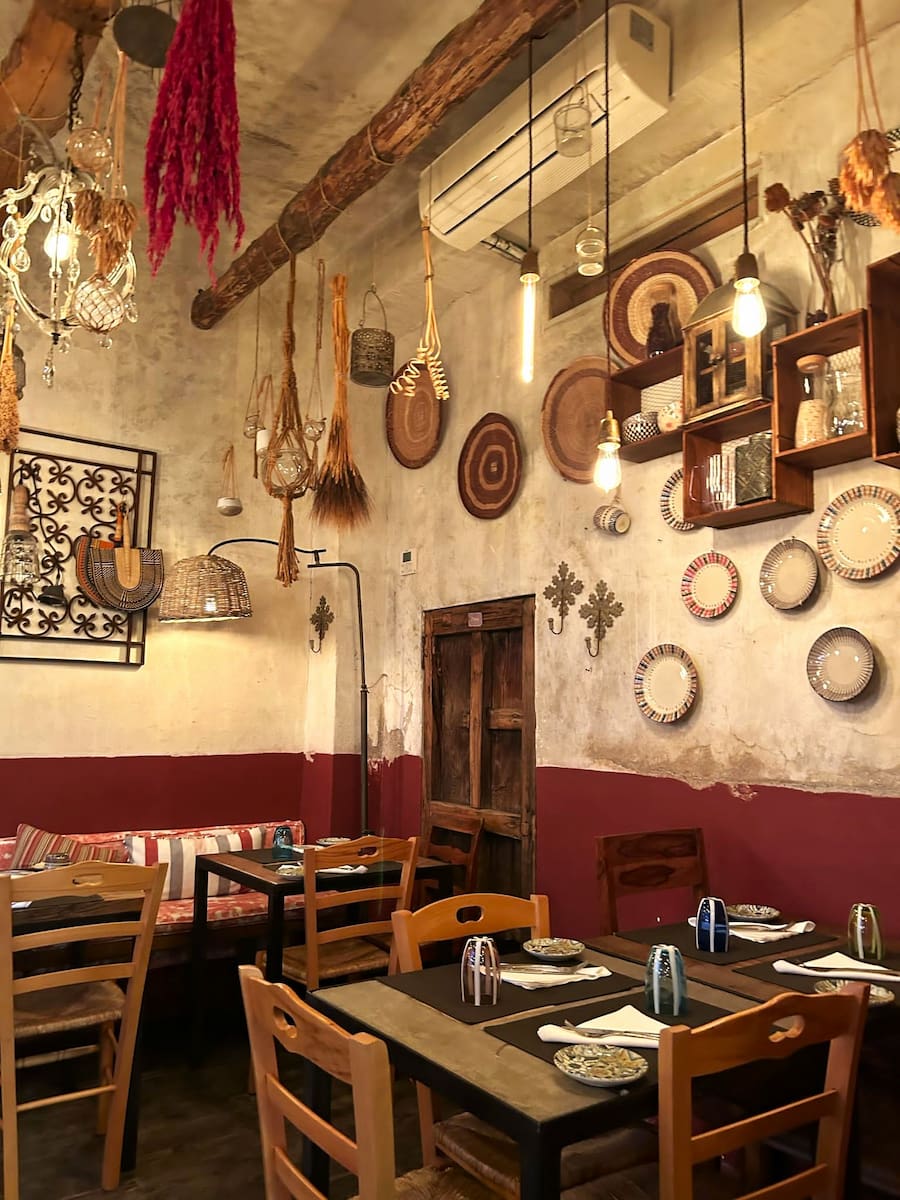
| Must-Try Dishes | Price |
|---|---|
| Tuna Tataki | €22 ($24) |
| Prawn Tempura with Amalfi Lemon | €24 ($26) |
| Sea Bass Carpaccio | €26 ($28) |
| Matcha Tiramisu | €12 ($13) |
Sunset Experience. Timing your dinner reservation for sunset transforms an excellent meal into an unforgettable experience. I arrived at 7:30 PM and watched as the sky transitioned through shades of pink and orange, casting a golden glow over the Mediterranean. The staff knows exactly when to serve each course to maximize your enjoyment of both the food and the view.
Reservation Tips. Kasai is small and extremely popular, so booking at least a week in advance is essential during high season. Request a table along the glass balustrade for the best views. The restaurant is located on Via Gennaro Capriglione, about a 10-minute walk from the main square. Smart casual dress is appropriate – I wore a summer dress with sandals and felt perfectly comfortable.
5. Il Pirata Restaurant
Seaside Setting. Il Pirata offers dining that’s literally on the water’s edge. During my lunch there, waves gently lapped against the rocks just meters from my table, creating a soothing soundtrack to accompany my meal. The restaurant’s terraced design means nearly every table has an unobstructed sea view.
Seafood Specialties. The menu focuses on ultra-fresh seafood prepared with respect for tradition but with creative touches. I ordered the catch of the day (branzino) that was grilled simply with olive oil, lemon, and herbs. The flavor was clean and pure – exactly what seafood should taste like when it’s been caught just hours before serving.
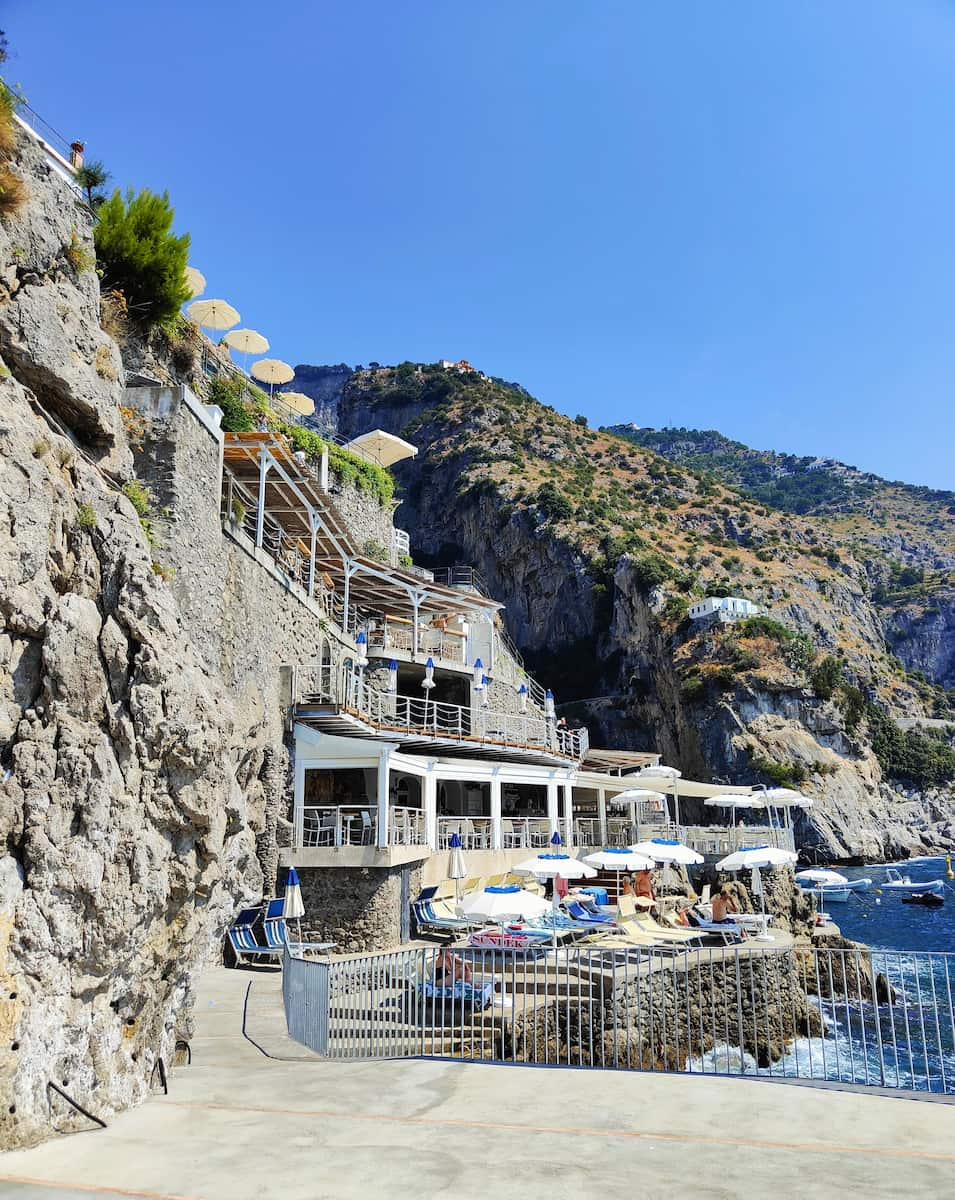
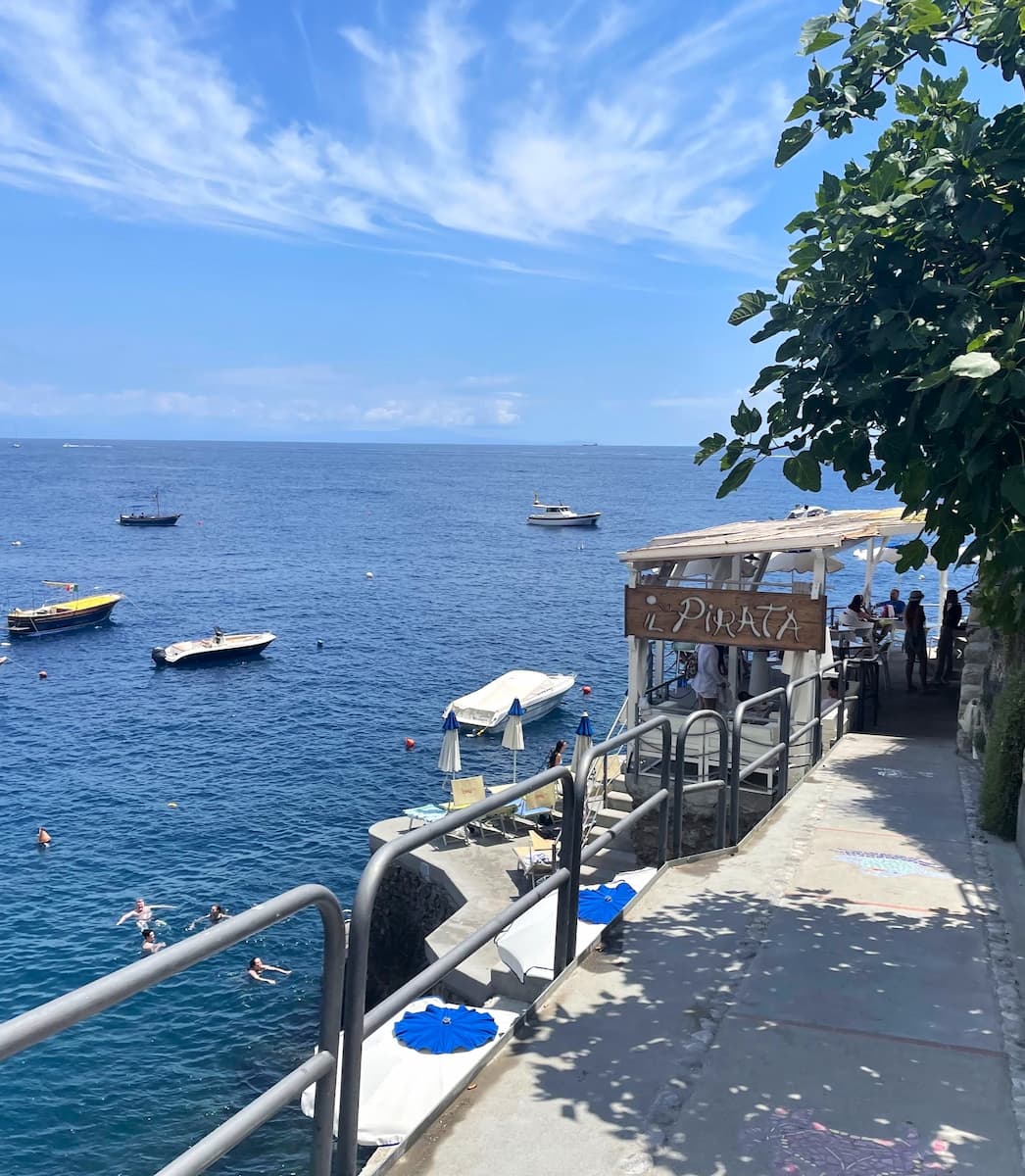
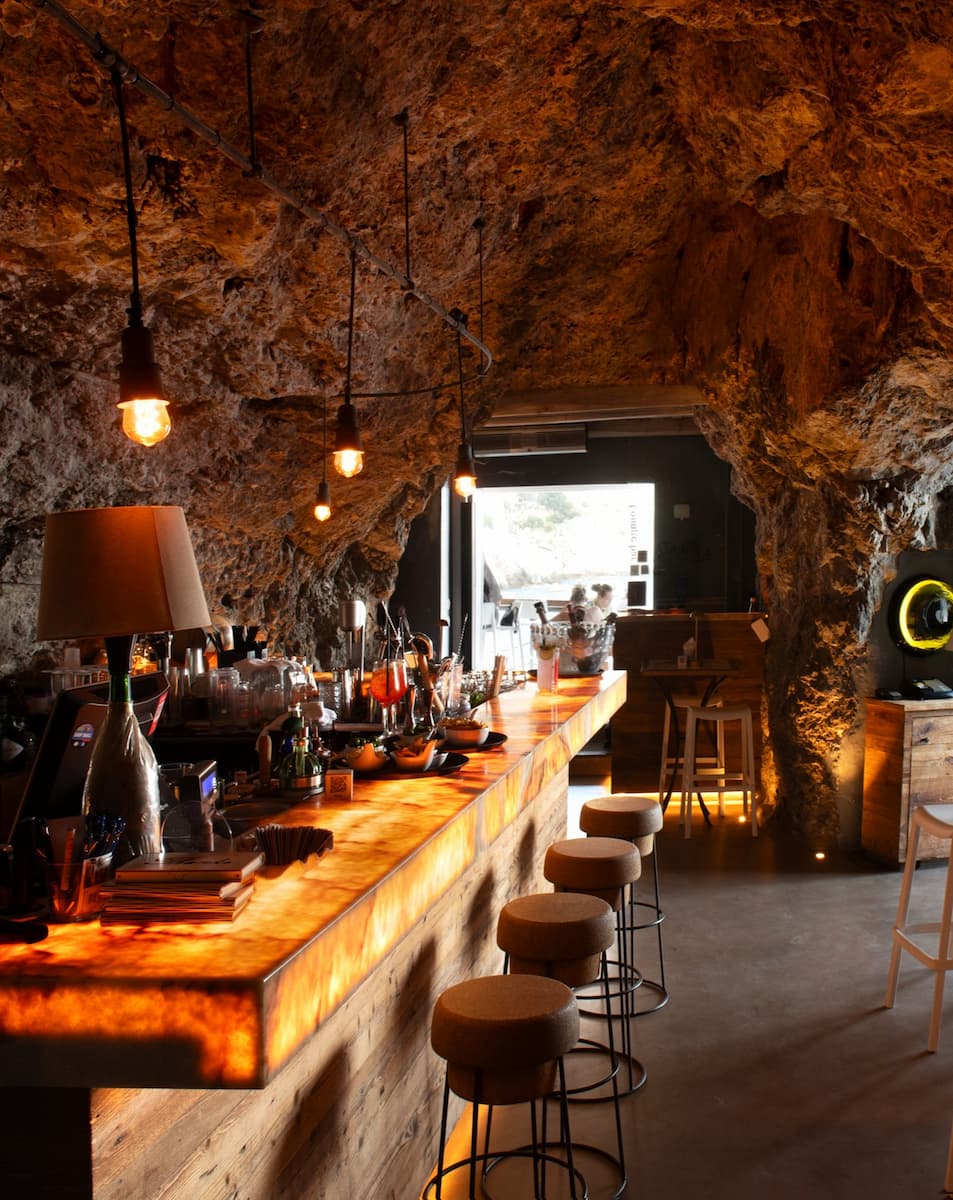
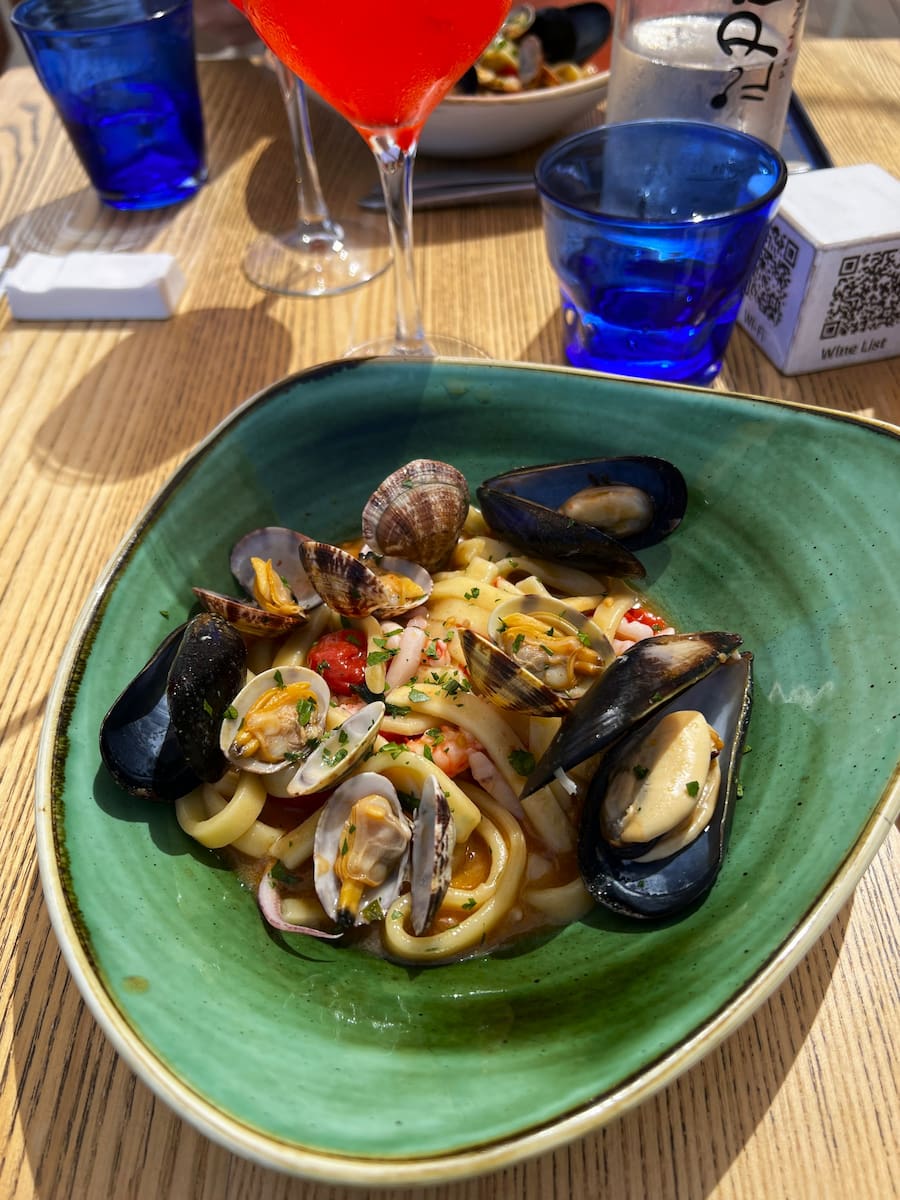
| Meal Period | Price Range | Reservation Needed |
|---|---|---|
| Lunch | €25-40 ($27-43) | Recommended |
| Dinner | €40-60 ($43-64) | Essential |
| Sunday Lunch | €50-70 ($53-75) | Essential (1 week ahead) |
Wine Selection. The sommelier guided me through their impressive collection of local wines, including several from small producers in Campania that aren’t exported. I tried a crisp Falanghina that paired perfectly with my seafood. They offer wine by the glass starting at €8 ($9), making it possible to sample different varieties.
Accessibility Note. Reaching Il Pirata requires descending several flights of stairs from the main road, which might be challenging for those with mobility issues. However, you can also arrive by boat or water taxi directly to their small dock. The effort to reach this hidden spot is well worth it – this was easily one of my favorite meals in all of Italy.
6. Bar de Sole
Sunset Cocktails. Strategically positioned to capture Praiano’s legendary sunsets, Bar de Sole quickly became my evening ritual during my stay. I’d arrive around 6:30 PM, order their signature Sole Spritz (a local twist on the Aperol Spritz with homemade citrus syrup), and watch as the sun dipped below the horizon, painting the sky in spectacular colors.
Aperitivo Culture. The Italian tradition of pre-dinner drinks accompanied by complimentary snacks is elevated at Bar de Sole. With each cocktail (priced between €10-15/$11-16), they serve a generous plate of local specialties including marinated anchovies, bruschetta with cherry tomatoes, and fried zucchini flowers when in season.
- Best Sunset Cocktails:
- Sole Spritz (Aperol, prosecco, homemade citrus syrup) – €12 ($13)
- Limoncello Martini (vodka, limoncello, fresh lemon) – €14 ($15)
- Praiano Negroni (gin, Campari, vermouth, orange bitters) – €15 ($16)
- Mediterranean Mule (vodka, ginger beer, basil, cucumber) – €13 ($14)
Live Music. On Thursday and Saturday evenings, local musicians perform acoustic sets featuring both Italian classics and international favorites. The music starts around 8:00 PM and creates a perfect ambiance without overwhelming conversation. I particularly enjoyed a local guitarist who played traditional Neapolitan songs with a modern twist.
Insider Tip. While most visitors focus on the sea-facing terrace, I discovered a small upper deck accessed via a narrow staircase at the back of the bar. This hidden spot offers even better views and more privacy. Ask the bartender, Marco, about it – he’s been working there for 15 years and has endless stories about Praiano’s history and characters.
7. Trattoria da Armandino
Family Tradition. This unassuming trattoria has been run by the same family for three generations, and that legacy is evident in every aspect of the dining experience. When I visited, Armandino himself (now in his 70s) was still greeting guests while his son Antonio managed the kitchen. The warm welcome made me feel like I was dining in someone’s home rather than a restaurant.
Simple Perfection. The menu is refreshingly straightforward, focusing on seafood caught that morning and vegetables from their garden. My spaghetti alle vongole (with clams) was a masterclass in simplicity – perfectly al dente pasta tossed with fresh clams, garlic, white wine, and a touch of chili. No unnecessary ingredients, just pure flavors executed flawlessly.
| Classic Dishes | Price |
|---|---|
| Spaghetti alle Vongole | €16 ($17) |
| Fritto Misto di Mare | €18 ($19) |
| Pezzogna all’Acqua Pazza | €24 ($26) |
| Tiramisu | €7 ($7.50) |
Local Atmosphere. Unlike many restaurants in the area that cater primarily to tourists, Trattoria da Armandino attracts a healthy mix of locals and visitors. During my dinner, I heard as much Italian as English being spoken, which I always consider a good sign. The restaurant doesn’t accept credit cards – a minor inconvenience that contributes to its authentic character.
Finding It. Located at the end of the path to Marina di Praia, the trattoria can be easy to miss. Look for the blue and white awning and tables set up along the small stone plaza. They don’t take reservations and operate on a first-come, first-served basis. I arrived at 7:00 PM (early by Italian standards) and was seated immediately, but by 8:30 PM there was a significant wait.
8. Hiking Path of the Gods
Breathtaking Vistas. The Sentiero degli Dei (Path of the Gods) is aptly named for its heavenly views of the Amalfi Coast. I started my hike early in the morning from Praiano, climbing the ancient stone steps that lead up to Colle Serra. The initial ascent is challenging with approximately 1,500 steps, but the amazing views that unfold with each meter of elevation make every drop of sweat worthwhile.
Trail Details. The complete path stretches from Bomerano (Agerola) to Nocelle (above Positano), covering about 7.8 kilometers. Starting from Praiano adds significant elevation gain but allows you to experience the entire route. The terrain varies from well-maintained paths to rocky sections that require careful footing.
| Trail Section | Distance | Difficulty | Estimated Time |
|---|---|---|---|
| Praiano to Colle Serra | 2 km | Difficult | 1-1.5 hours |
| Colle Serra to Bomerano | 3 km | Moderate | 1 hour |
| Bomerano to Nocelle | 7.8 km | Moderate | 2-3 hours |
| Nocelle to Positano | 1.5 km | Easy (downhill) | 40 minutes |
Natural Wonders. Along the path, I encountered Mediterranean scrubland, ancient olive groves, and wildflowers that vary with the seasons. The trail offers unique perspectives of Praiano, Positano, and the island of Capri in the distance. I spotted several species of birds soaring on the thermals, including peregrine falcons that nest in the cliffs.
Practical Preparation. Wear sturdy hiking shoes with good grip, as parts of the trail can be slippery. I carried 2 liters of water, snacks, sunscreen, and a hat – all essential as there are few places to refill or find shade. The SITA bus can return you to Praiano from Positano (€2/$2.15 per ticket), making this a one-way hike if preferred. Start no later than 8:00 AM to avoid the midday heat and crowds.
⭐ Best Activities
- Path of the Gods Amalfi Coast – Hike the famous Path of the Gods trail along the Amalfi Coast for breathtaking panoramic views of the Mediterranean.
9. Grotte di Suppraiano
Hidden Wonder. The Grotte di Suppraiano (Suppraiano Caves) remain one of Praiano’s less-discovered treasures. These sea caves can only be accessed by boat or kayak, creating a sense of adventure from the moment you set out to find them. I rented a kayak from Marina di Praia (€20/$21.50 for 2 hours) and paddled along the coastline, following the towering cliffs eastward.
Luminous Waters. What makes these caves truly special is the phenomenon known locally as “the blue reflection.” When sunlight enters the cave at certain angles, it creates an ethereal blue glow that illuminates the water from below. The effect is similar to the famous Blue Grotto of Capri but without the crowds or high prices.
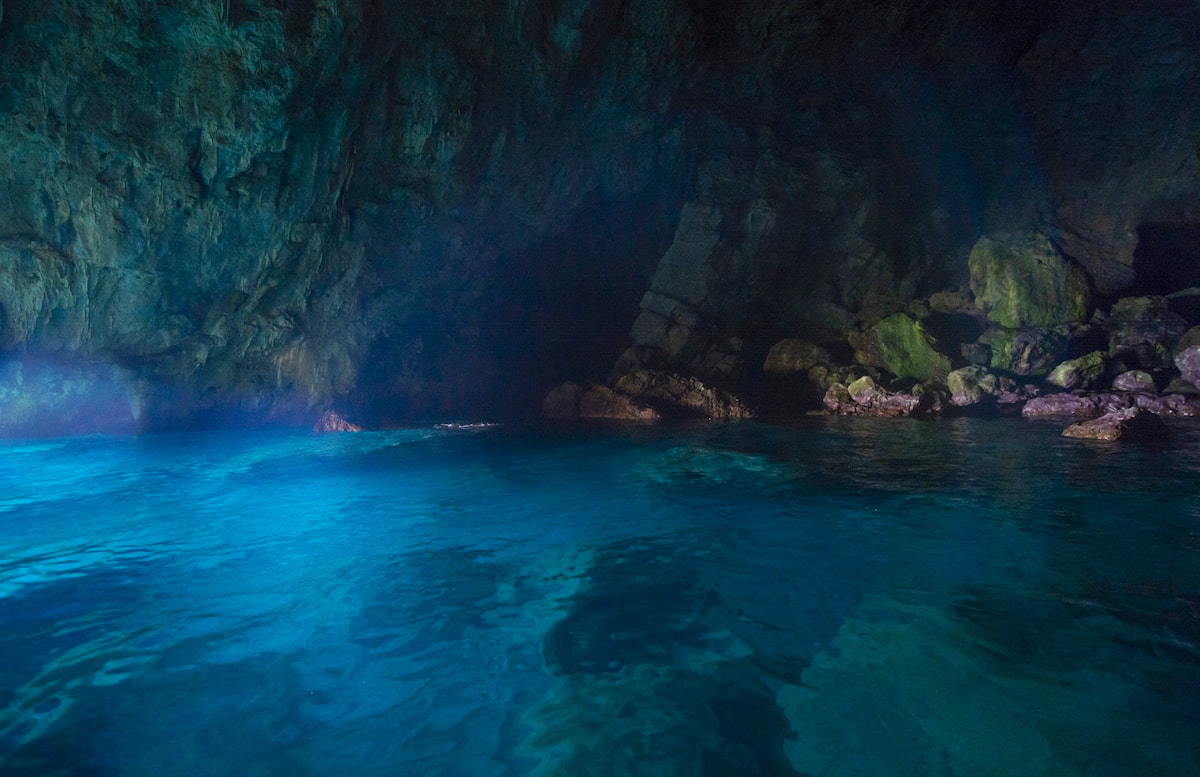
- Best Times to Visit the Caves:
- Late morning (10:00 AM – 12:00 PM) for optimal light conditions
- Weekdays to avoid weekend boat traffic
- May or September for calmer seas and fewer tourists
- Clear days when underwater visibility is highest
Safety Considerations. While kayaking to the caves is manageable for most people with basic paddling skills, be aware of changing weather conditions. I checked with locals at Marina di Praia about sea conditions before setting out. If you’re not comfortable kayaking independently, several tour operators offer guided excursions to the caves for €40-60 ($43-64) per person, including Praiano Boat Rental and Amalfi Coast Sea Kayak.
10. Convento di Santa Maria a Castro
Hilltop Sanctuary. Perched 360 meters above sea level, the Convento di Santa Maria a Castro offers the most spectacular panoramic views in all of Praiano. I made the pilgrimage up approximately 1,000 steps from the town center, following ancient pathways used by monks for centuries. The physical exertion is considerable, but the reward is a 360-degree vista encompassing the entire Amalfi Coast.
Historical Significance. Founded in the 14th century, this Franciscan monastery has a fascinating history that’s evident in its weathered stone walls and simple architecture. Although much of the original structure remains in ruins, the restored chapel still contains beautiful frescoes and religious artifacts. A local volunteer explained how the monastery once served as a lookout point to spot approaching Saracen pirates.
| Visitor Information | Details |
|---|---|
| Opening Hours | 9:00 AM – Sunset |
| Entrance Fee | Free (donations appreciated) |
| Guided Tours | By appointment only |
| Facilities | Limited (no restrooms or water) |
Spiritual Atmosphere. Despite being a tourist attraction, the convent retains a sense of tranquility and spiritual significance. I encountered several locals who had climbed up to pray in the small chapel. The caretaker lights candles at dusk, creating a magical atmosphere as darkness falls over the coast. Sitting in contemplation on the ancient stone benches, I felt connected to centuries of history.
Things to Do in Praiano with Kids
1. Pottery Class
Creative Expression. Praiano has a rich tradition of ceramic arts, and I discovered a family-friendly pottery workshop at Ceramiche Artistiche Solimene that welcomes children of all ages. My friend’s 8-year-old daughter was thrilled to get her hands dirty while learning to shape clay into traditional Amalfi Coast designs. The instructor, Giulia, adjusted her teaching style perfectly for younger participants.
Cultural Connection. The workshop begins with a brief introduction to the region’s ceramic history, showing examples of the distinctive patterns and colors that have made Amalfi Coast pottery famous worldwide. Kids learn about the significance of lemons, fish, and geometric patterns in local artistic traditions, giving context to their creative process.
| Workshop Options | Duration | Price per Person |
|---|---|---|
| Mini Session | 1 hour | €25 ($27) |
| Standard Class | 2 hours | €40 ($43) |
| Family Package (4 people) | 2 hours | €140 ($150) |
Take-Home Treasures. Unlike many tourist activities where children create something that’s forgotten by the next day, this workshop produces lasting souvenirs. After completing their pieces, kids can choose to have them glazed and fired in the kiln. The finished items are ready for pickup within 48 hours, or they can be shipped home for an additional fee (approximately €15-25/$16-27 depending on destination).
Practical Details. The workshop is located on Via Gennaro Capriglione, Praiano’s main street, making it easily accessible. Classes are offered Monday through Saturday at 10:00 AM and 3:00 PM, with advance reservation required. All materials are included in the price, and children as young as 4 can participate with parental assistance. Wear clothes that can get dirty – despite the provided aprons, clay has a way of finding its mark!
2. Gelato Tasting
Sweet Education. At Gelateria Il Gabbiano, gelato isn’t just a treat – it’s a learning experience. I watched as children’s eyes widened during the mini “gelato school” session where they learned how real Italian gelato differs from commercial ice cream. The owner, Paolo, explained the importance of fresh ingredients and traditional methods in creating authentic flavors.
Hands-On Fun. The highlight for kids is the create-your-own-flavor station where they can mix custom combinations of ingredients. My friend’s children spent nearly 20 minutes carefully selecting mix-ins and toppings for their personalized creations, developing decision-making skills while having fun.
- Kid-Favorite Flavors:
- Nutella Swirl (chocolate hazelnut with ribbons of Nutella)
- Bubble Gum (bright blue with real bubble gum pieces)
- Cookie Monster (blue vanilla with chocolate cookie chunks)
- Banana Split (banana gelato with chocolate and strawberry swirls)
Dietary Accommodations. What impressed me most was the range of options for children with dietary restrictions. The gelateria offers dairy-free sorbets, nut-free flavors, and even sugar-free options, all clearly labeled. Paolo takes allergies seriously and is happy to discuss ingredients with concerned parents.
3. Picnic at Local Parks
Natural Playgrounds. Praiano has several small parks and green spaces perfect for family picnics and outdoor play. My favorite is Parco La Moressa, a terraced garden with olive trees providing natural shade and stunning views. The park has a small playground with swings and climbing structures suitable for children aged 3-12, plus plenty of open space for running around.
Picnic Provisions. Assembling a proper Italian picnic is half the fun. I took my friends’ children to the Alimentari Tutto per Tutti on Via Umberto I, where we selected fresh bread, local cheeses, cured meats, and seasonal fruits. The shopkeeper even suggested child-friendly options and packed everything in a way that was easy to carry uphill to the park.
| Picnic Essentials | Approximate Cost |
|---|---|
| Fresh Bread | €2-3 ($2.15-3.25) |
| Local Cheese Selection | €5-8 ($5.40-8.60) |
| Cured Meats | €4-7 ($4.30-7.50) |
| Fresh Fruit | €3-5 ($3.25-5.40) |
| Juice Boxes | €1 each ($1.10) |
Wildlife Spotting. The parks in Praiano offer surprising opportunities for children to observe local wildlife. At Parco La Moressa, we spotted several species of butterflies, lizards sunning themselves on rocks, and even a family of small birds nesting in an olive tree. These natural encounters sparked curiosity and questions about the local ecosystem.
Timing Tips. The best time for a park picnic is mid-morning (10:00 AM – 12:00 PM) or late afternoon (after 4:00 PM) to avoid the strongest midday sun. Most parks have limited or no facilities, so I recommend using restrooms before arriving and bringing hand sanitizer. Pack a small garbage bag to carry out any trash, as bins may be limited or non-existent in some areas.
Free Things to Do in Praiano
1. Marina di Praia Beach
Hidden Cove. Marina di Praia is a small pebble beach nestled between towering cliffs, creating a dramatic setting that feels worlds away from the busier beaches along the Amalfi Coast. I spent a peaceful morning here watching local fishermen mend their nets and prepare their boats for the day’s catch. The beach is free to access, though rental chairs are available if desired (€10-15/$11-16 per day).
Crystal Waters. The water quality at Marina di Praia is exceptional, with remarkable clarity that makes it perfect for snorkeling. I brought my own mask and snorkel and explored the rocky areas at either end of the cove, discovering colorful fish, sea urchins, and even small octopuses hiding among the rocks. The enclosed nature of the cove also means the water is typically calmer than at more exposed beaches.
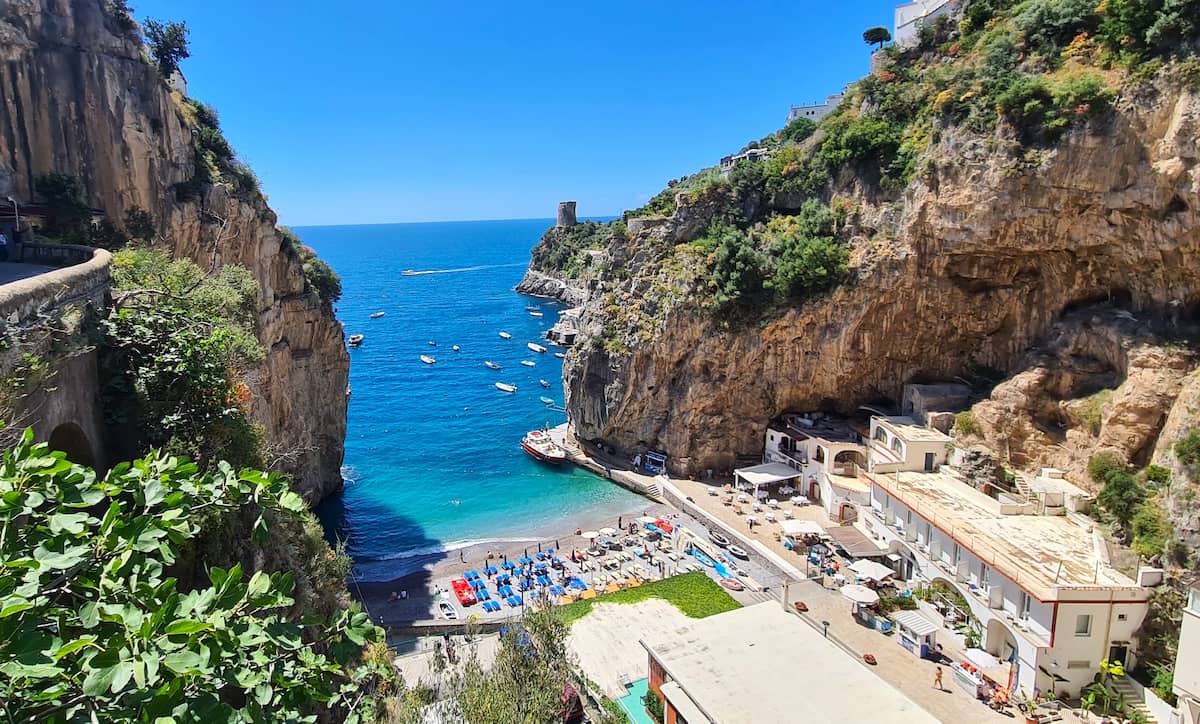
- Best Features of Marina di Praia:
- Natural shade from surrounding cliffs in morning and late afternoon
- Excellent swimming conditions with gradual depth increase
- Protected from strong currents due to cove formation
- Historic watchtower (Torre a Mare) providing scenic backdrop
Local Life. Unlike many beaches that cater exclusively to tourists, Marina di Praia maintains its authentic character as a working fishing beach. Early risers can watch the small fishing boats return with their morning catch around 7:00 AM, often selling a portion directly to local restaurants. This connection to traditional coastal life adds a cultural dimension to what might otherwise be just a swimming spot.
Access Information. The beach is reached via a steep pathway that descends from the main coastal road (SS163). Look for signs to “Marina di Praia” or “Spiaggia di Praia.” The walk takes about 10 minutes and includes several flights of stairs. While there are no facilities directly on the beach, the nearby restaurants offer restrooms to patrons, and there’s a small changing cabin at the eastern end of the beach.
2. Spiaggia della Gavitella
Morning Sunshine. Unlike most beaches along the Amalfi Coast that lose sun in the afternoon due to the surrounding mountains, Spiaggia della Gavitella enjoys sunlight until sunset. This unique western exposure makes it the perfect spot for late afternoon swimming when other beaches are already in shadow. I arrived around 4:00 PM and enjoyed three more hours of perfect sunshine.
Panoramic Setting. What makes Gavitella truly special is its unobstructed view of Positano and the Li Galli islands. The perspective from this beach offers one of the most photographed vistas of the entire coastline. I found myself taking dozens of photos as the changing light transformed the scene throughout the afternoon.
| Beach Facilities | Details |
|---|---|
| Public Access | Free |
| Chair Rental | €15 ($16) optional |
| Restrooms | At nearby beach club only |
| Showers | One public shower (cold water) |
| Food Options | Beach club restaurant or BYO |
Physical Challenge. Reaching Gavitella requires descending approximately 400 steps from Praiano’s center, followed by an uphill climb on the return journey. This natural barrier helps keep crowds manageable even in peak season. I recommend bringing plenty of water for both the beach stay and the return climb. The stairs are well-maintained but lack shade, so avoid the midday heat for your descent or ascent.
3. Torre di Grado
Defensive History. Standing sentinel above Praiano, Torre di Grado is one of the many watchtowers built in the 16th century to protect coastal communities from Saracen pirate raids. I followed the well-marked trail from Piazza San Gennaro, climbing gradually through residential areas and lemon groves until reaching this cylindrical stone structure. The 30-minute hike offers increasingly spectacular views with each step.
Architectural Details. Though you cannot enter the tower itself (it remains privately owned), the exterior is well-preserved and provides insight into medieval defensive architecture. I was fascinated by the machicolations – openings in the overhanging parapet through which defenders could drop stones or hot oil on attackers. The tower’s strategic position makes it clear why this location was chosen for surveillance.
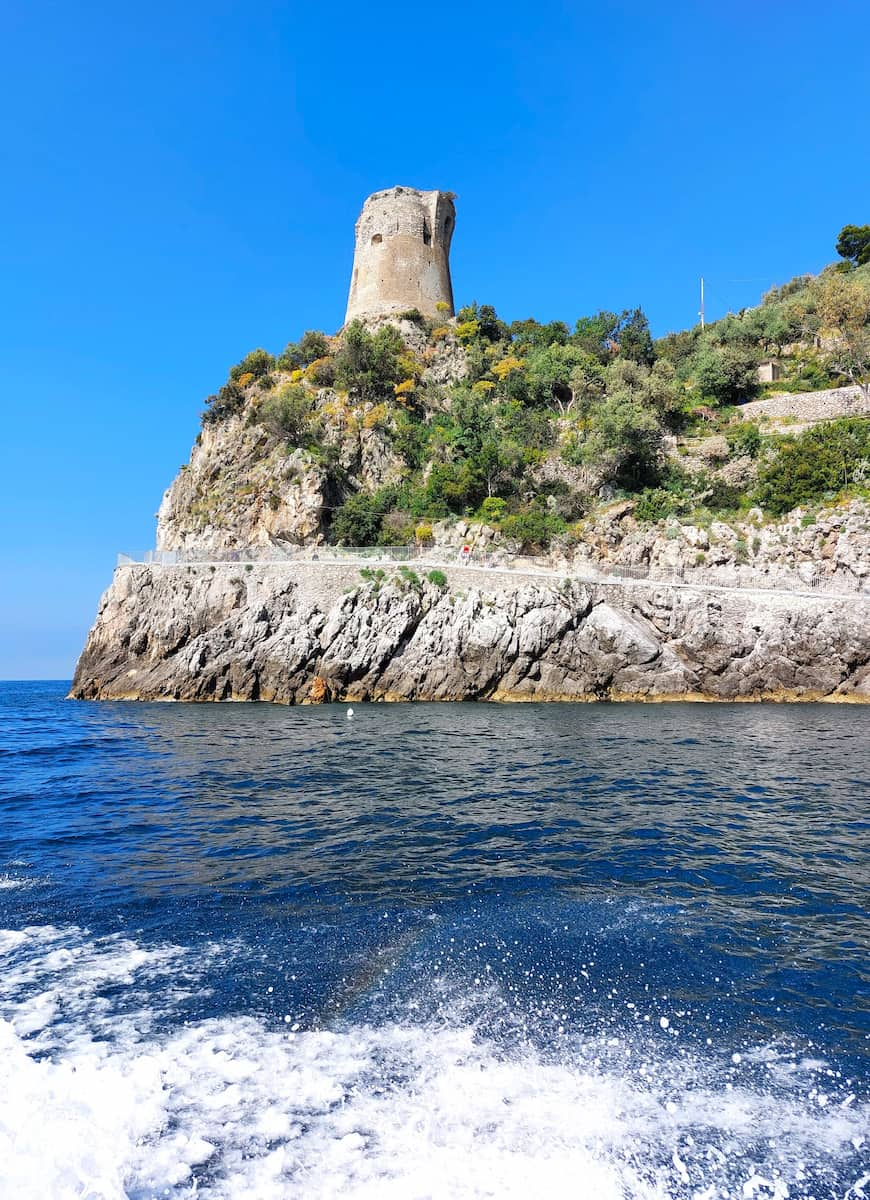
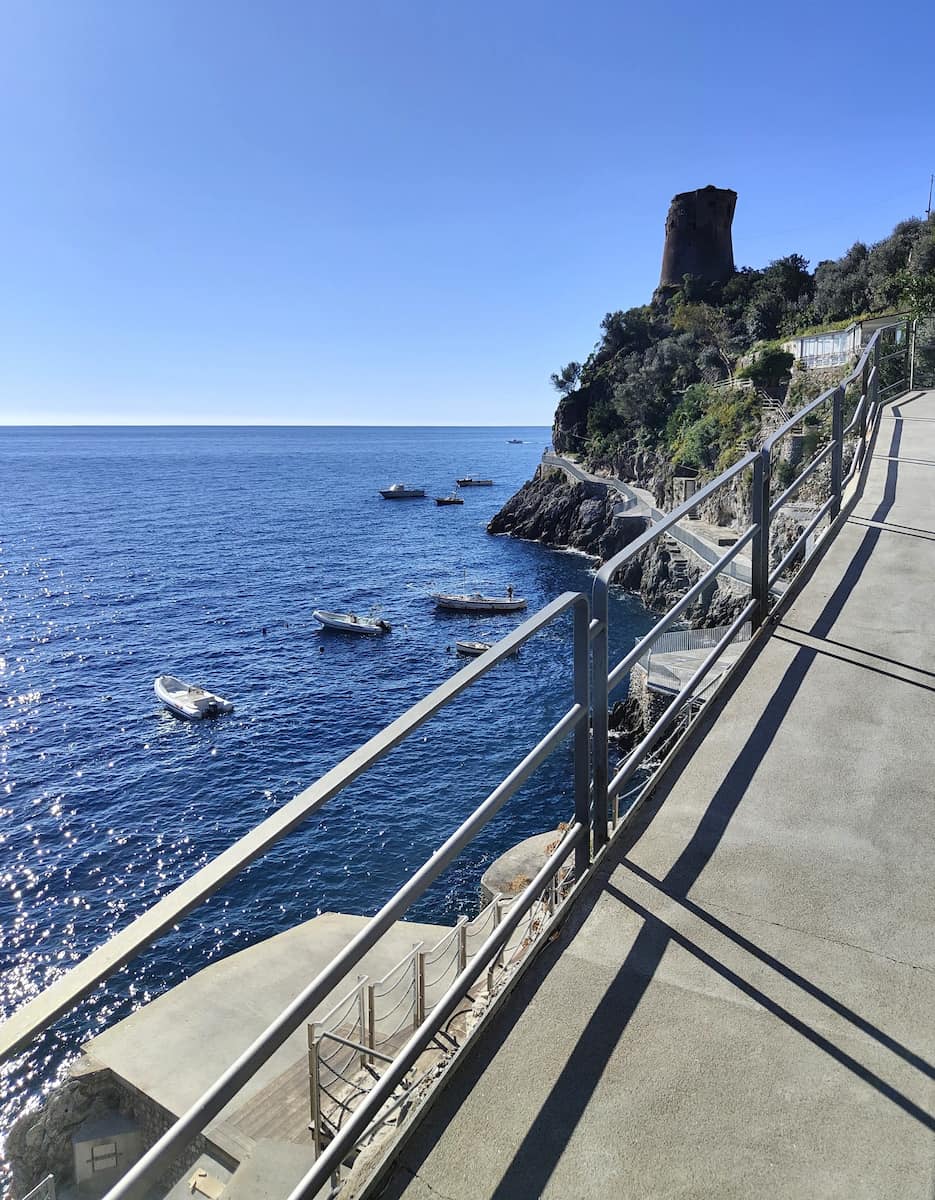
- What You’ll See from Torre di Grado:
- Panoramic views of Praiano and neighboring villages
- The entire sweep of the Gulf of Salerno
- Li Galli Islands on clear days
- Ancient terraced farmland still in use today
Photography Opportunities. The tower creates a perfect foreground element for landscape photography, especially when framed against the blue Mediterranean. I found the lighting particularly beautiful in late afternoon when the golden hour illuminated the stone structure and created dramatic shadows. The surrounding wildflowers add splashes of color to photos in spring and early summer.
Visitor Information. The path to Torre di Grado is public and accessible year-round. No entrance fee or opening hours apply since viewing is from the exterior only. The trail is moderately challenging with some uneven terrain and would be difficult for those with mobility issues. Bring water and wear appropriate footwear – flip-flops aren’t suitable for this walk. The area around the tower has several flat rocks perfect for sitting and enjoying a packed lunch or snack.
4. Chiesa di San Gennaro
Architectural Gem. The Church of San Gennaro stands as Praiano’s most important religious building, distinguished by its majolica-tiled dome that gleams in the sunlight. I was immediately struck by the church’s prominent position in the town center and its distinctive yellow and green dome that has become a symbol of Praiano. The building dates back to the 16th century but has been renovated several times.
Artistic Treasures. Stepping inside, I found the interior surprisingly spacious and filled with notable artwork. The most impressive piece is the silver bust of Saint Januarius (San Gennaro), the patron saint of Praiano. The church also houses several paintings by local artists depicting religious scenes and the lives of saints. The marble altar is particularly beautiful, featuring intricate inlay work typical of the region.
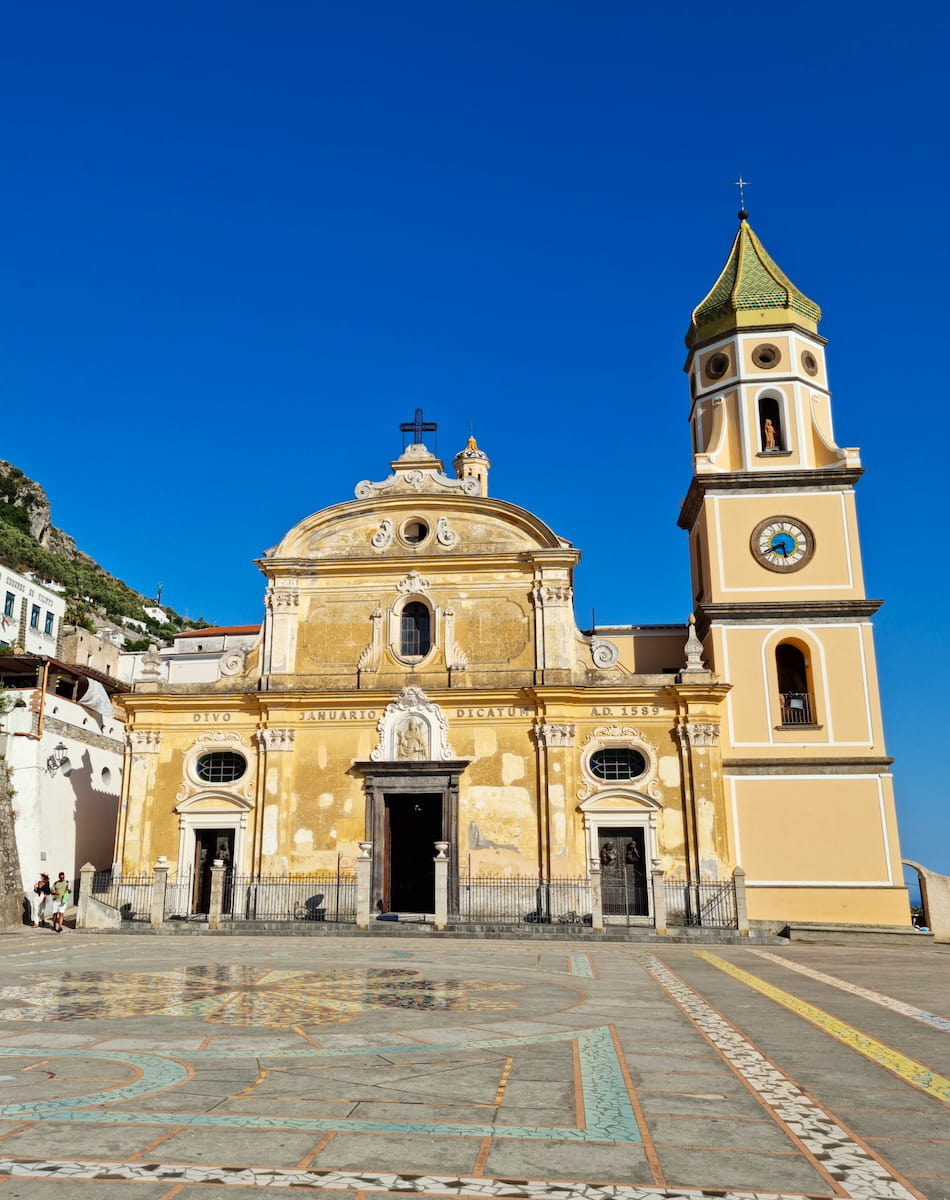
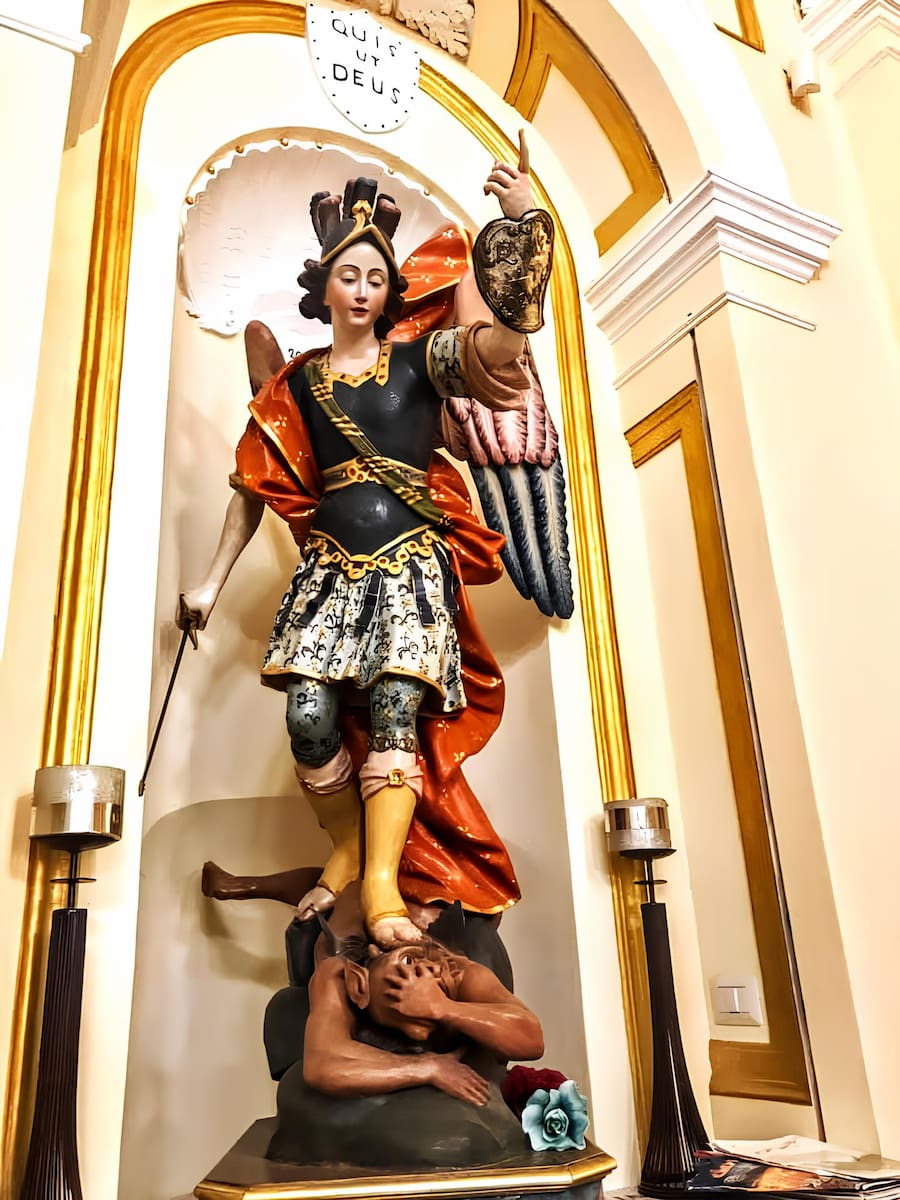
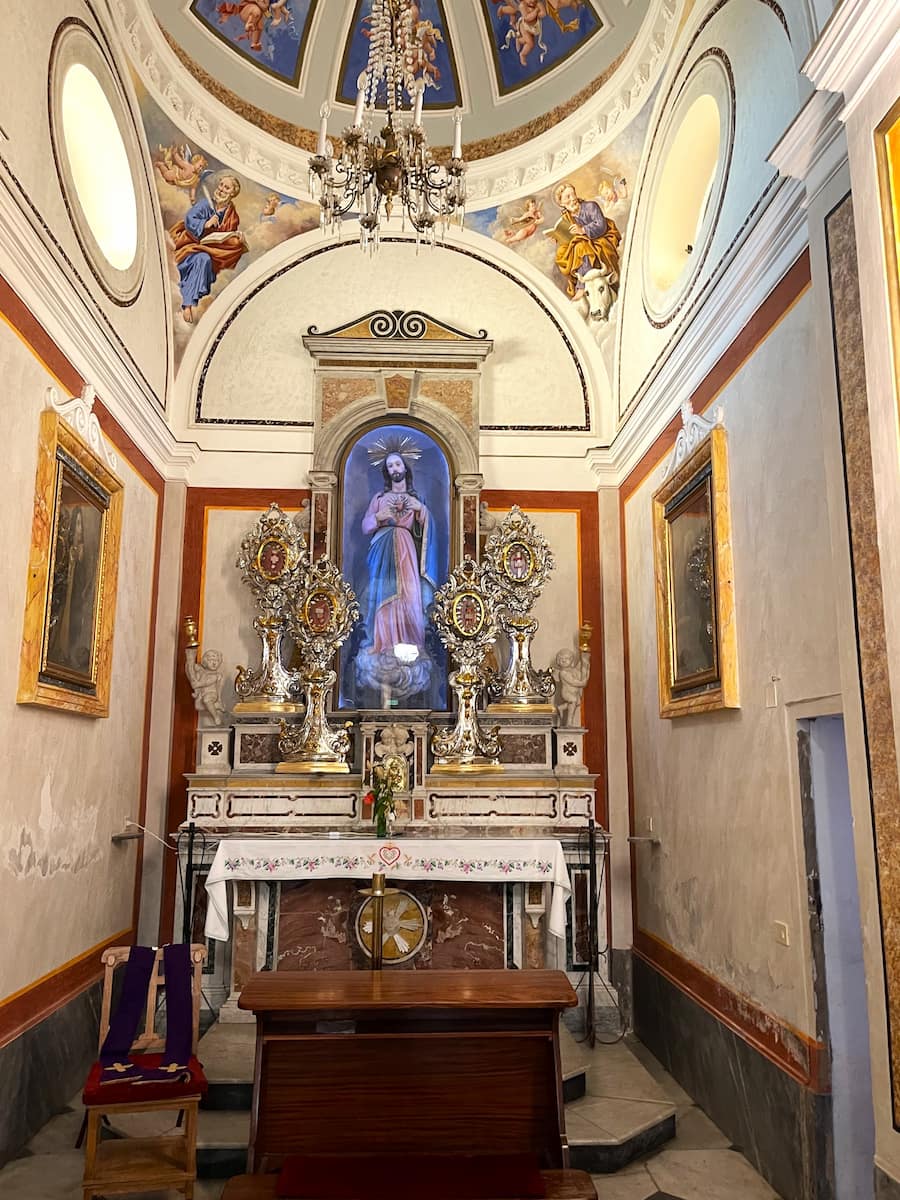
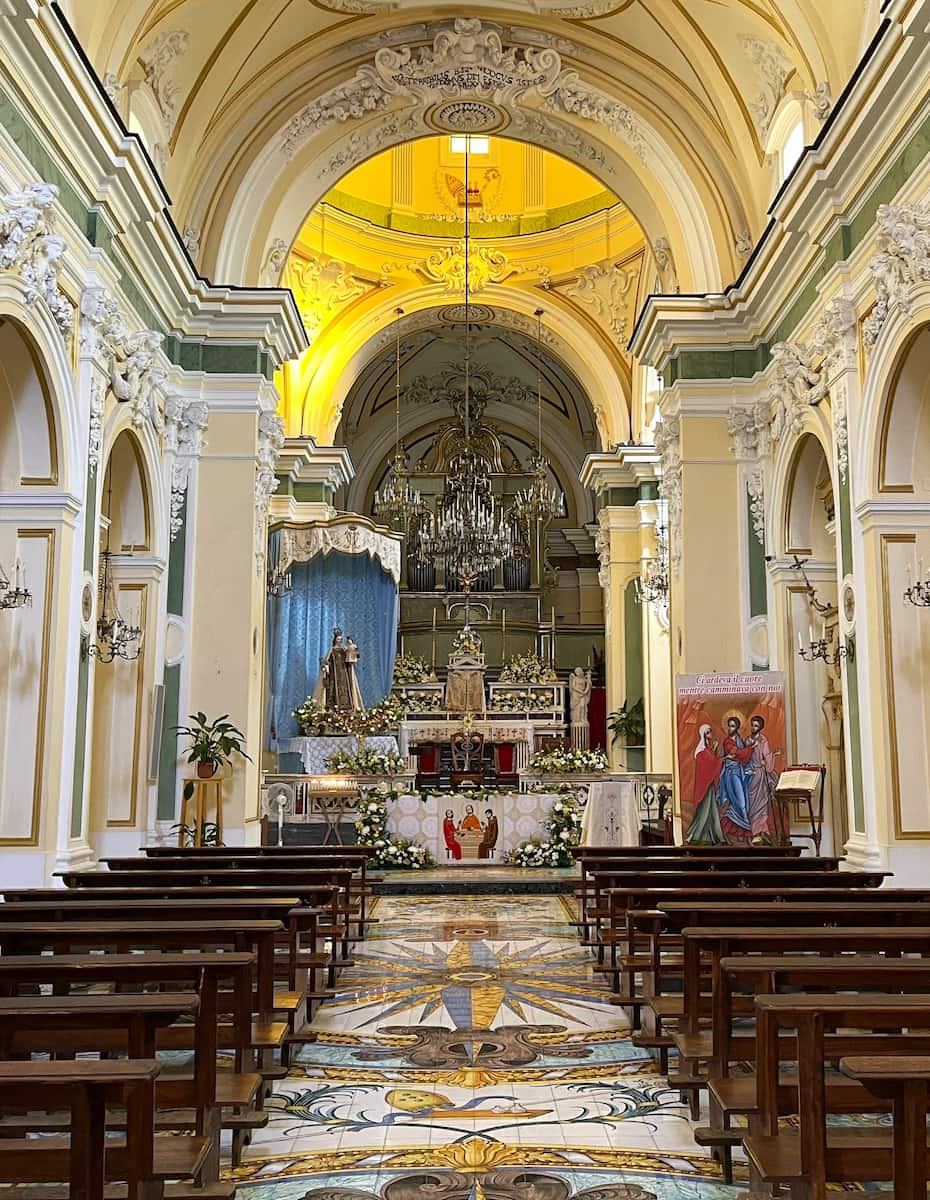
| Interior Highlights | Location in Church |
|---|---|
| Silver Bust of San Gennaro | Right Side Altar |
| 18th Century Nativity Scene | Left Transept |
| Majolica Floor Tiles | Central Nave |
| Baroque Wooden Pulpit | Right Side of Nave |
Visiting Details. The church is open daily from 8:00 AM to 12:00 PM and again from 4:00 PM to 7:00 PM (8:00 PM in summer). Entry is free, though donations for maintenance are appreciated. Photography is permitted without flash. Women should cover their shoulders when entering (a light scarf is sufficient), and men should remove hats. The church is fully accessible with a ramp at the side entrance for those with mobility issues.
5. Parrocchia di San Luca Evangelista
Ancient Origins. The Parish Church of Saint Luke the Evangelist dates back to the 11th century, making it one of the oldest structures in Praiano. Located in the upper part of town, I reached this historic church after a pleasant walk through narrow lanes lined with bougainvillea. The simple white façade gives little hint of the church’s age, but the weathered stone steps leading to the entrance speak of centuries of faithful visitors.
Byzantine Influences. Inside, I was surprised by the Byzantine elements that distinguish this church from others along the coast. The layout follows a Greek cross plan rather than the Latin cross typical of Roman Catholic churches. The central dome allows natural light to illuminate the space in a particularly beautiful way during morning hours. Several icons in the Byzantine style reflect the historical connections between this region and the Eastern Mediterranean.
- Architectural Elements to Notice:
- Greek cross floor plan with equal arms
- Central dome with original frescoes (partially preserved)
- Marble columns repurposed from ancient Roman buildings
- Bell tower with distinctive Arab-Norman influences
Quiet Reflection. Unlike San Gennaro, which serves as the town’s main church, San Luca offers a more contemplative atmosphere. During my visit, I encountered only a handful of other visitors, creating a peaceful environment for appreciation of the space. The acoustics are remarkable – even whispers seem to carry throughout the church, creating an almost mystical quality to the silence.
Local Connection. A friendly elderly woman who helps maintain the church shared that San Luca has special significance for Praiano’s seafaring families. For centuries, fishermen and sailors have come here before voyages to pray for safe return. The small side chapel dedicated to the Madonna del Carmine contains numerous ex-votos – small silver tokens left in gratitude for prayers answered, many in the shape of boats or depicting rescue from storms at sea.
9. Promenade Walks
Coastal Pathways. Praiano offers several scenic promenades that showcase the town’s spectacular setting without costing a cent. My favorite route begins at Piazza San Gennaro and follows Via Masa, a pedestrian pathway that hugs the coastline offering continuous sea views. This gently sloping path is paved and suitable for all fitness levels, making it an accessible activity for everyone.
Changing Perspectives. What makes these walks special is how the scenery transforms with each curve in the path. One moment you’re looking directly at Positano in the distance, and around the next bend, the view opens to reveal the Li Galli islands or the dramatic cliffs of Capo Sottile. I found myself stopping frequently to photograph these changing vistas.
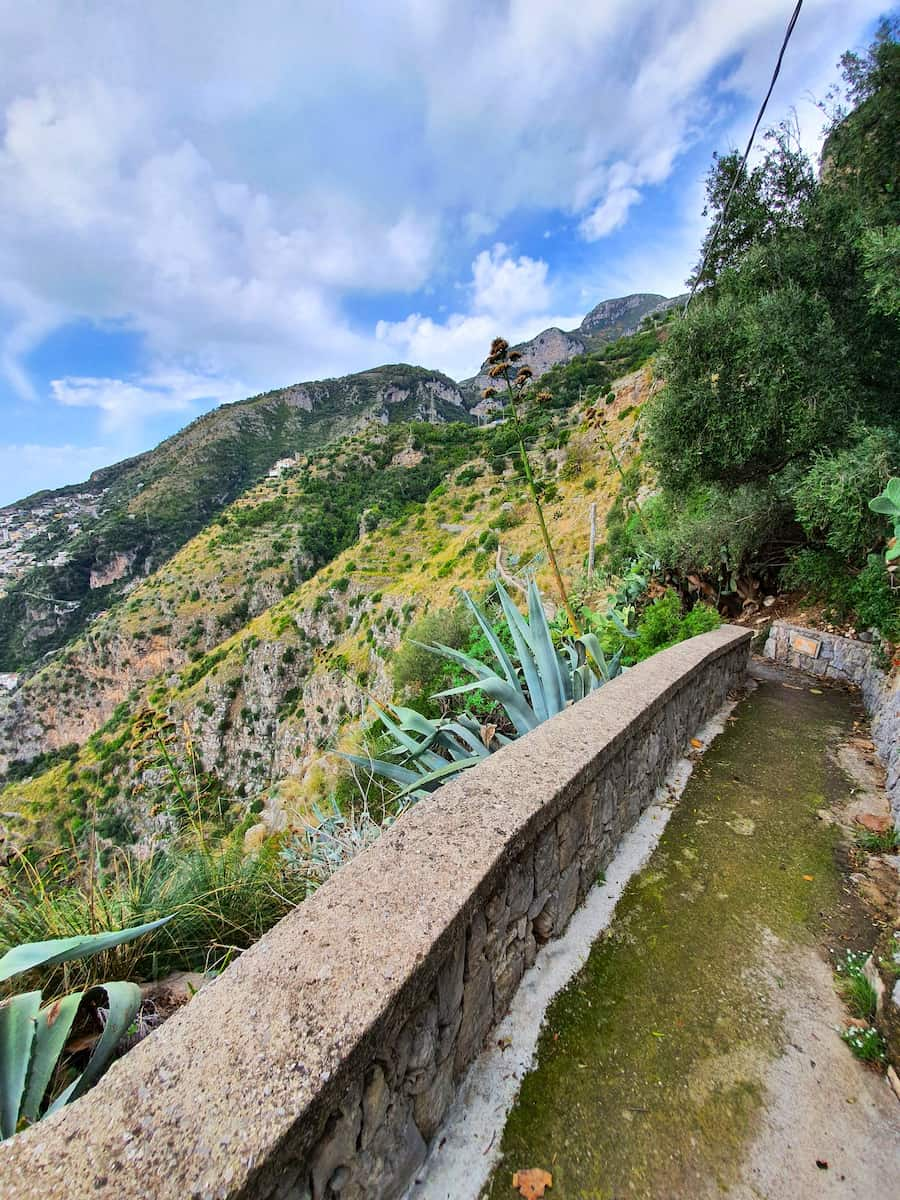
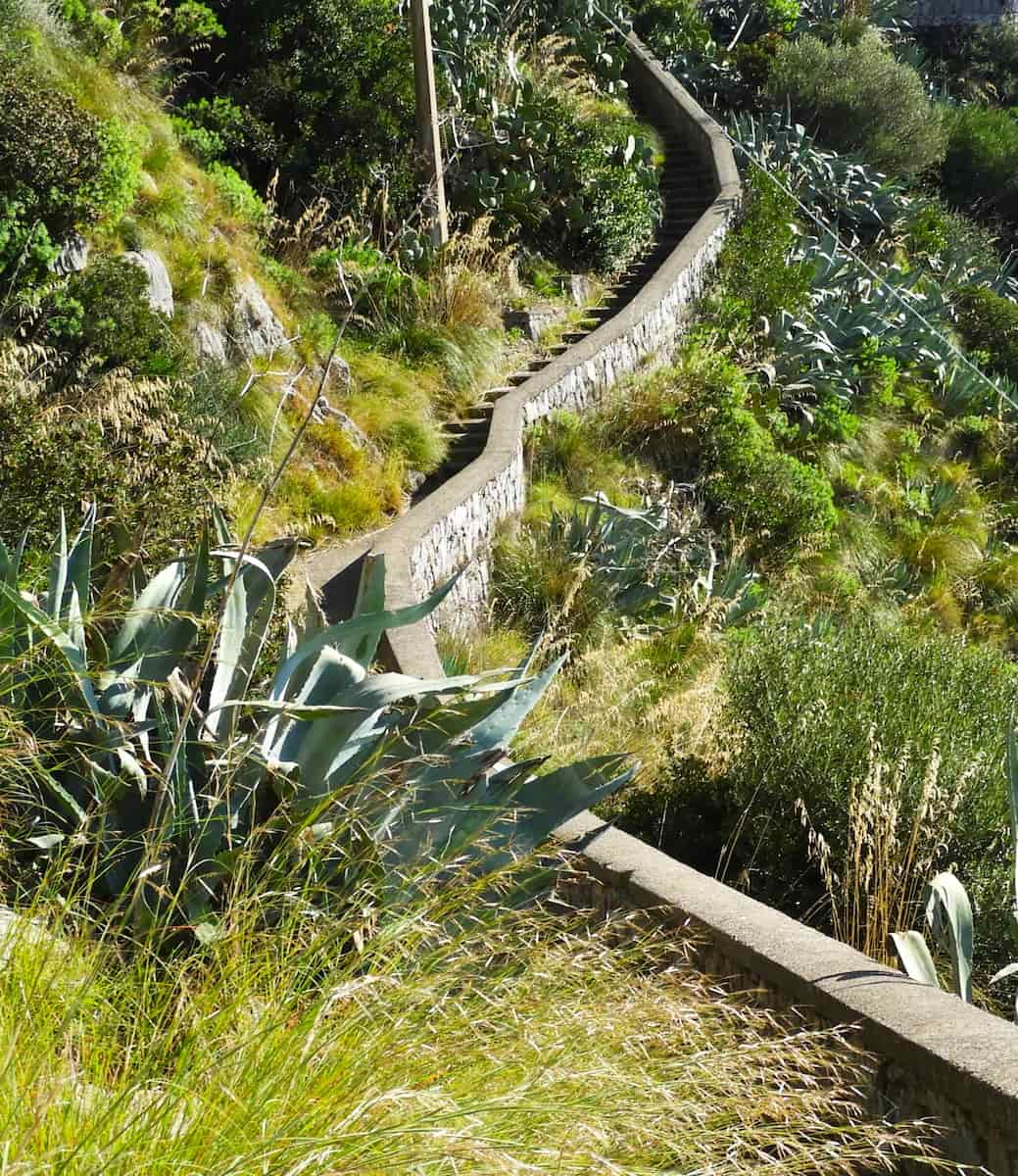
| Recommended Routes | Distance | Difficulty | Features |
|---|---|---|---|
| Via Masa Coastal Walk | 1.2 km | Easy | Benches, shade spots |
| Upper Town Circuit | 1.8 km | Moderate | Church views, local neighborhoods |
| Marina di Praia Path | 0.8 km | Easy-Moderate | Fishing village, beach access |
Timing Suggestions. Early morning (7:00-9:00 AM) offers the coolest temperatures and beautiful light for photography, plus you’ll see fishermen returning with their catch. Alternatively, the hour before sunset bathes the limestone cliffs in a golden glow that transforms the landscape. The promenades are well-lit in the evening, making after-dinner walks a pleasant option during summer when temperatures are more comfortable after dark.
10. Old Town Exploration
Medieval Maze. Praiano’s old town center consists of narrow lanes and stepped pathways that have remained largely unchanged for centuries. I spent a fascinating morning simply wandering these ancient routes, discovering hidden courtyards, centuries-old doorways, and unexpected viewpoints. The vertical layout of the town means that exploration inevitably involves climbing, but each new elevation reveals different perspectives of the coast.
Architectural Details. What captivated me most were the small details that tell stories of Praiano’s past – stone arches connecting buildings across narrow streets (originally designed to provide structural support against earthquakes), carved family crests above doorways, and traditional exterior staircases that maximize living space in the compact dwellings. Many homes feature the distinctive vaulted ceilings typical of Amalfi Coast architecture.
- Noteworthy Old Town Features:
- Ceramic street signs hand-painted with local scenes
- Miniature shrines to the Madonna built into walls at intersections
- Ancient stone washing basins still visible in some courtyards
- Repurposed fishing boats serving as planters for flowers and herbs
Artistic Discoveries. Praiano has embraced public art in recent years, and exploring the old town reveals numerous murals and installations that contrast with the historic setting. I was particularly impressed by the “NaturArte Project” which has transformed several blank walls into vibrant artworks inspired by local marine life and landscapes. These contemporary additions create an interesting dialogue with the town’s medieval character.
Navigation Tips. Getting lost in the old town is part of the experience, but I found it helpful to keep the sea in view as a reference point. The main landmarks of Chiesa di San Gennaro and Piazza San Luca can help reorient you if needed. Most pathways eventually connect to either the upper road (Via Gennaro Capriglione) or lower coastal routes. Comfortable shoes are essential, as many surfaces are uneven stone that becomes slippery when wet.
Seasonal Activities
Christmas in Praiano
Festive Illuminations. Praiano transforms during the Christmas season with twinkling lights adorning the narrow streets and main piazzas. I was charmed by the unique nautical theme of many decorations – fishing nets strung with lights, boat-shaped displays, and star formations that guide the way through town. The lighting ceremony typically occurs on December 8 (Feast of the Immaculate Conception) and remains until January 6 (Epiphany).
Living Nativity. The highlight of Christmas in Praiano is the Presepe Vivente (Living Nativity) staged in the ancient pathways near Convento di Santa Maria a Castro. Local residents dress in period costumes and recreate scenes from daily life in Biblical times – blacksmiths, bakers, shepherds, and of course, the Holy Family. This immersive experience takes place on December 26 and 27 from 6:30 PM to 9:00 PM, illuminated by torches and lanterns.
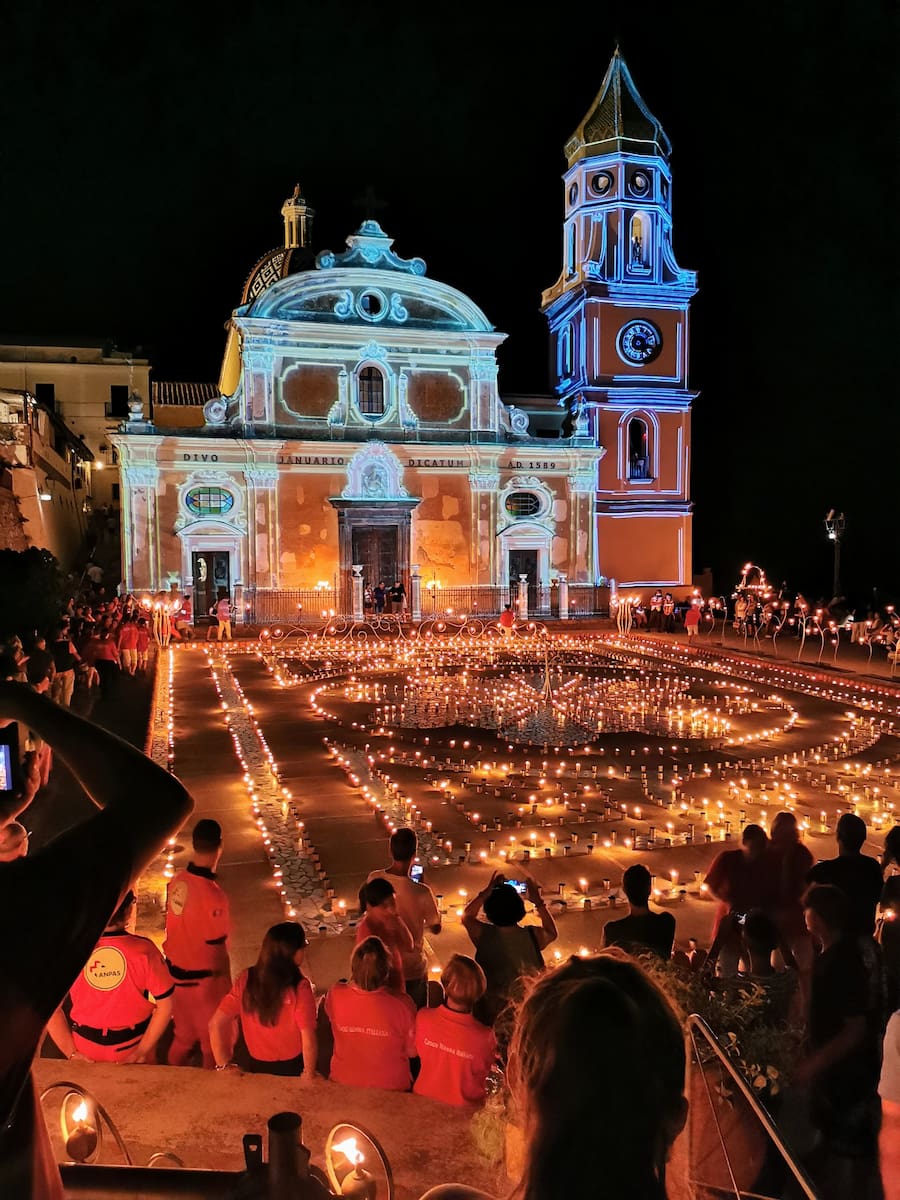
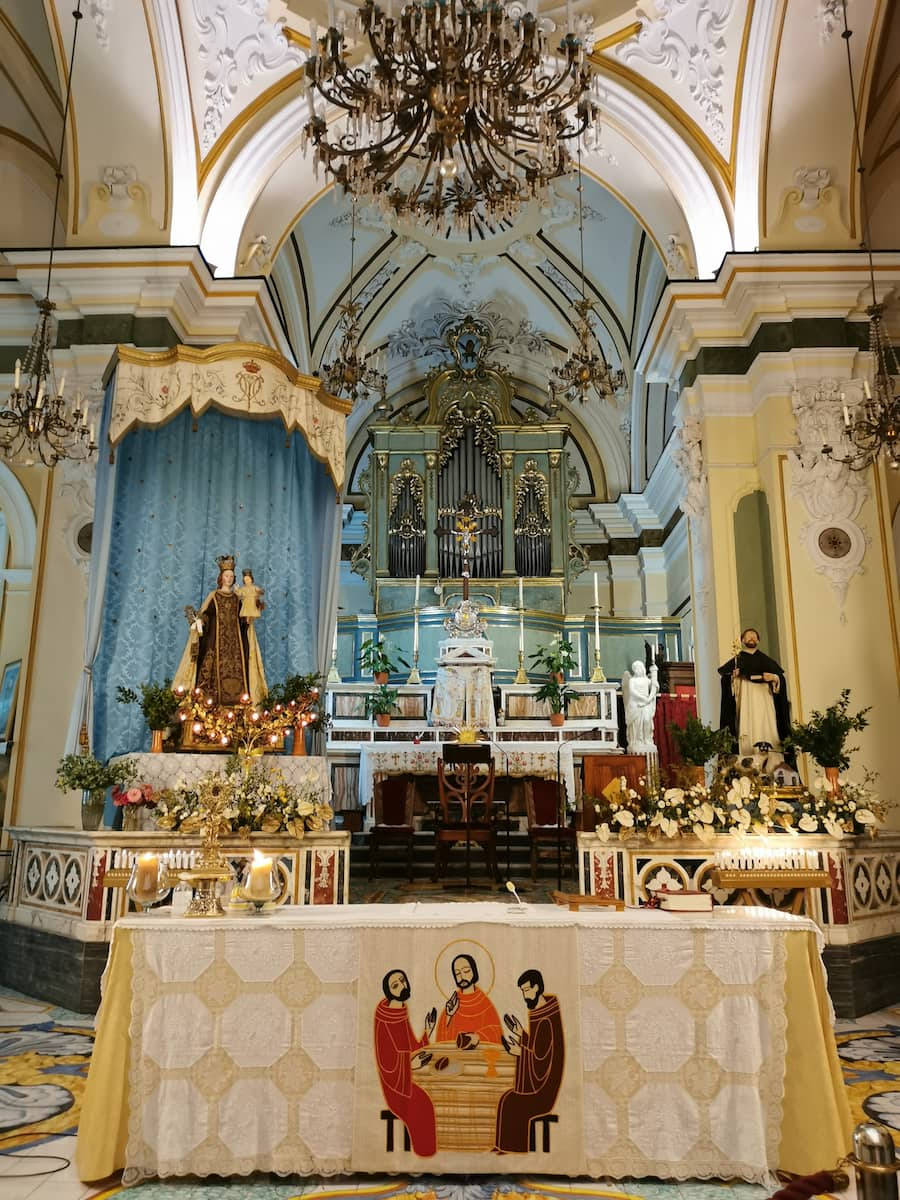
| Christmas Events | Dates | Location |
|---|---|---|
| Christmas Market | Dec 15-23 | Piazza San Gennaro |
| Living Nativity | Dec 26-27 | Convento di Santa Maria a Castro |
| Midnight Mass | Dec 24 | Chiesa di San Gennaro |
| Epiphany Procession | Jan 6 | Throughout town |
Culinary Traditions. The Christmas season brings special foods that aren’t available year-round. I discovered that local bakeries produce struffoli (honey-soaked dough balls) and roccoco (hard ring-shaped cookies) only during this period. Restaurants offer special menus for Christmas Eve (traditionally seafood-based) and Christmas Day (featuring meat dishes). The Pasticceria Pansa in the town center makes exceptional panettone with local lemon zest.
Practical Considerations. While December brings fewer tourists, many restaurants and shops operate on reduced winter hours. I recommend checking opening times in advance. The weather is mild compared to northern Europe (average 10-15°C/50-59°F), but evenings can be chilly, so layers are essential. The Christmas events create a magical atmosphere that showcases Praiano’s community spirit and traditions in a way that summer visitors rarely experience.
Summer Festivals and Events
Music Under the Stars. Praiano’s summer calendar features several notable music events, with the Luminaria di San Domenico (August 1-4) being the most spectacular. This festival combines music, art, and thousands of candles illuminating the town’s pathways and staircases. I attended a classical guitar concert held in the church courtyard during this festival and was mesmerized by the combination of acoustic excellence and magical setting.
Gastronomic Celebrations. The Sagra del Pesce (Fish Festival) transforms Marina di Praia into an open-air restaurant for three evenings in mid-July. Local fishermen provide the catch, which is prepared according to traditional recipes by Praiano’s best chefs. For a fixed price of €25 ($27), I enjoyed unlimited seafood dishes, local wine, and live folk music. The atmosphere was convivial, with long communal tables encouraging conversation between visitors and locals.
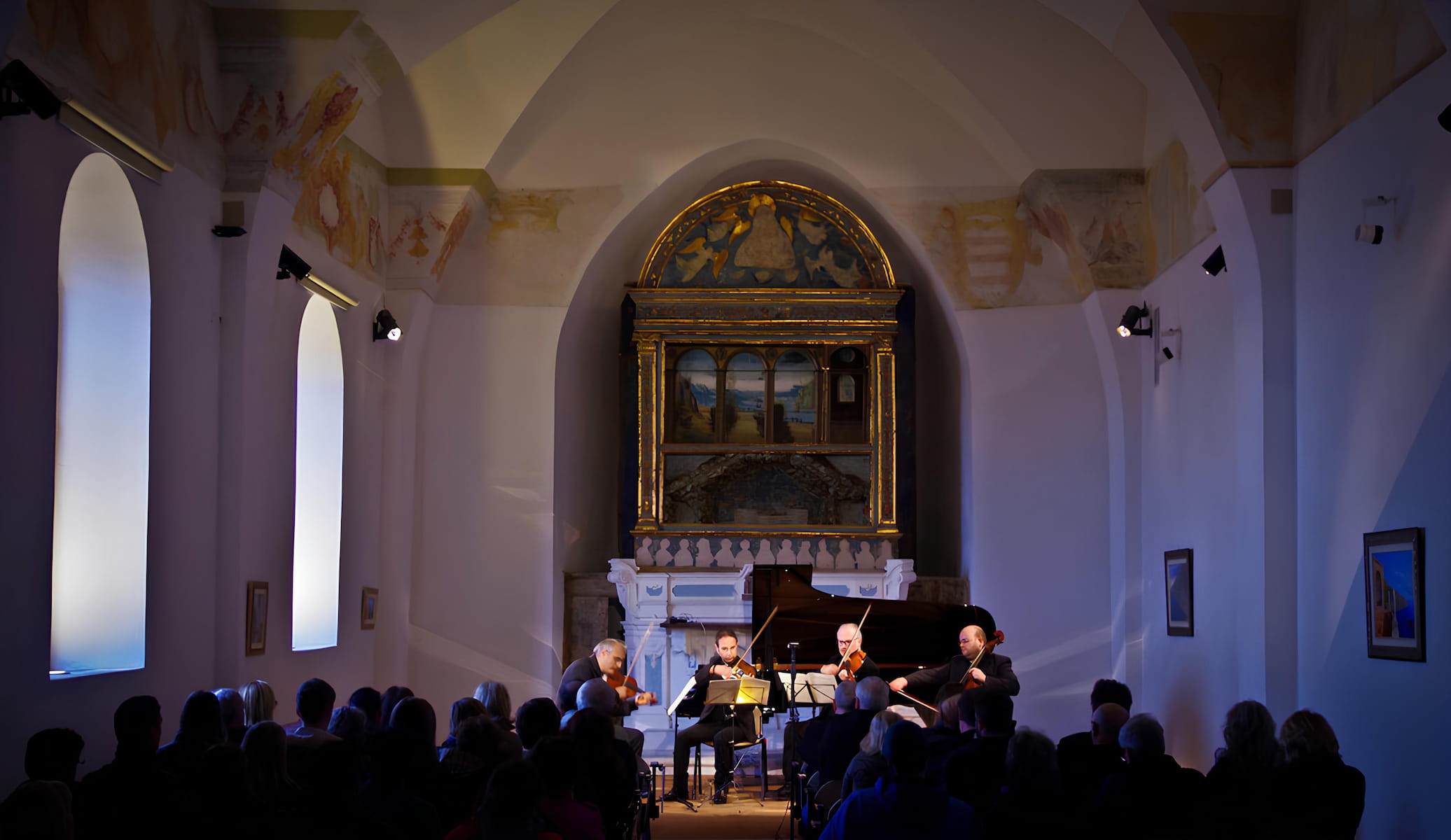
- Major Summer Events:
- Luminaria di San Domenico (August 1-4)
- Sagra del Pesce (mid-July, dates vary)
- Feast of San Gennaro (September 19)
- Praiano Chamber Music Festival (June 10-20)
Beach Competitions. Throughout July and August, Marina di Praia hosts informal swimming races and beach volleyball tournaments that welcome visitor participation. I joined a friendly volleyball match one afternoon and, despite my limited skills, was welcomed enthusiastically by the local team. These spontaneous events typically occur on weekend afternoons and are announced on notice boards near the beach.
Spring Blooms in Local Parks
Wildflower Explosion. April and May bring an extraordinary display of wildflowers to Praiano’s hillsides and parks. I discovered that the terraced gardens of Parco La Moressa offer the best viewing, with poppies, daisies, and wild orchids creating carpets of color against the blue sea backdrop. The mild spring temperatures (18-22°C/64-72°F) make this the perfect season for extended walks through these natural gardens.
Lemon Blossom Season. Praiano’s famous lemon groves burst into fragrant white blossoms in late March through April. The delicate citrus scent permeates the entire town, especially in the early morning and evening when the air is still. I found the path to Convento di Santa Maria a Castro particularly beautiful during this period, as it passes through several traditional lemon groves where farmers still harvest using centuries-old methods.
| Spring Bloom Calendar | Peak Viewing Time |
|---|---|
| Lemon Blossoms | Late March – Mid April |
| Wild Orchids | April |
| Poppies | Late April – May |
| Bougainvillea | May – June |
Bird Watching. Spring brings migratory birds to the Amalfi Coast, making this an excellent time for bird enthusiasts. Early mornings at Parco La Moressa or along the higher paths near Torre di Grado offer opportunities to spot various species. I was surprised to see peregrine falcons nesting in the cliffs and colorful European bee-eaters passing through on their migration route. The local tourist office can provide a simple guide to common species.
Photography Walks. The combination of spring flowers, clear air, and fewer tourists makes this season ideal for photography. I participated in a free community photography walk (organized through the Pro Loco office in the town center) that focused specifically on capturing spring blooms against architectural elements. These walks typically occur on Sunday mornings in April and May and welcome photographers of all skill levels.
Autumn Foliage Walks
Golden Landscapes. While the Amalfi Coast isn’t known for dramatic fall foliage like northern regions, Praiano’s hillsides take on subtle golden and russet hues from late October through November. I found the inland paths above the town particularly beautiful during this season, with chestnut trees and native shrubs creating a warm color palette that contrasts with the ever-blue Mediterranean below.
Harvest Activities. Autumn is olive harvest season in Praiano, and many groves welcome visitors to observe or even participate in the traditional harvesting methods. I spent a fascinating morning watching a family collect olives using long wooden poles to gently knock the fruit onto nets spread beneath the trees. The olives are then taken to the local frantoio (olive mill) for pressing into the region’s prized oil.
- Best Autumn Walking Routes:
- Sentiero degli Dei (Path of the Gods) – less crowded than summer
- Upper Praiano Circuit – passes through olive groves
- Vettica Maggiore to Praiano – offers views of changing foliage
- Praiano to Furore – includes the famous fjord bridge
Mushroom Foraging. The autumn rains bring wild mushrooms to the wooded areas above Praiano. While I wouldn’t recommend independent foraging without local expertise, I joined a guided mushroom walk organized by Ristorante Costa Diva that combined education with culinary rewards. We learned to identify several edible varieties, and the chef prepared our findings as part of a special lunch. These tours operate on Wednesdays in October and November, weather permitting.
Weather Considerations. Autumn brings variable weather to the Amalfi Coast, with brilliant sunny days interspersed with dramatic storms. I found this atmospheric diversity particularly photogenic – the clarity following rainfall creates exceptional visibility for landscape photography. Temperatures remain mild (15-20°C/59-68°F) through October, making hiking comfortable. Pack a light raincoat and layers for changing conditions. The seasonal transition brings fewer tourists but most facilities remain open until early November.
Day Trip from Praiano
1. Positano
Fashion and Scenery. Just a short 15-minute bus ride from Praiano, Positano offers a completely different atmosphere with its fashion boutiques, art galleries, and dramatically vertical townscape. I spent a day exploring the narrow lanes that wind down to the main beach, discovering unique shops selling handmade sandals, linen clothing, and ceramic homewares. The town’s pastel-colored buildings stacked against the mountainside create the iconic view that appears on countless postcards.
Beach Experience. Spiaggia Grande, Positano’s main beach, offers a livelier scene than Praiano’s quieter coves. I rented a lounger (€20/$21.50) for a few hours to people-watch and swim in the clear waters. For a more secluded experience, I walked the short path around the headland to Fornillo Beach, which attracts fewer day-trippers and offers more reasonable prices for beach services.
| Transportation Options | Travel Time | Cost |
|---|---|---|
| SITA Bus | 15 minutes | €2 ($2.15) one-way |
| Water Taxi | 10 minutes | €15 ($16) one-way |
| Private Boat Rental | Flexible | €150+ ($160+) half-day |
| Walking Path | 1.5 hours | Free |
Culinary Highlights. Positano’s dining scene tends toward the upscale, but I found excellent value at Da Vincenzo, a family-run trattoria on Viale Pasitea serving traditional dishes with a focus on seafood. Their linguine with zucchini and provolone is a local specialty worth trying (€18/$19.30). For a quick, affordable lunch, I recommend Casa e Bottega for fresh salads and smoothies in a charming garden setting.
Timing Strategy. Positano becomes extremely crowded between 11:00 AM and 4:00 PM when day-trippers and tour groups arrive. I found early morning (before 10:00 AM) ideal for photography and shopping, while late afternoon offers a more relaxed atmosphere as the crowds thin out. The golden hour before sunset bathes the town in magical light, perfect for capturing that classic Positano shot from the eastern approach. The last SITA bus back to Praiano departs at 10:20 PM in summer (earlier in off-season).
⭐ Best Activities
- Positano: Ravioli & Tagliatelle Cooking Class – Learn to make traditional Italian pasta dishes in this hands-on cooking class in beautiful
2. Amalfi
Historical Significance. As the namesake of the entire coast, Amalfi offers a deeper historical experience than other towns in the region. I spent a fascinating day exploring the town that was once a powerful maritime republic rivaling Venice and Genoa. The bus journey from Praiano takes approximately 25 minutes, winding along the coastal road with glorious views at every turn.
Cathedral Complex. The centerpiece of Amalfi is its stunning Duomo di Sant’Andrea (Cathedral of St. Andrew), with its striking striped marble and stone façade and grand staircase. I paid the €3 ($3.25) entrance fee to explore the cathedral, cloister, and museum, which houses religious artifacts and tells the story of Amalfi’s golden age. The Byzantine-influenced architecture reflects the town’s historical trading connections with the East.
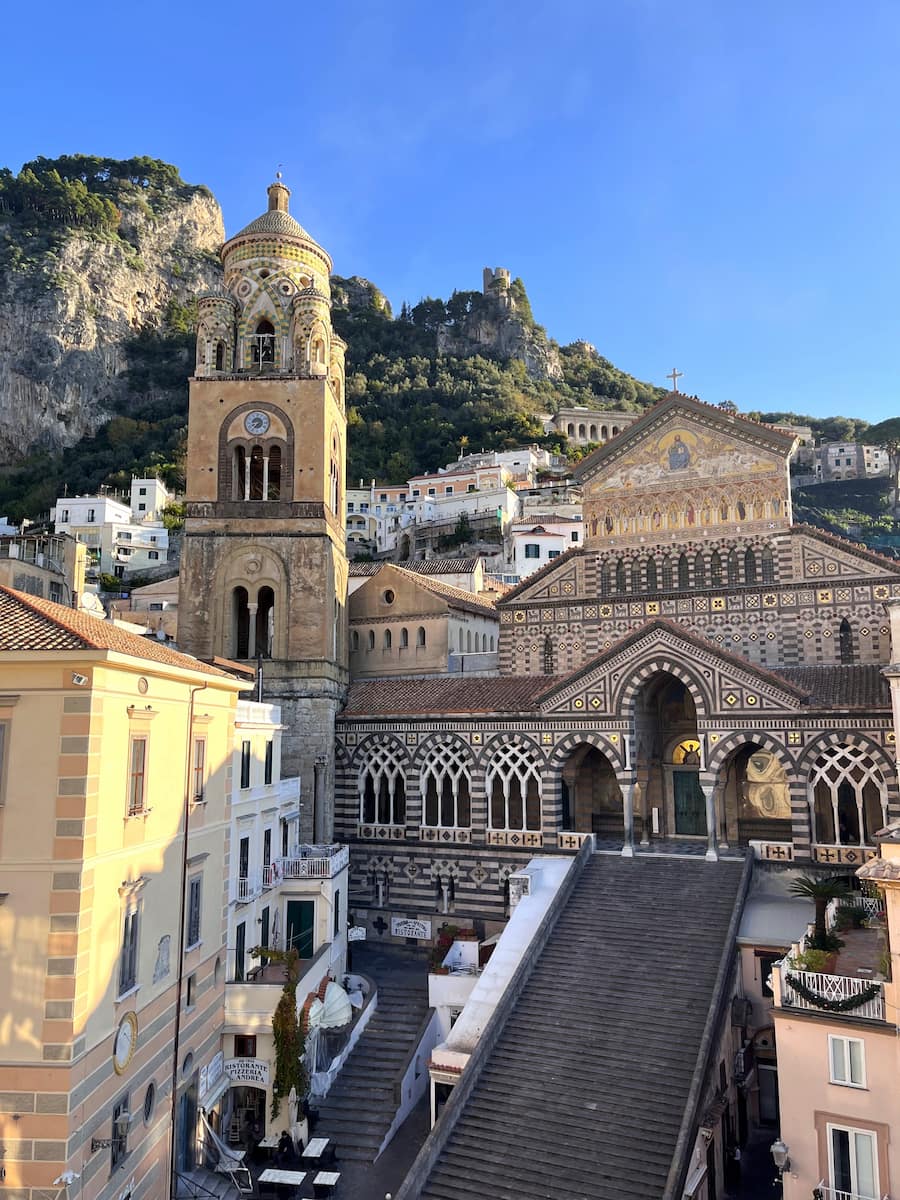
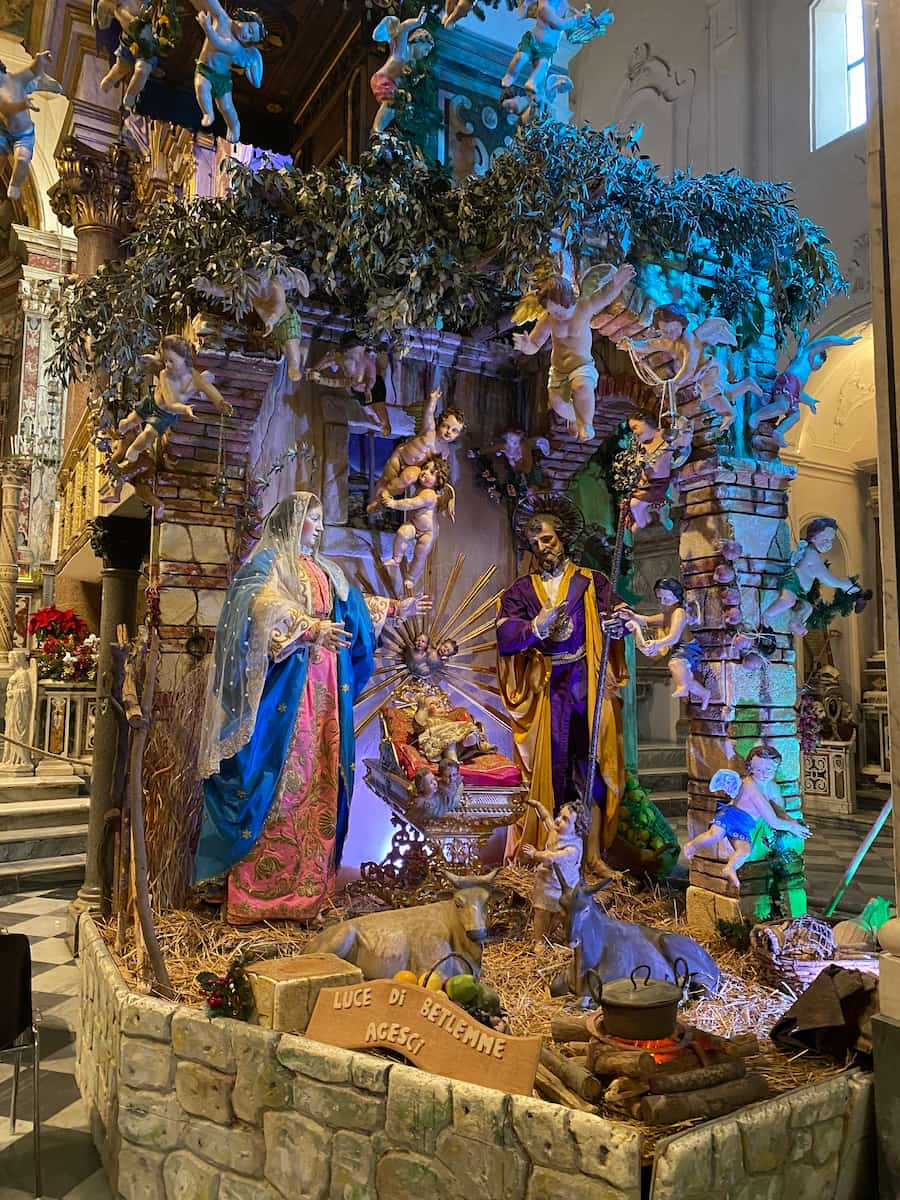
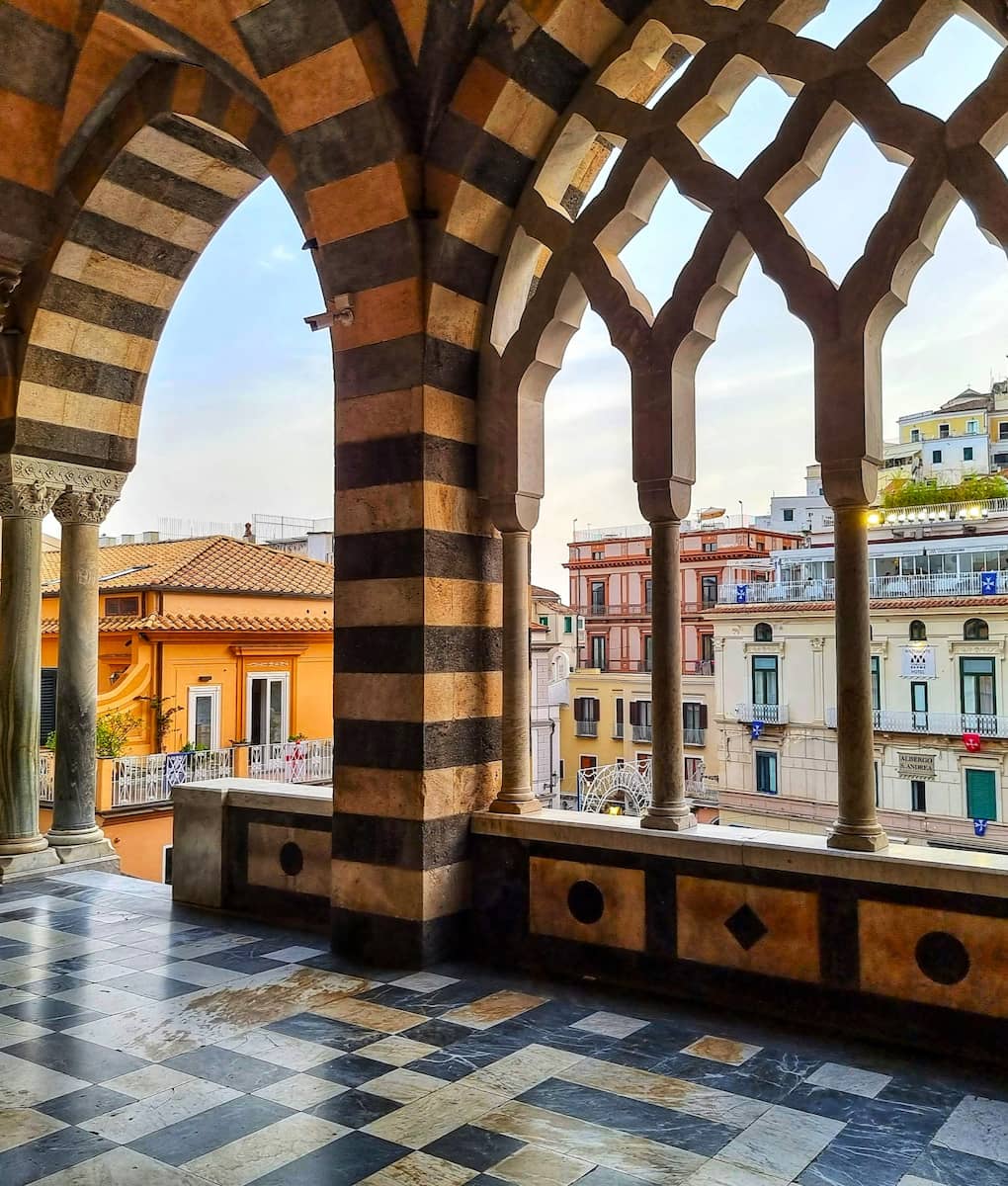
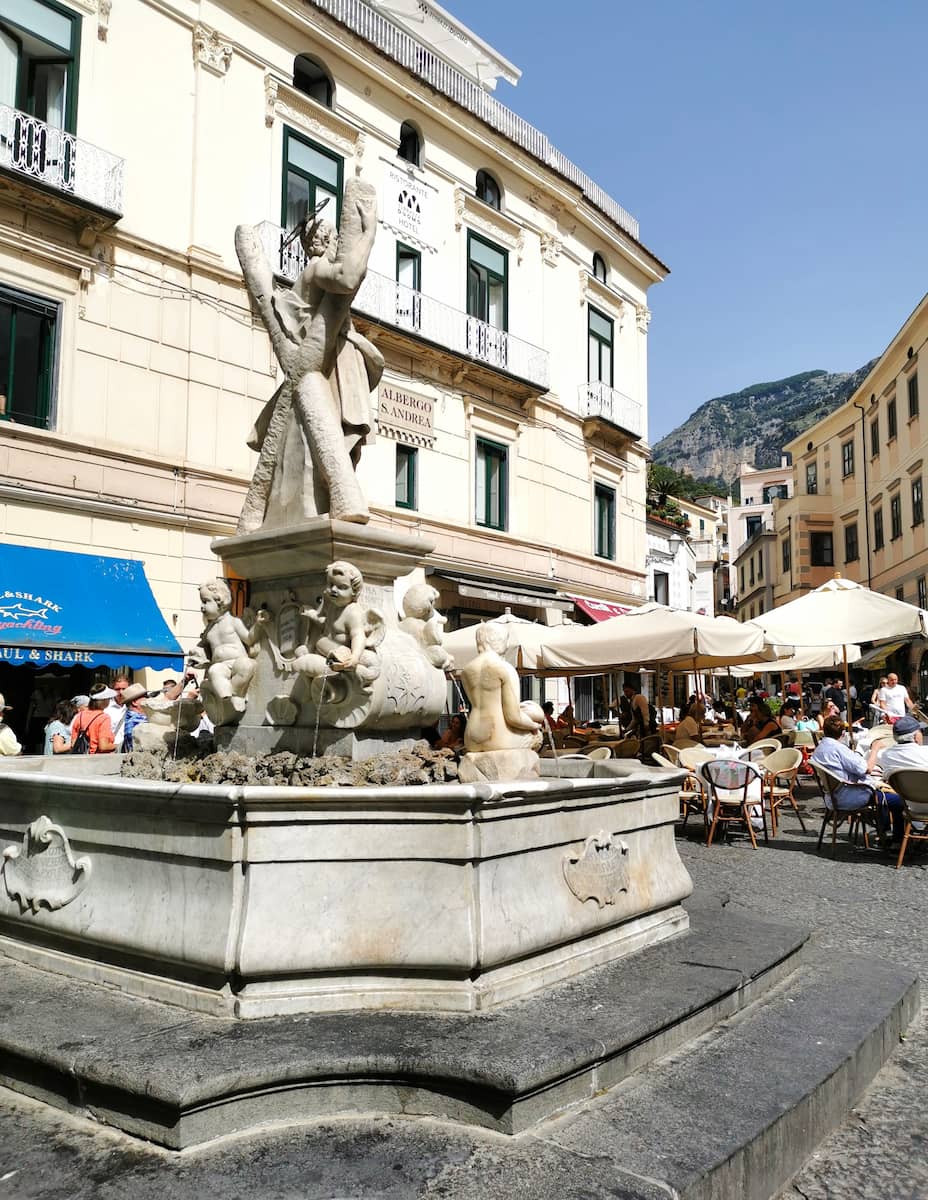
- Must-See Attractions in Amalfi:
- Duomo di Sant’Andrea and its Cloister of Paradise
- Museo della Carta (Paper Museum)
- Ancient Arsenal of the Republic
- Valle dei Mulini (Valley of the Mills)
- Piazza del Duomo
Paper Museum. One of Amalfi’s unique attractions is the Museo della Carta (Paper Museum), housed in a 13th-century paper mill. For €4.50 ($4.85), I learned about Amalfi’s centuries-old tradition of papermaking, introduced by the Arabs and once a major export. The museum includes demonstrations of traditional handmade paper production using original tools and methods. I purchased beautiful handmade stationery as gifts – more meaningful souvenirs than typical tourist items.
⭐ Best Activities
- Amazing Amalfi Coast Private Boat Tour from Positano, Praiano or Amalfi – Enjoy a personalized tour of the Amalfi Coast with departures from Positano, Praiano, or Amalfi.
3. Capri by Boat
Island Elegance. A day trip to Capri from Praiano offers a glimpse into a world of luxury and natural beauty. I booked a small group boat tour (€80/$86 per person) that departed from Marina di Praia at 9:00 AM. The journey across the Bay of Naples takes approximately 40 minutes and offers spectacular views of the coastline from a different perspective. Larger group tours are available from Amalfi or Positano at slightly lower prices.
| Capri Tour Options | Duration | Price Range |
|---|---|---|
| Small Group (12 max) | 8 hours | €80-100 ($86-107) |
| Private Boat | 8 hours | €350-500 ($375-535) |
| Large Group Ferry + Tour | 8-10 hours | €60-80 ($64-86) |
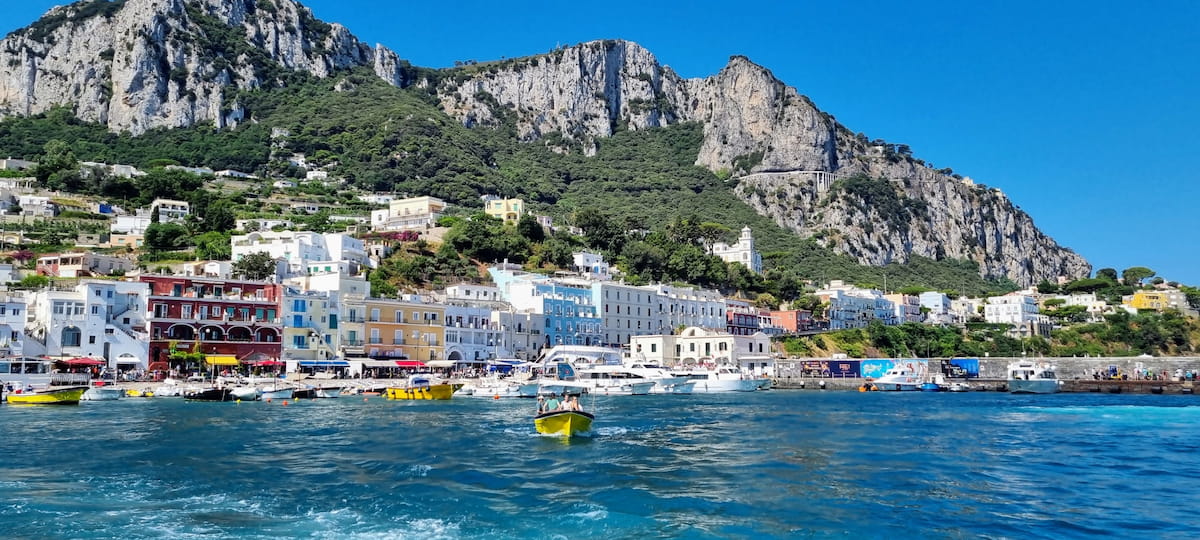
Island Exploration. Upon docking at Marina Grande, I had approximately five hours to explore the island independently. Rather than joining the crowds heading directly to Capri Town, I took the bus to Anacapri (€2/$2.15), the higher and less commercialized town. Here I enjoyed lunch at Le Arcate (pasta with local lemon sauce for €16/$17) before taking the chairlift to Monte Solaro (€12/$13), the island’s highest point, for 360-degree views.
⭐ Best Activities
- Day Trip to Capri – Escape to the beautiful island of Capri for a day of exploration, stunning views, and Mediterranean charm.
4. Pompeii and Wine Tasting
Archaeological Wonder. Combining ancient history with local wine culture creates a perfect day trip from Praiano. I arranged this excursion through a local tour operator (Praiano Experience, €120/$129 per person) who handled all transportation logistics. The journey to Pompeii takes approximately 1.5 hours, first following the coastal road to Sorrento, then continuing inland. While possible to arrange independently using public transportation, the organized tour saved considerable time and stress.
Walking Through History. Arriving at Pompeii by 9:30 AM allowed us to explore before the midday heat and largest crowds. Our guide provided context that brought the ancient city to life, explaining how residents lived before Mount Vesuvius erupted in 79 AD. I was particularly moved by the plaster casts of victims and the remarkably preserved frescoes in wealthy homes. The site is vast – we spent three hours and saw only about 40% of the excavated areas.
- Pompeii Highlights:
- Forum and Temple of Jupiter
- House of the Faun
- Villa of the Mysteries
- Amphitheater
- Lupanar (ancient brothel)
Vineyard Experience. After Pompeii, we traveled 30 minutes to a family-owned vineyard on the slopes of Mount Vesuvius. Cantina del Vesuvio welcomed us with a tour of their organic vineyards, explaining how the volcanic soil creates distinctive mineral notes in their wines. The tasting included six wines paired with local specialties like bruschetta with cherry tomatoes, provolone cheese, and salami. Their signature wine is Lacryma Christi (“Tears of Christ”), available in red, white, and rosé varieties.
Value Consideration. While €120 ($129) might seem expensive initially, the tour included Pompeii entrance fees (€16/$17), an expert guide, transportation, vineyard tour, and a substantial wine tasting with food that served as lunch. Purchasing these components separately would cost more and involve complicated logistics. The tour returned to Praiano by 6:00 PM, making it a full but manageable day. For those interested primarily in Pompeii, less expensive options exist, but the wine tasting component added a relaxing counterpoint to the morning’s historical immersion.
⭐ Best Activities
- Pompeii And Vesuvius from Ravello – Discover the ancient ruins of Pompeii and climb Mount Vesuvius on this fascinating historical tour from Ravello.
FAQ
When is the best time to visit Praiano?
May-June and September-October offer ideal weather with fewer crowds. These shoulder seasons provide warm temperatures for swimming while avoiding the intense heat and tourist congestion of July and August.
How do I get from Naples Airport to Praiano?
The most convenient option is a private transfer, costing approximately €120 ($129). Alternatively, take the Curreri shuttle bus to Sorrento (€10/$11) and then the SITA bus to Praiano (€2/$2.15), though this route takes significantly longer.
Is Praiano suitable for families with young children?
Praiano’s vertical layout and many stairs make it challenging for families with strollers or very young children. However, older children will enjoy the beaches, boat trips, and family-friendly activities like pottery classes and gelato tastings.
